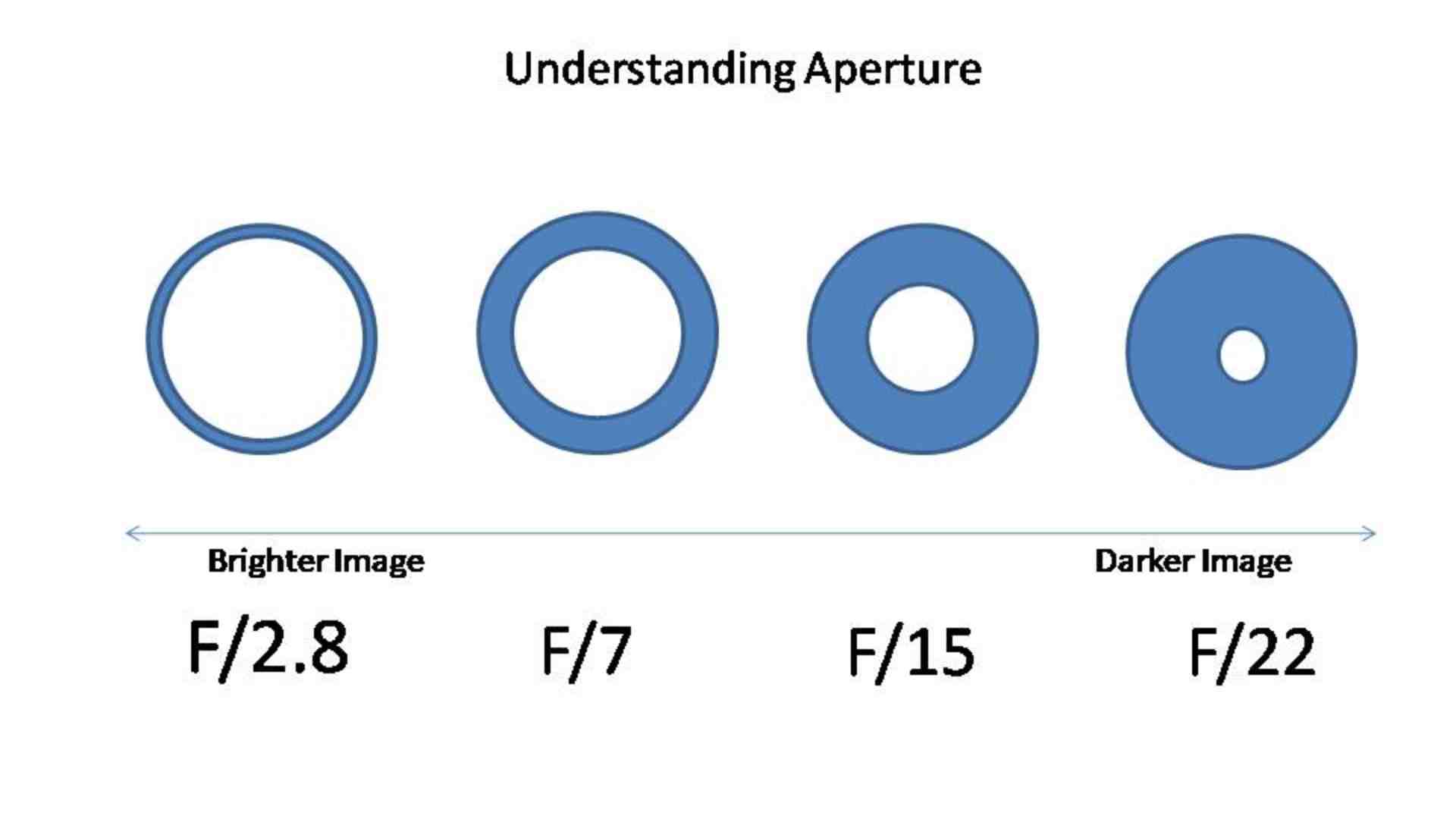
The F number or F stop means focal length of the lens or you can say that measure of light gathering ability of an optical system. F stop number in DSLR camera depends on the camera lens . It does not depends on Camera Body. Your camera lens has define minimum aperture value or F stop focal length on lens . F stop Number also prefer for light optimization and how much light you allow inside the sensor of the camera. Also F stop or Aperture low value and high value makes different in Image in focus parts. Low F / Aperture value like F/2.8 make sharp image only on focus part and rest part in blur and high F/ Aperture value like F/20 make sharp image all focus part . When you Increase and decrease the aperture value or F number in camera you might be increase and decrease in Shutter speed and as well as ISO too.
Understanding F number or Aperture with Shutter speed and ISO :
As shown in main image you can easily understand how aperture or F stop works . It shows that when you use wider aperture like F/2.8 the aperture is wider and more light comes through your lens so the image will be brighter when you use low aperture value. As opposite using high aperture like F/22 the light comes less through your lens and the images are darker. But the main difference in using F number is focus part. It means that when you use aperture at low like F/2.8 your focus image only be a sharp rest part of image will be blurred. And in F/22 your focus parts of images sharpen not blurred I will show you an example of that . But while using F number F/2.8 to F/22 you need to change ISO settings and also A shutter speed too.
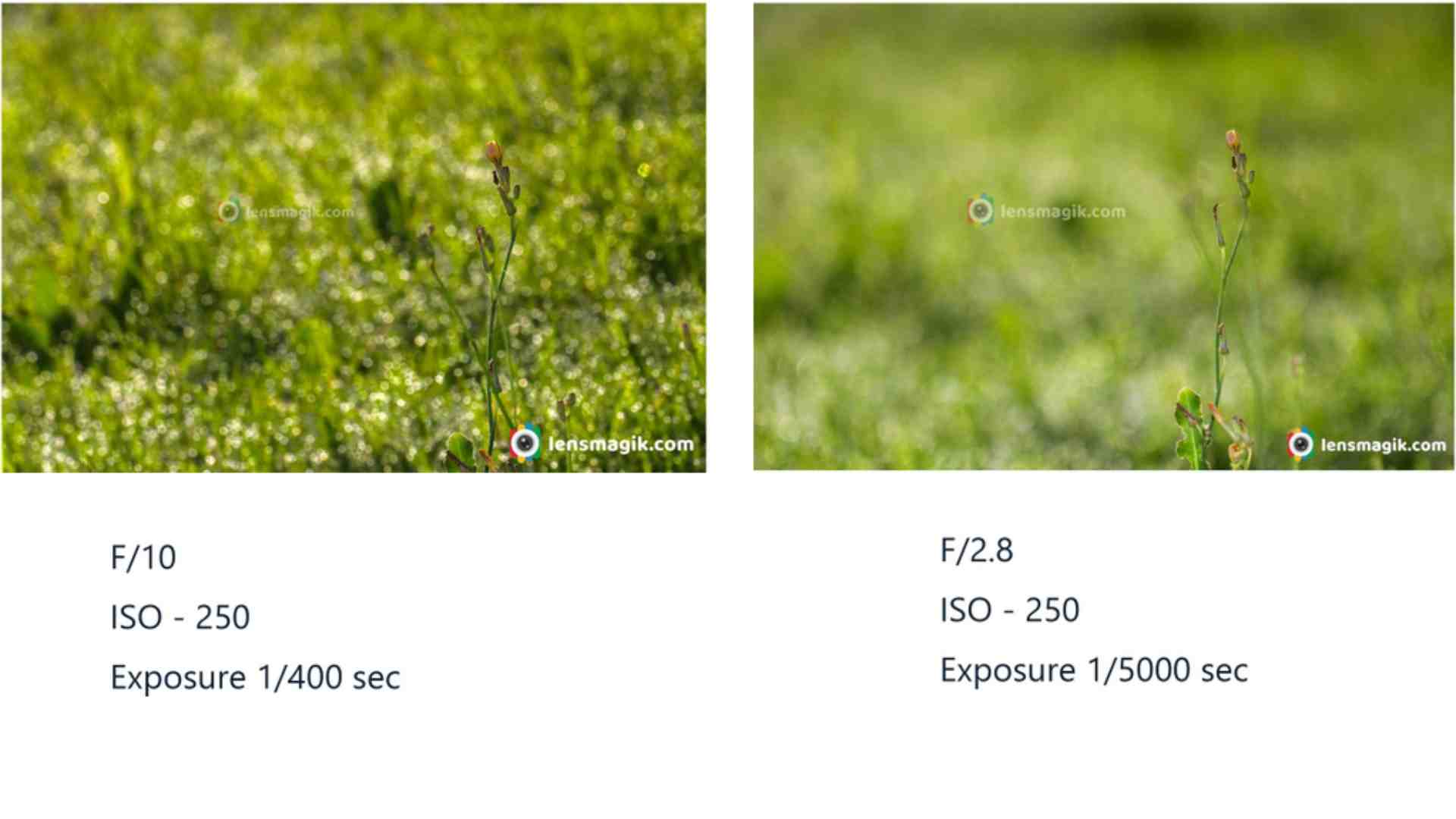
As Shown in Above image you can easily understand how Aperture works with ISO and Shutter speed.
One image is taken with F/10, ISO -250 and Shutter speed 1/400 seconds . In that image you can see the subject clear and also other part of the image also clear in background in compare to other image.
The second image taken with F/2.8, ISO-250 and Shutter speed 1/ 5000 seconds. In that image you can see only subject is sharp rest image is blurred. But the changes i made to shutter speed increase because when i use wider aperture F/2.8 more light comes through lens and image will be more brighter so i increase my shutter speed.
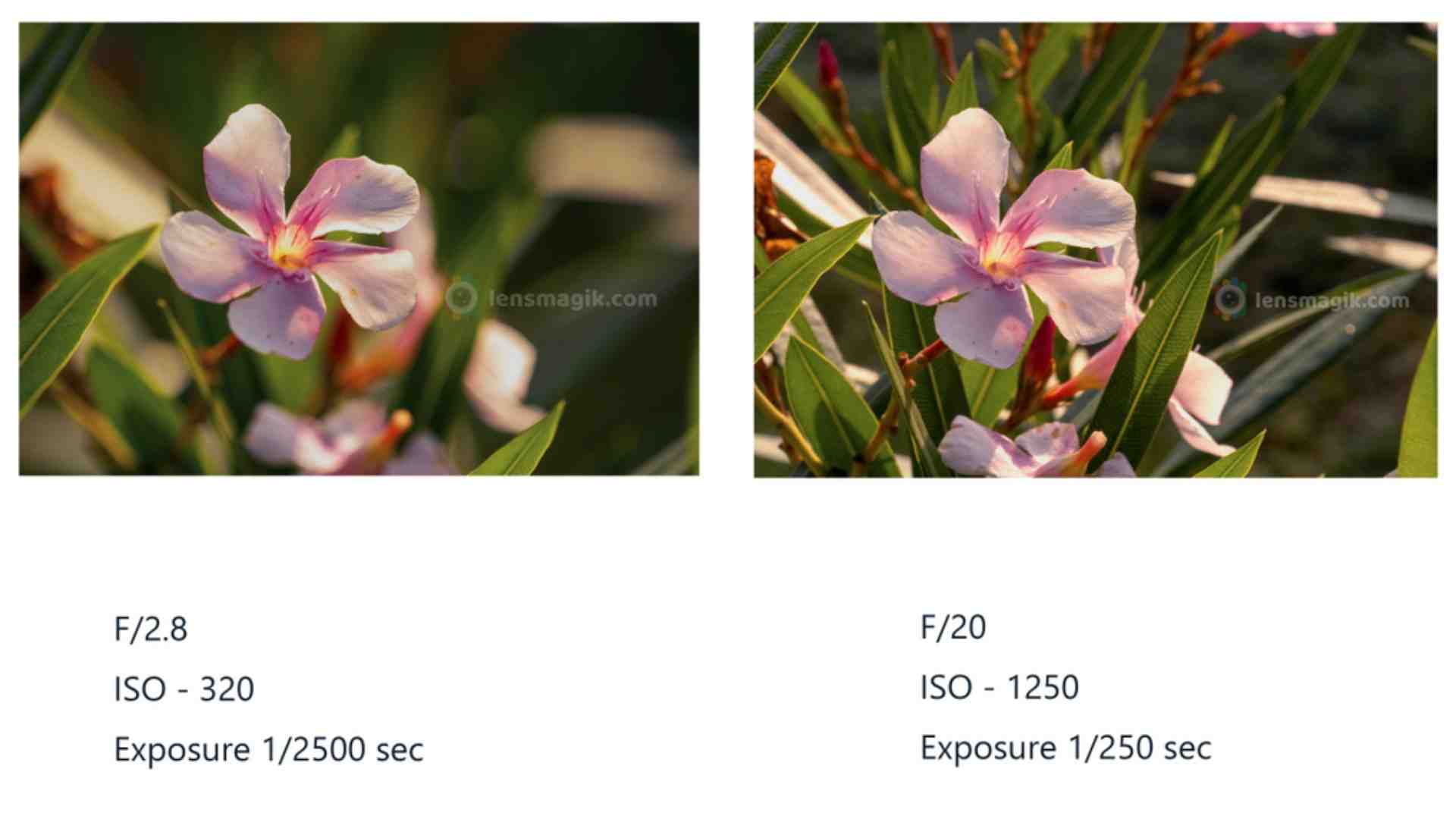
Another example of Aperture is above image.
One image taken with F/2.8 , ISO-320 and shutter speed 1/2500 sec. In that image flower looks clear and rest of image looks blurry . The other image taken with F/20, ISO-1250 and shutter speed 1/250 sec. That image flower with plant leaves looks clear because i use F/20 but in that case i need to increase ISO and lower shutter speed. Increasing ISO may increase noise in your image so if it is not necessary then don't boost ISO use only shutter speed if passible.
Some Facts to know about Aperture or F stop :
- F number decides how much your photo in focus
- Lower F number makes image Brighter
- Higher F number makes image Darker
- Aperture depends on your lens
- Different lens have different aperture value.
- To increase and decrease your aperture value you need to adjust ISO and Shutter speed as per subject and light.
I use Canon 100 mm lens for both above image with canon 80D camera body. Canon 100 mm macro lens has F/2.8 minimum aperture value. All lenses have different minimum and maximum aperture value. ISO and shutter speed depends on your camera Body. Some Camera body support High ISO with low noise too.
Read more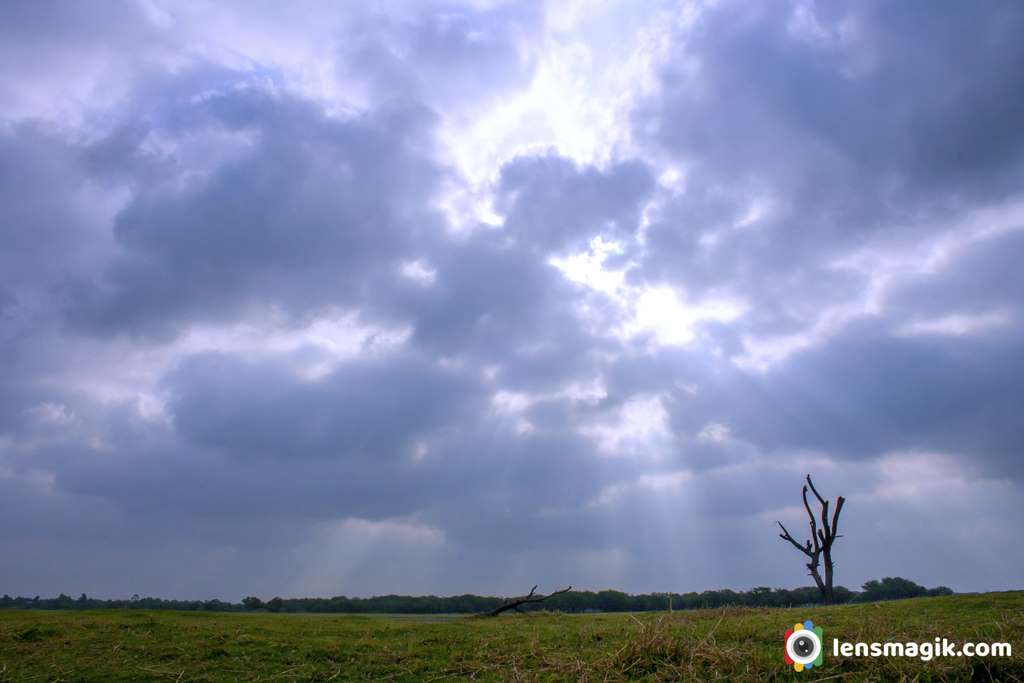
As per my previous post for Basic composition rules for Photography here i give you some advance rules for photography. Before know the rules first you should know your gear. Whichever camera you use first understand your camera. As there are lots of camera brands in the market like Canon, Nikon, Fujifilm, Sony, Olympus, etc... all cameras have different body types and keys in different area. But whichever brand of camera you use there are same rules applied for composition in photography. The techniques and settings and rules are same for DSLR cameras or Digital Cameras. Also for different types of photography like Abstract, Portrait, Landscapes, Wildlife, Product, Wedding , Fine art, Sports etc the Rules for photography are same. If you want to capture good pictures follow some rules i mention here and it will help you for being a professional photographer.
How to become professional in photography ?
The answer is too hard work. To become professional you should work very hard in any types of photography. Understanding your camera and using basic rules and after that advance techniques helps you lot. Without follow some rules your photos cannot noticed by others. You should try to capture something new and something creative with good composition which attract users to see your images.
Rule Of Third : There is a cross line in every camera in display. If you are new then on that cross lines while shooting. After you can understand off that feature. While shooting photos the position of your subject is on cross lines for better pictures and better look for your photos.
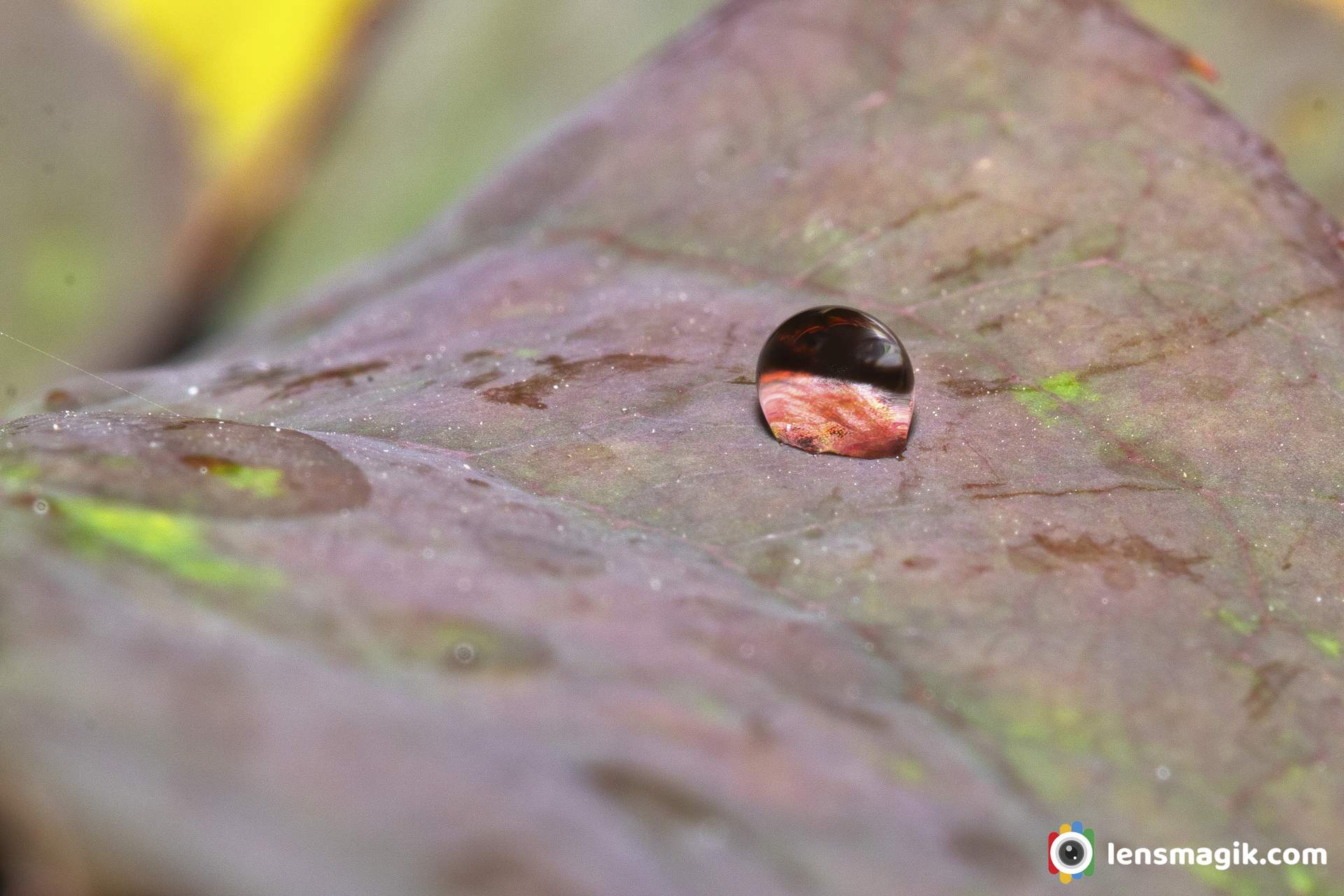
In above image i use a water drop as a subject. if you use grid lines in your camera then you can see the cross lines on your screen is total 4 and you can put your subject on those 4 cross line and leave other space thats the rule of third. Same in below image using bird as a subject in the lower crossline. Thats make your image attractive and perfact if you use foreground apropriate to your subject.
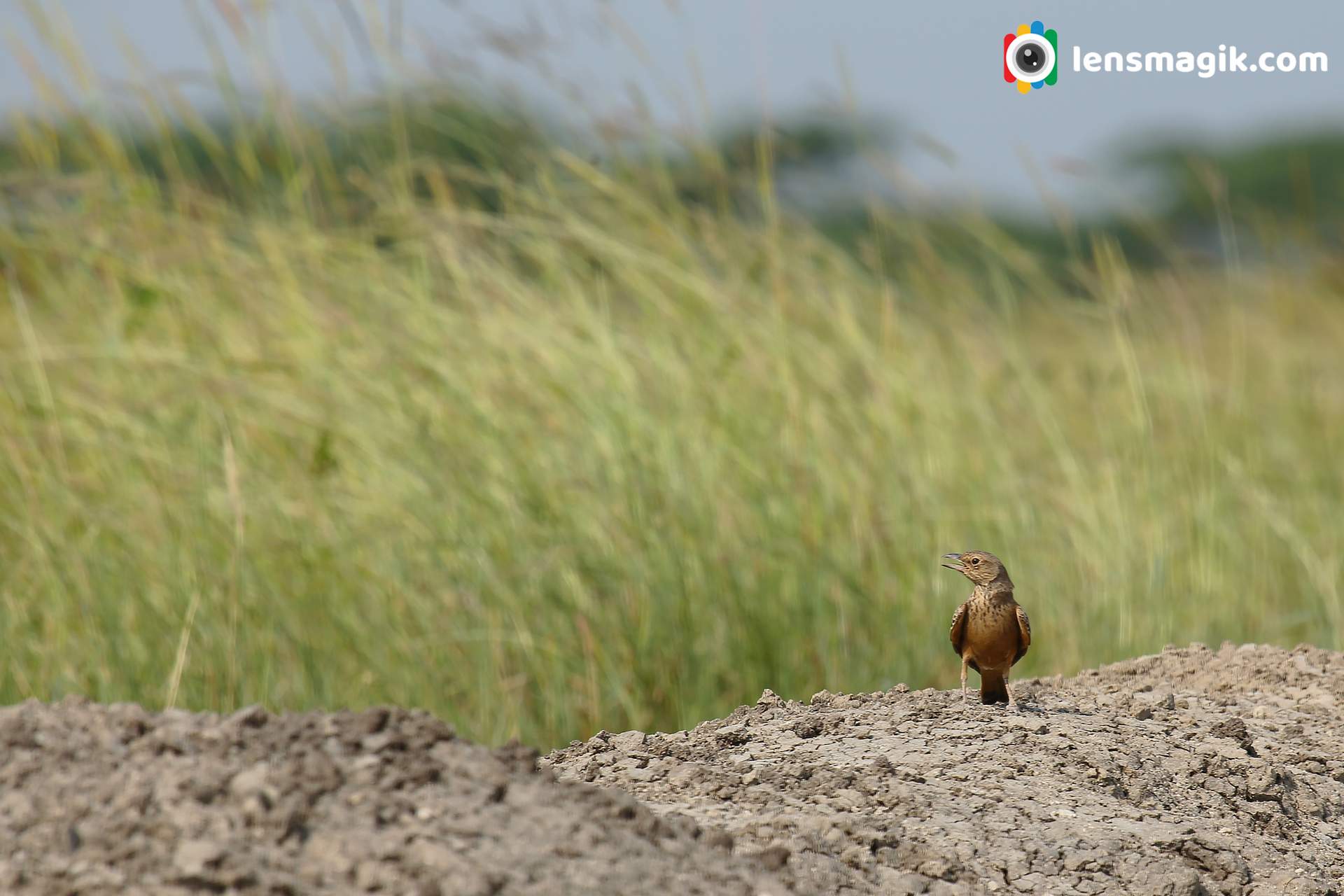
Repetition : Look for repeat subject in a raw . Your object may be pole light, street light, pile of fruits, chain of poles etc. The repetition of subject or object makes image unique.
Repetition is also a good subject like electric pole, walls, roads, trees in line and also a birds of mammals. My image is not perfact in repetition but its gives you an idea for it. repeat your subject at regular interval and space in your frame.
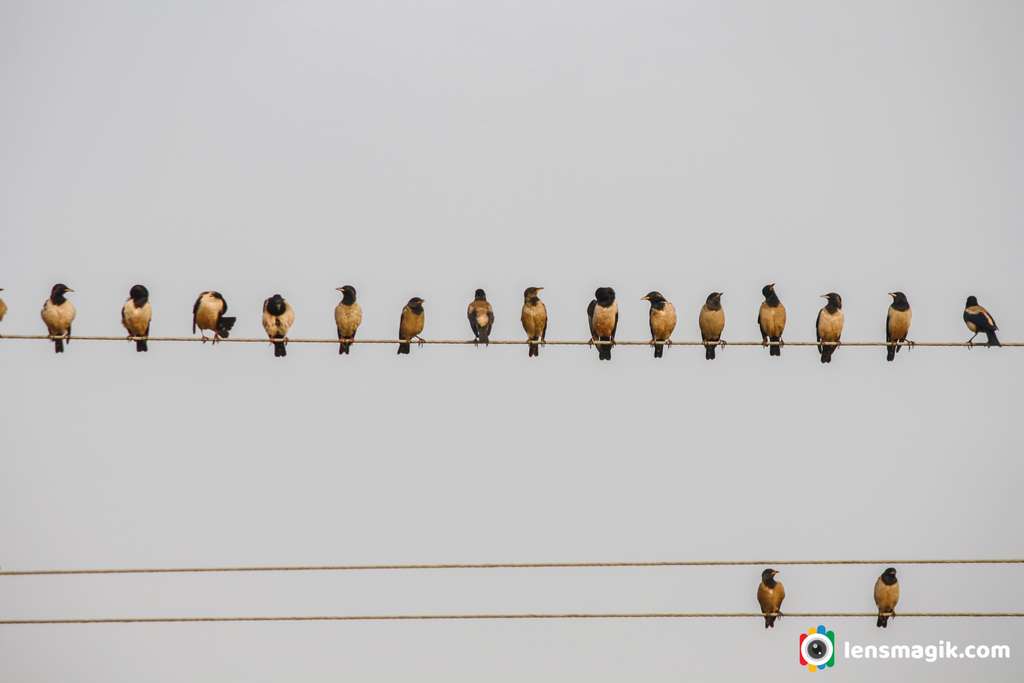
Negative space : Always leave some space with your object in your frame. Some people make closeup shots with crop image but its not looks good . The subject need some negative space to move into. For ex. If you shoot solo bird on tree then you should leave some space in the direction of birds eye. That will make your frame perfact.
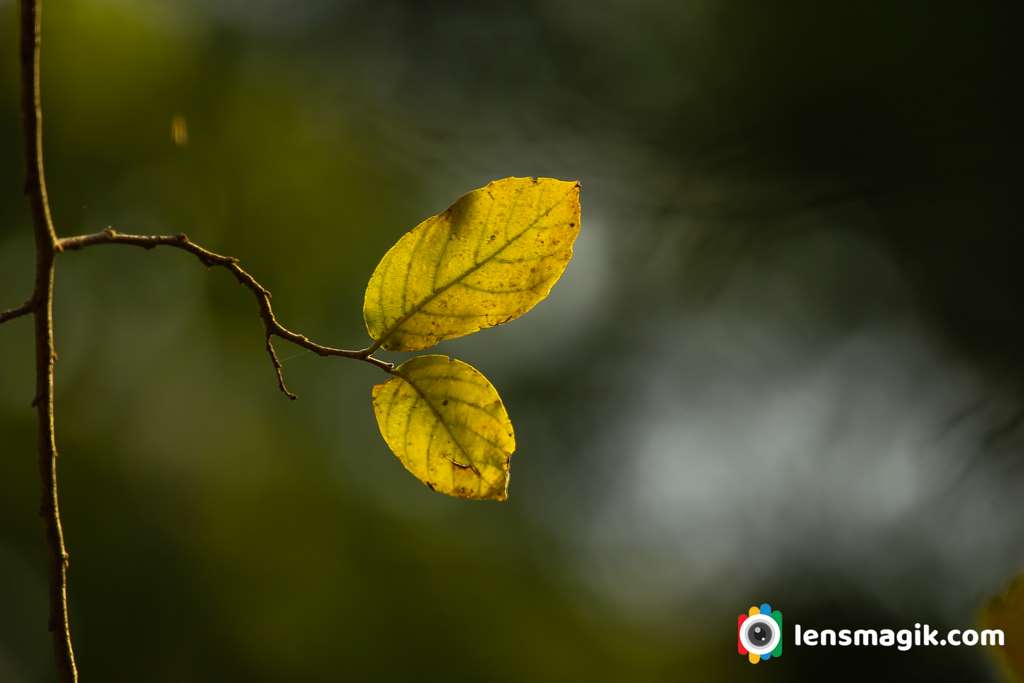
Balancing Elements : Balancing elements means balance your background interest with your foreground subject.
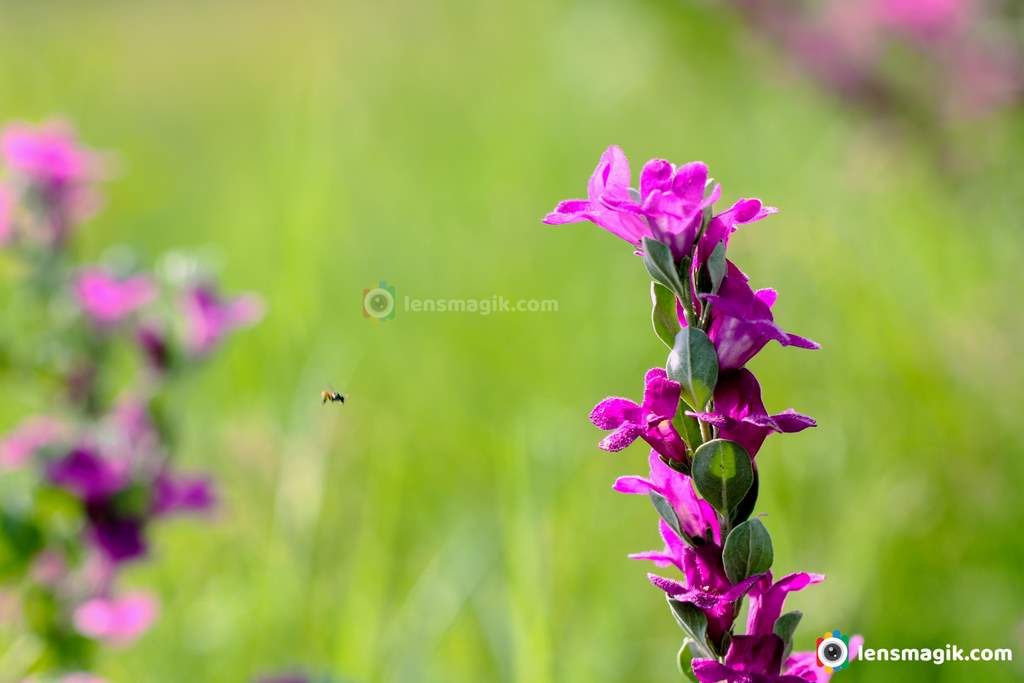
Symmetry : Symmetry means Half of your image is a mirror of other half image. Shoot your image like a mirror image or reflection of the subject .
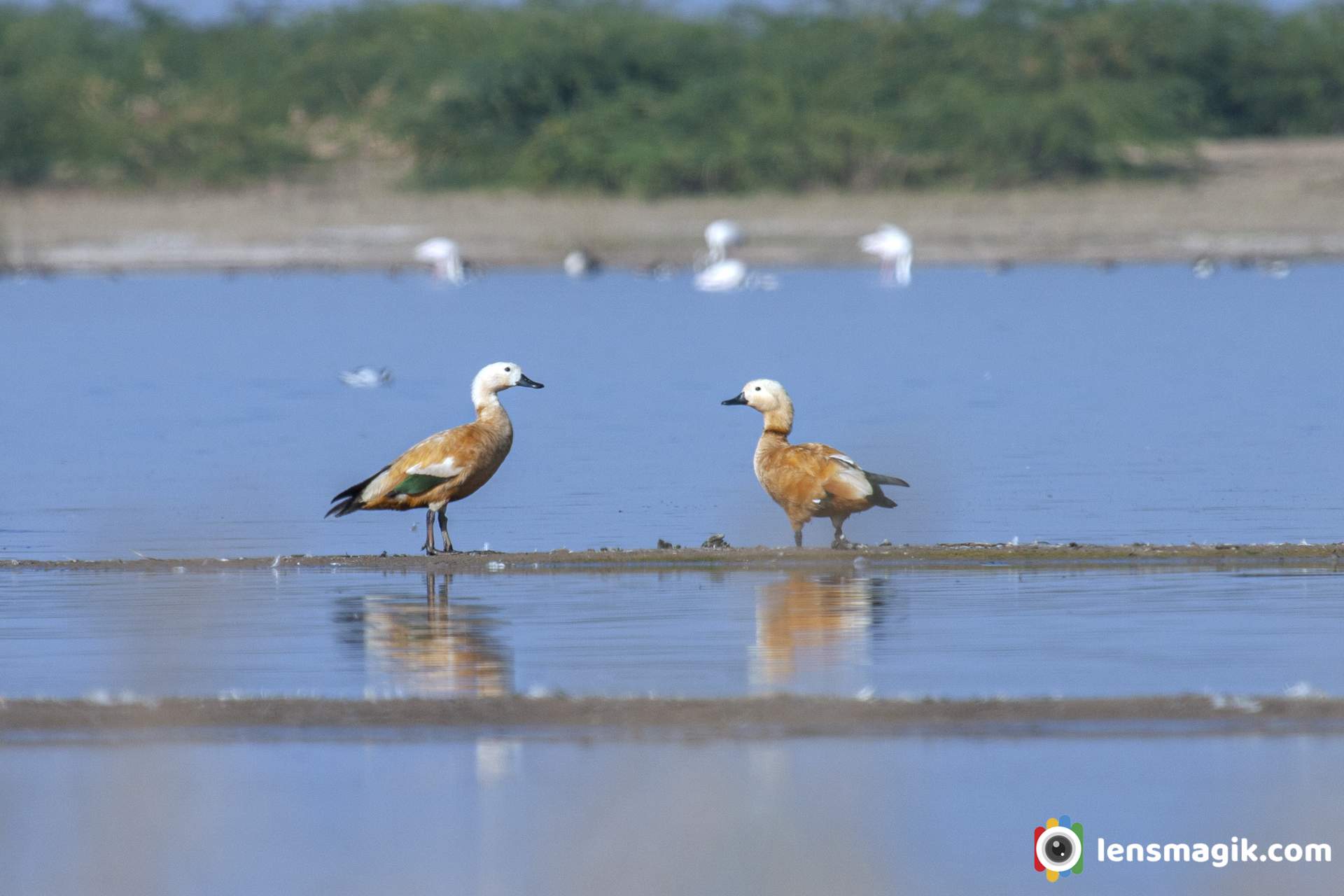
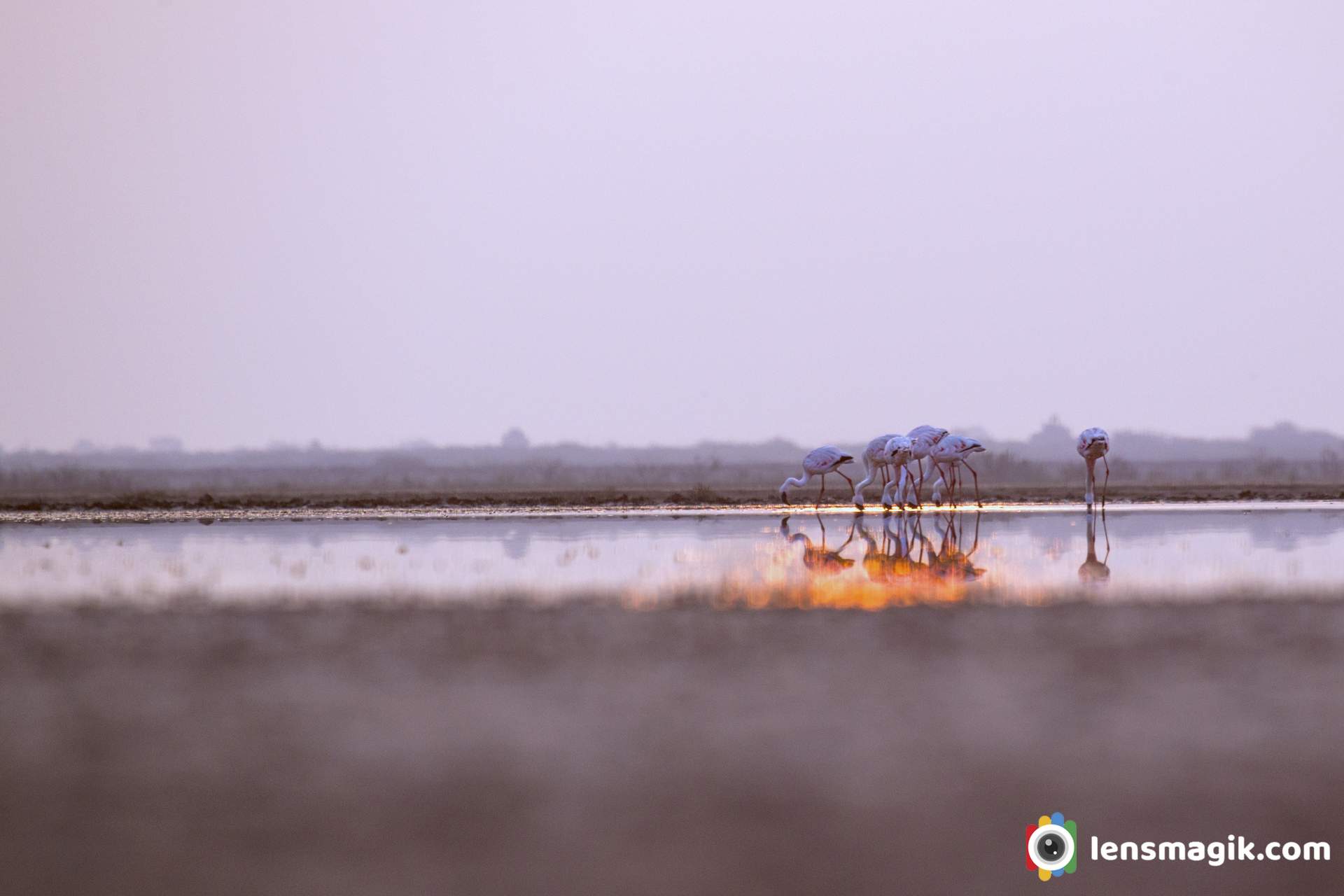
Follow these advance rules for capturing images and i am sure you will definitely get better results. I will give you one more Bonus tips except this 5 rules is
Depth ( Layers ) : The position of your subject in front of and behind of objects to create 3D depth.
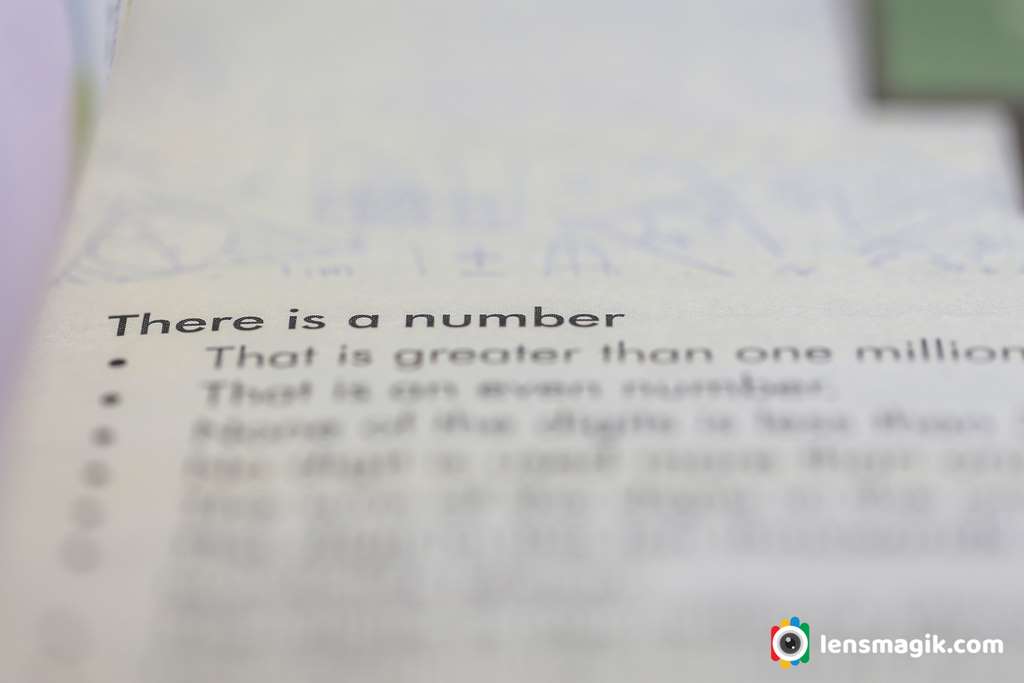
Read more
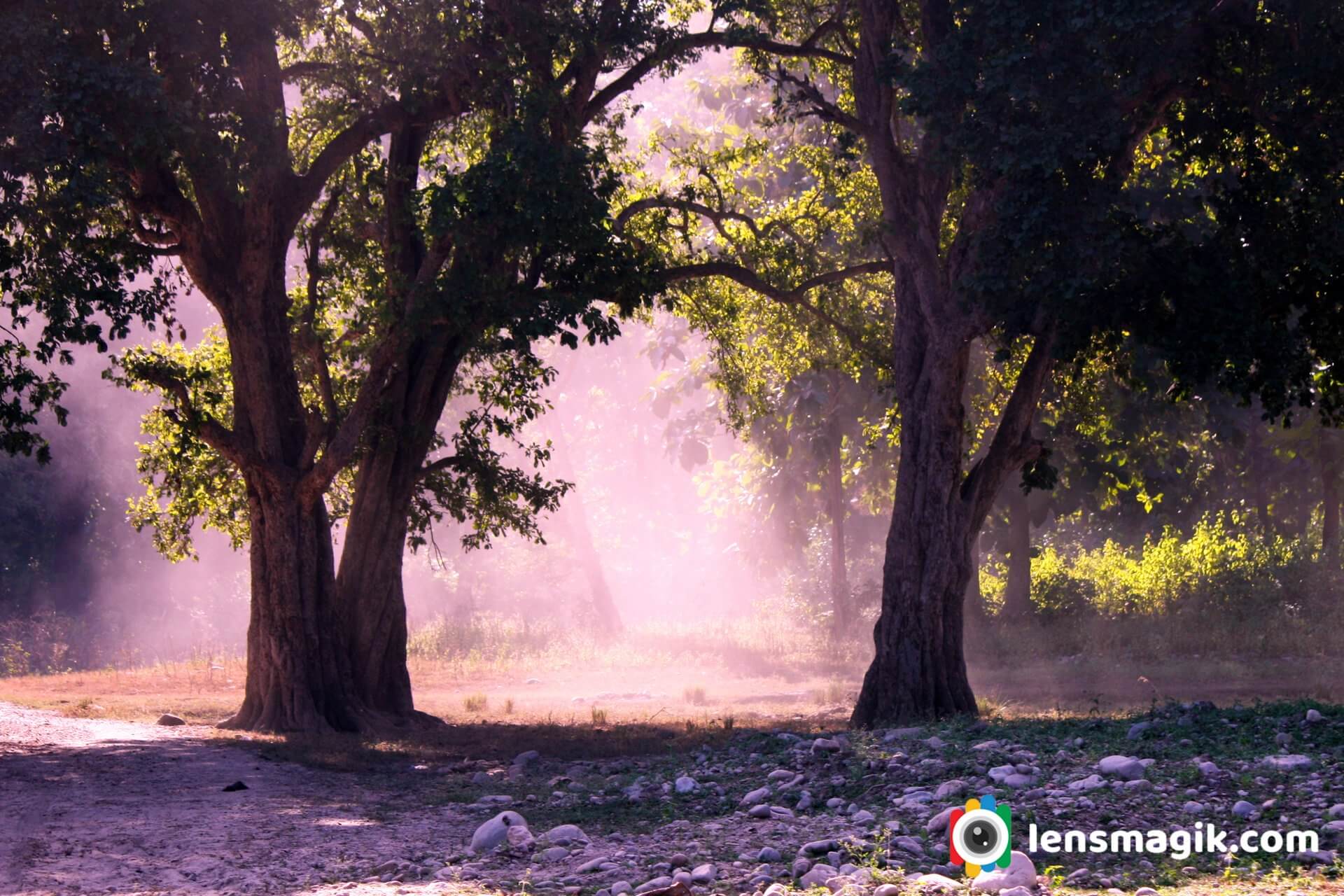
Photography is widely explore subject. Now a days peoples widely join in photography. There are so many types of photography with different themes you can learn. Here i suggest you some tips for basic photography composition.
What is composition for photography ? :: Create an image through a frame is the simple answer. There is no definition for composition in photography because different people has different creativity. So the frame is different for every people. But create your frame which looks very attractive than others.
Basic composition rules in Photography
- Framing : Frame your subject with surrounding things like trees or buildings. Like below image i take all tree trunks in my frame. You can also capture with leaves too to make your frame wider. For framing i suggest to use wide angle lens to capture more details in photo.
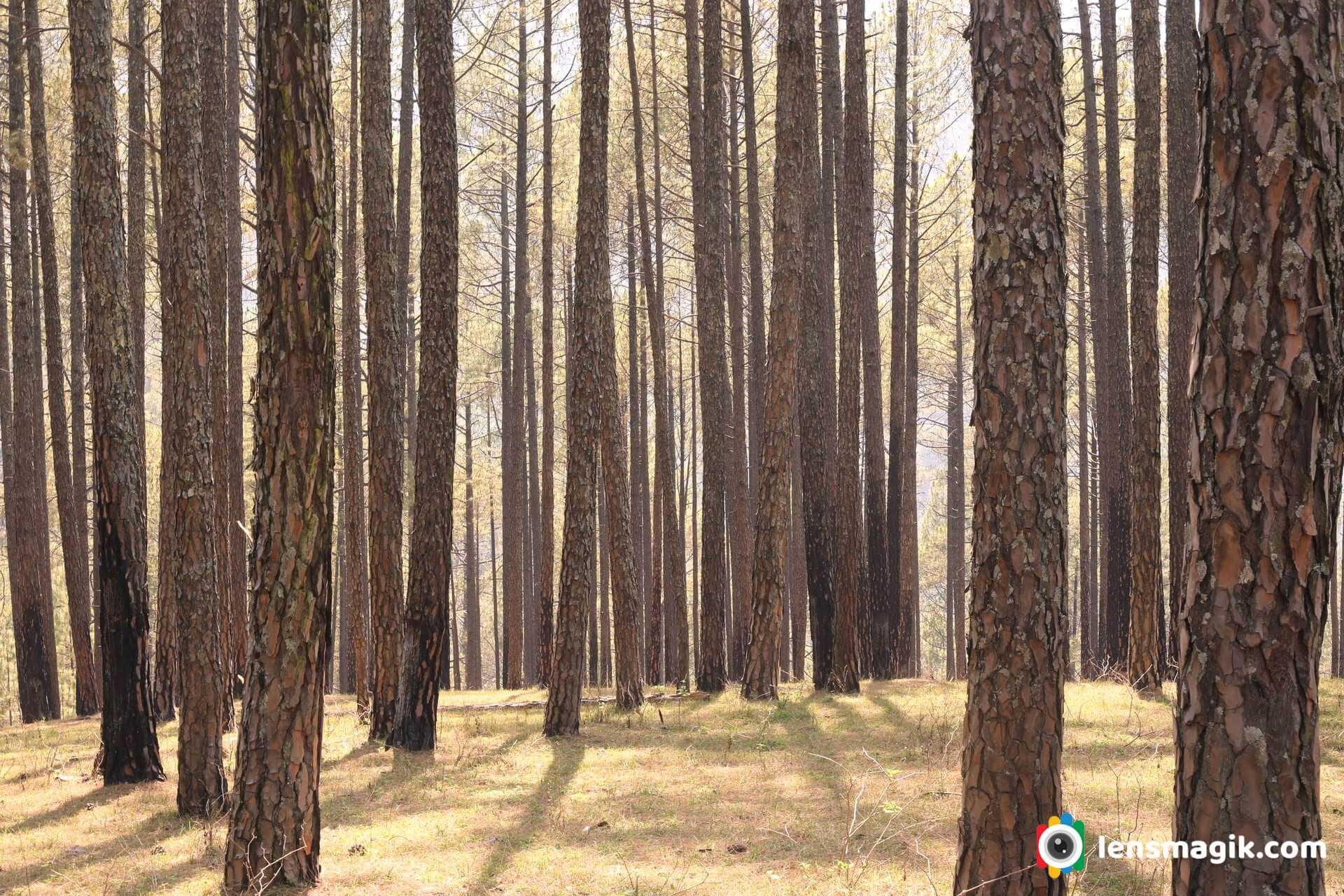
- Color composition : Choose different color for background and subject. For better result use opposite color for subject and background. As below image shows you a color composition of green background and pink flower. Flower is perfact for color compositoon images because different color flower mixed up with different background color. You can try with blue sky with flower it also looks good.
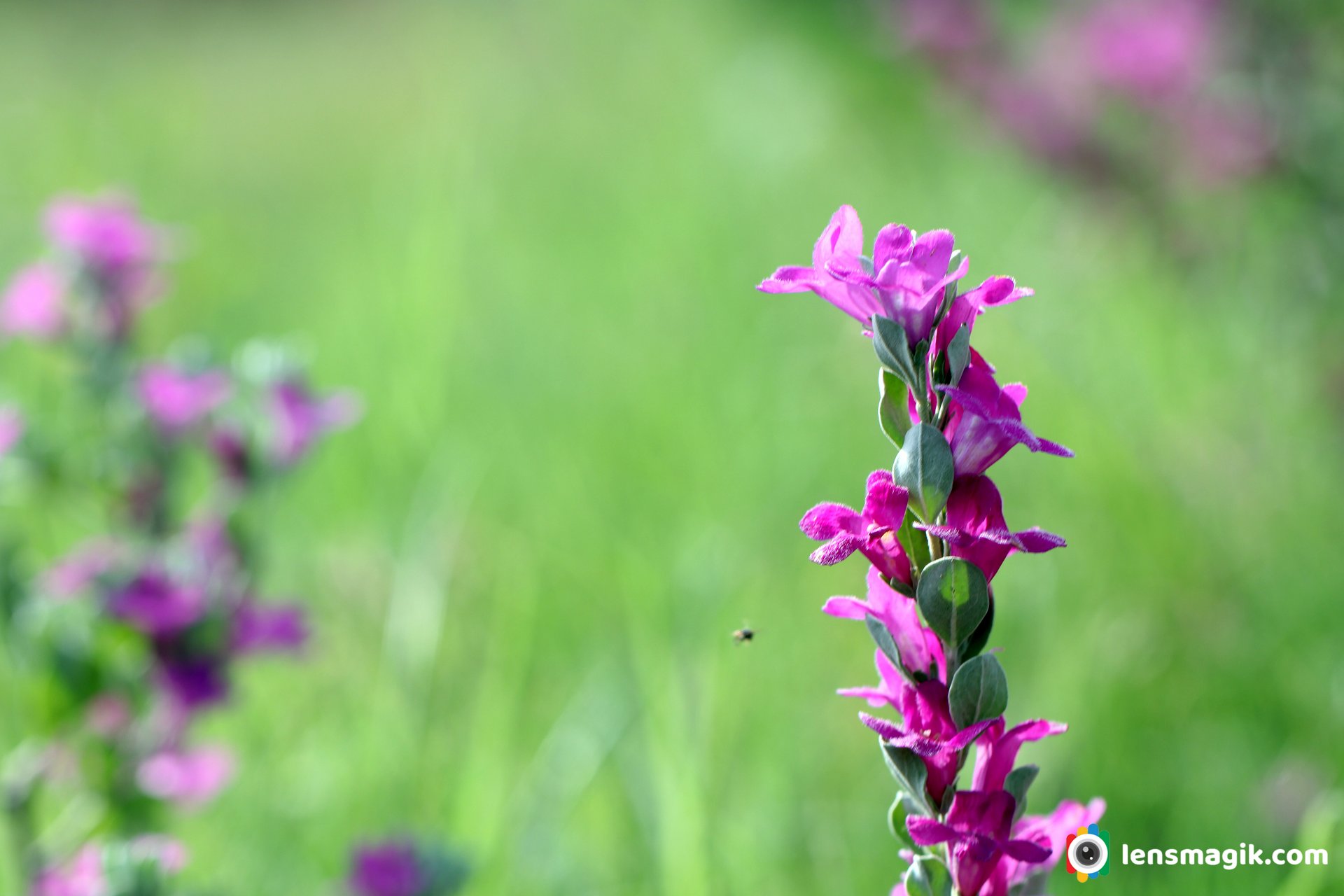
- Leading lines : It means create your frame by lines towards your subject. Mean Buildings,Rail Lines,Roads etc leading to the subject. Generally roads are good for leading line because it found everywhere. you can also shoot Rail lines for perfact leading line object. You can also take electric poles in raw for your frame.
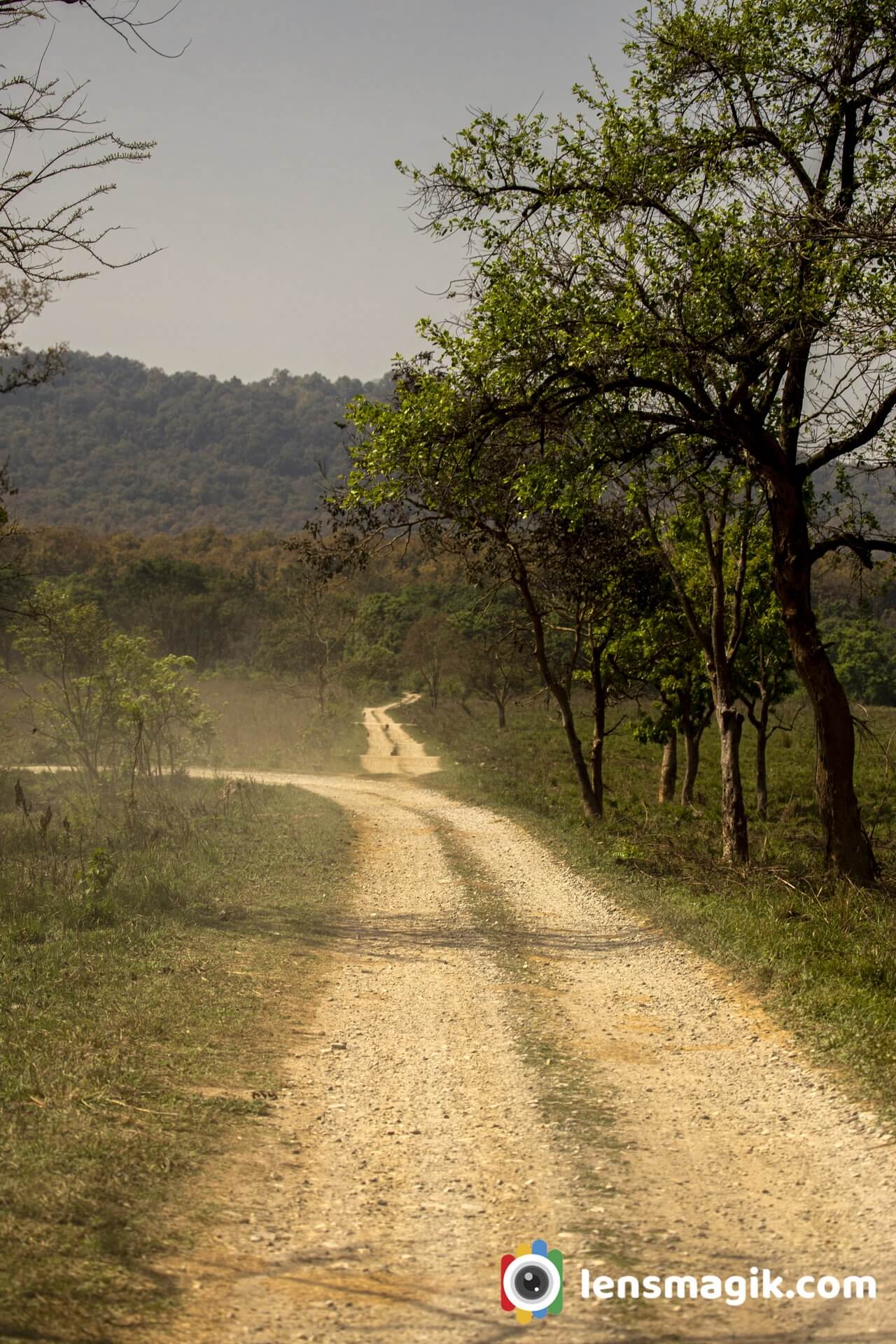
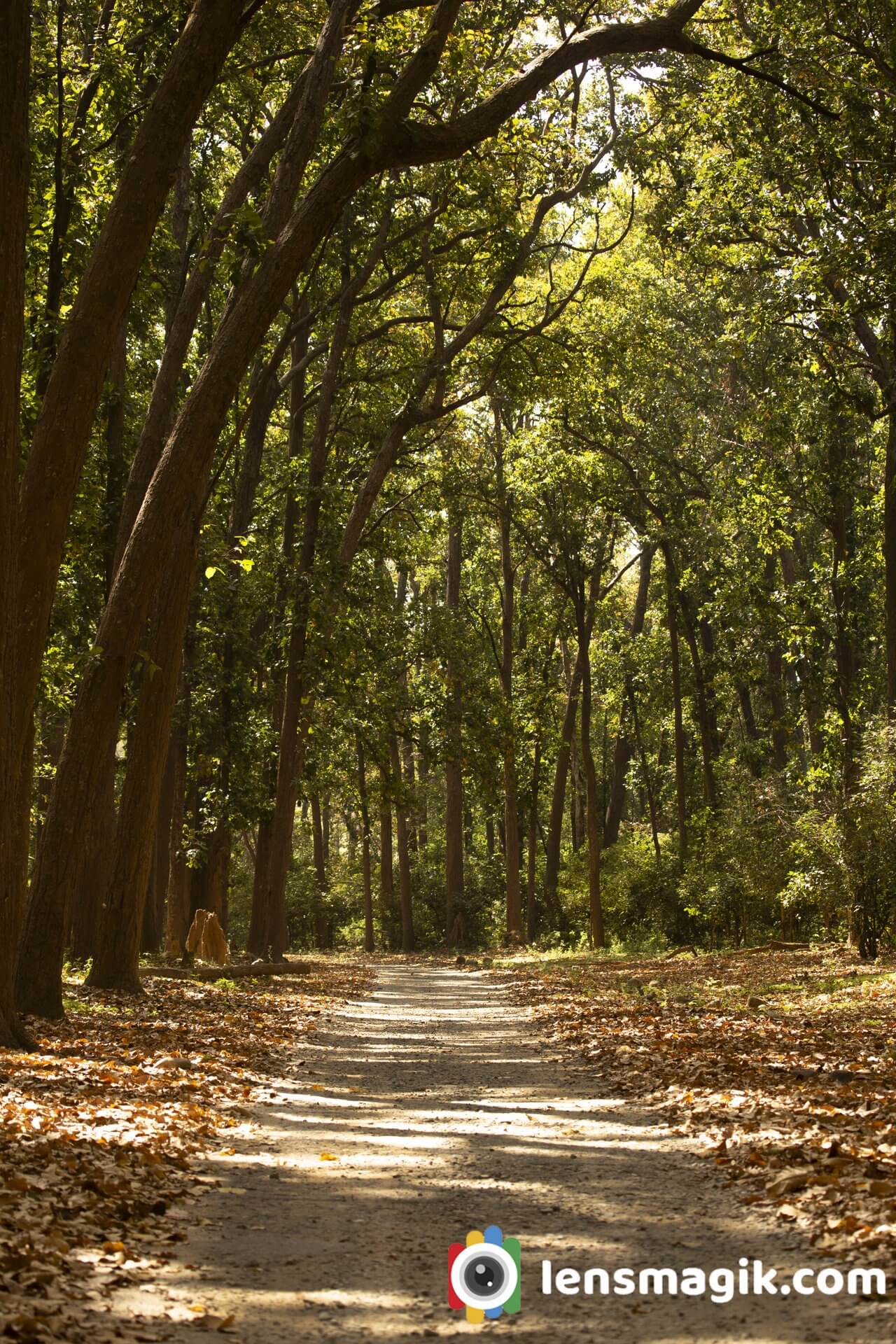
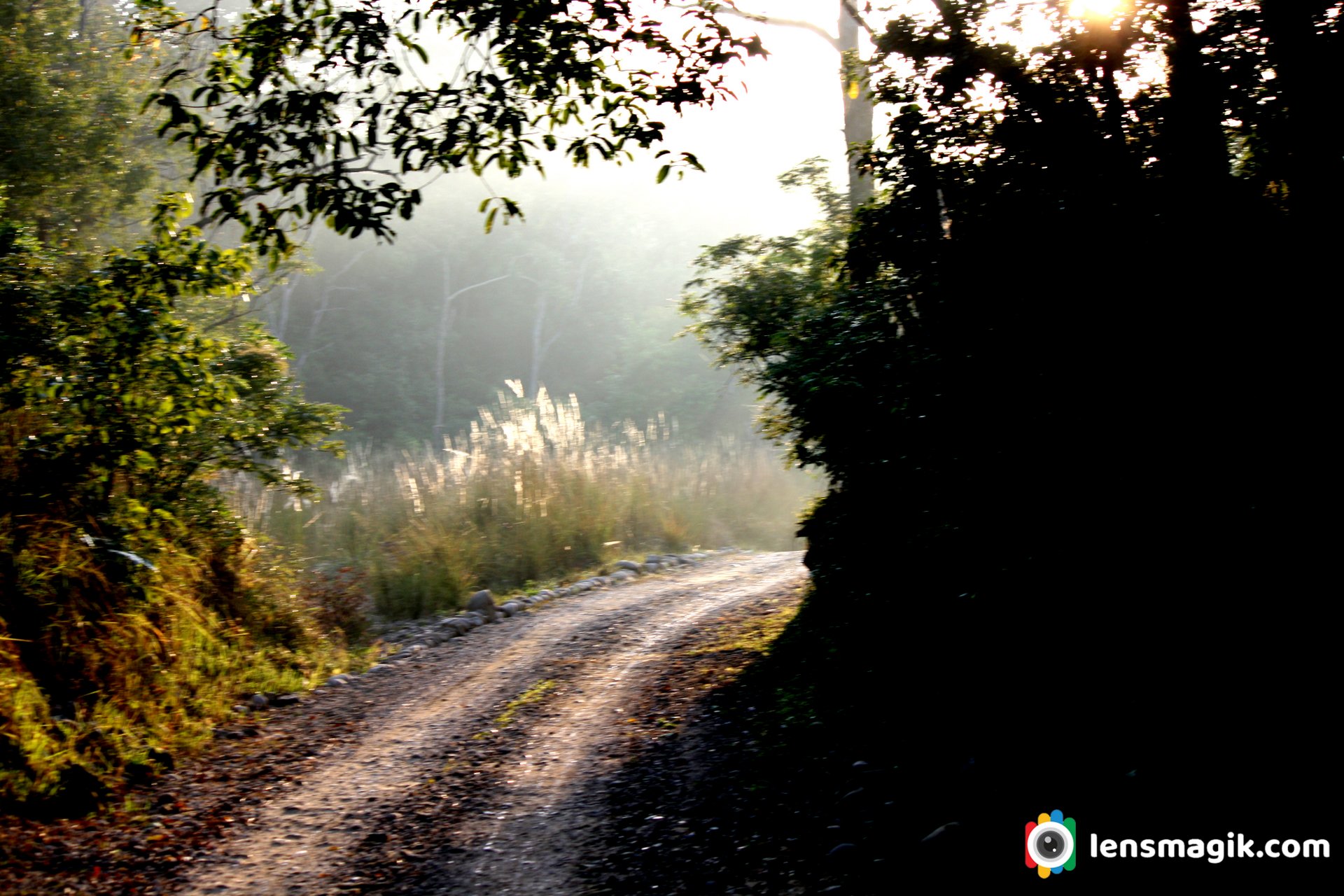
- Differential Focus : Shoot your subject sharp focus to guide the eye toward it. Focus on your subject make your frame attractive and viewers attend your subject first. sharp and focused object image keep eye towards it. I take sharp waterdrops with blur background makes good image but not perfact.
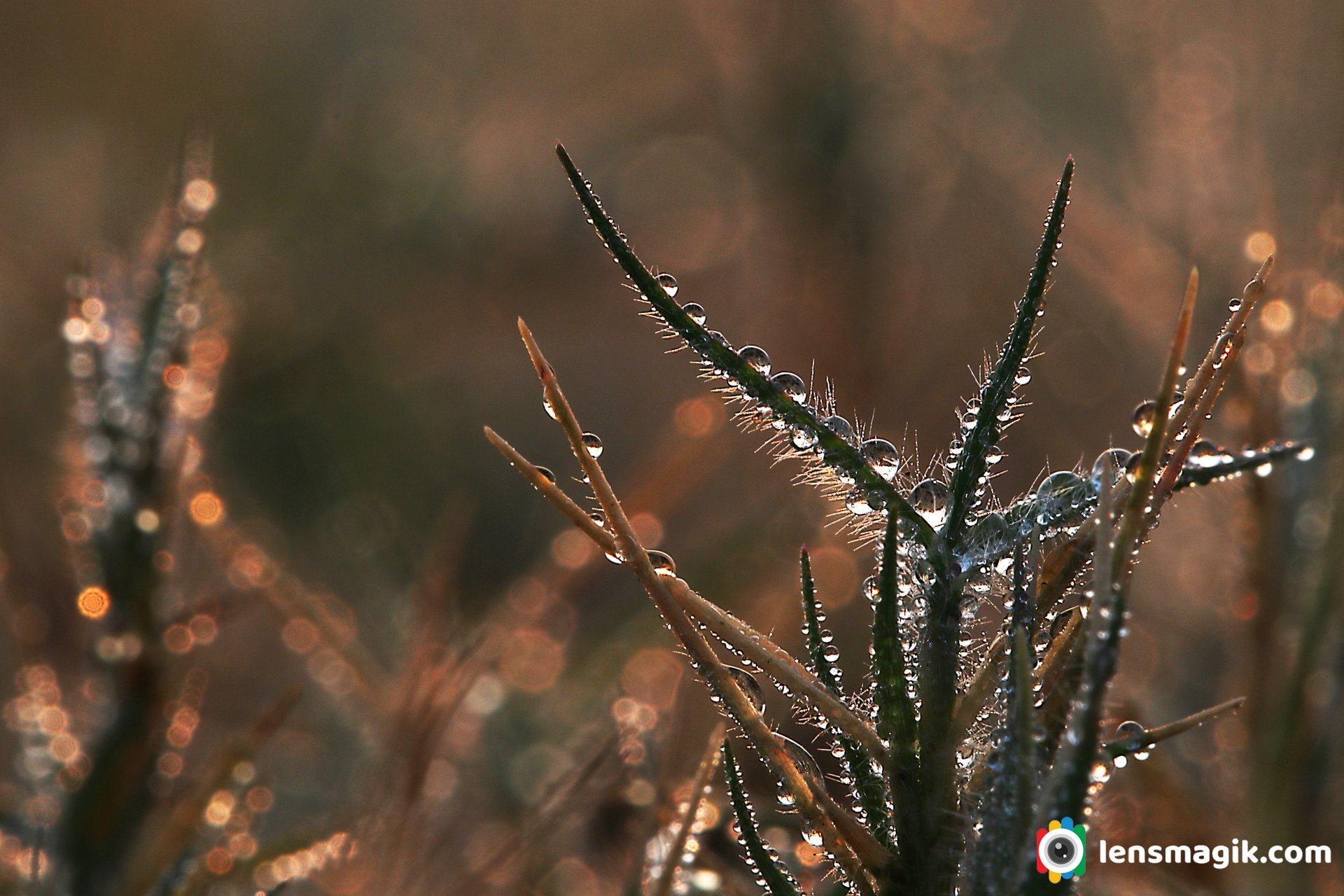
- Patterns : Use pattern in your frame. Always look for naturally occur patterns in your frame. Patterns are really good to shot. I tried on trees for beautiful patterns. This also create abstract subjects too. Trees are natural pattern subjects.

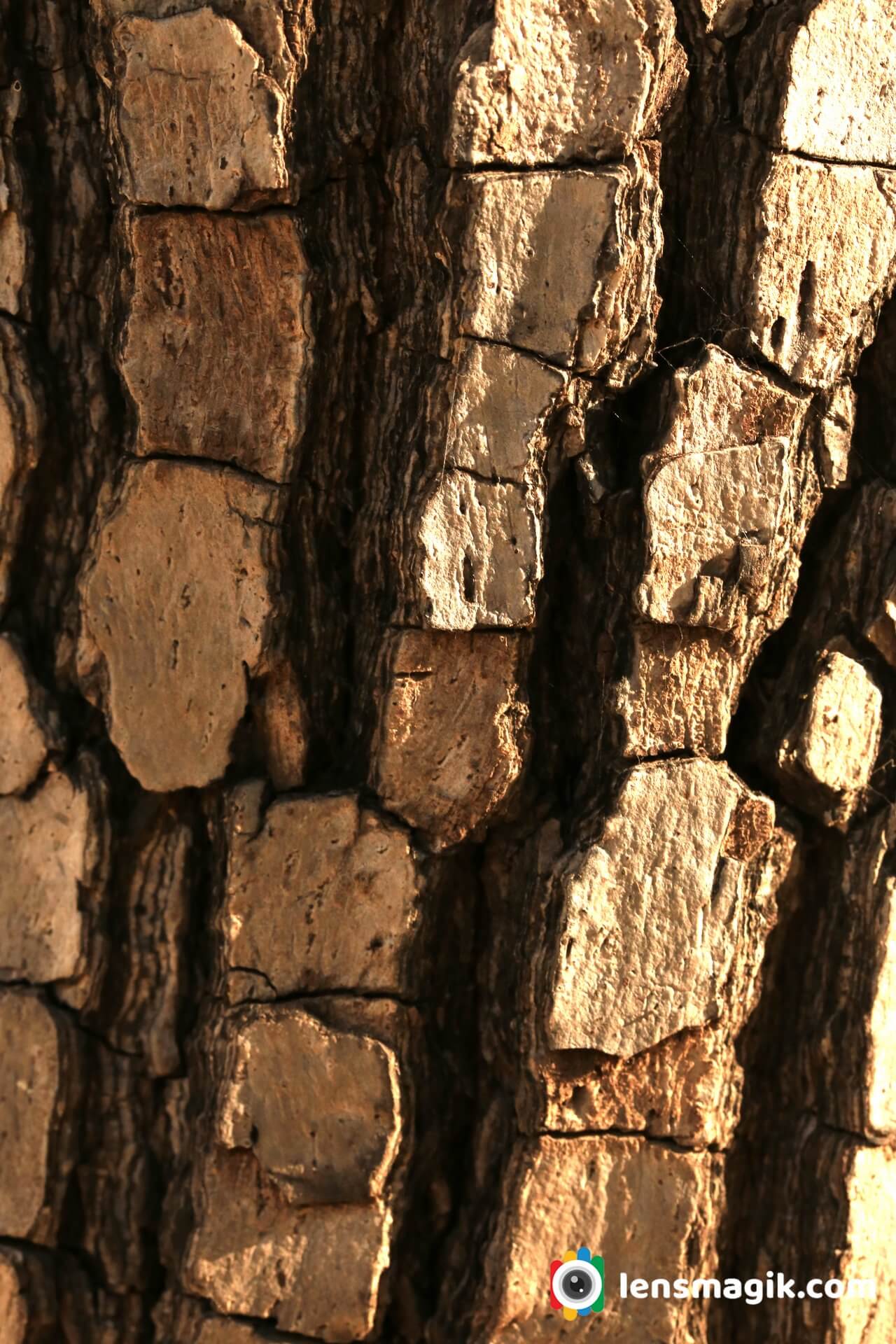
- Depth of Field : Create blur background to separate your subject in your frame. Creating blur background in your image is good. Just need sharp focus on subject and rest all are in out focus. For this you need some zoom lens or canon 100mm macro lens or some prime lens like 50mm , 300mm etc.
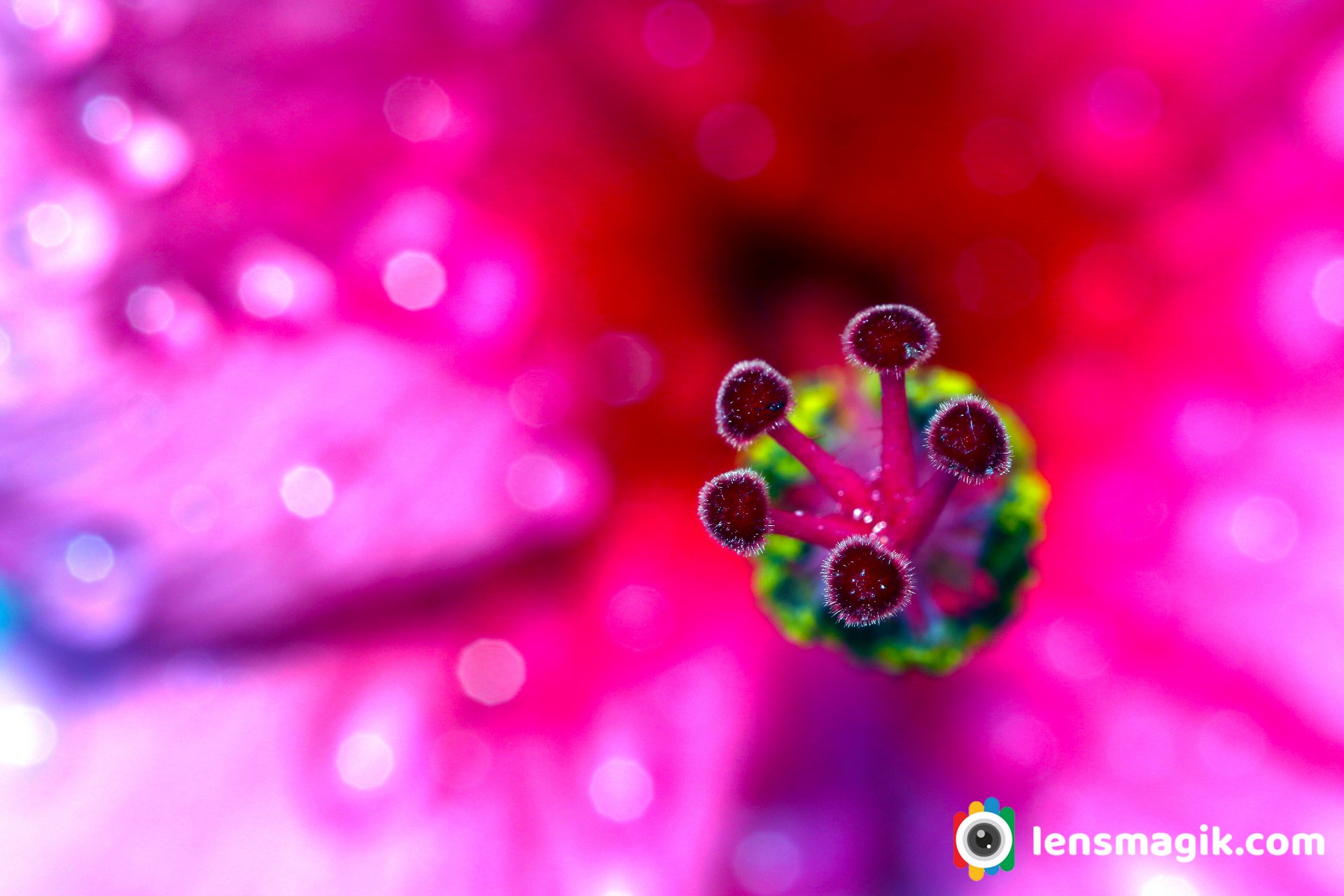
This techniques or rules are basic for photography. Follow this rules before you start clicking. I will share more and some advance techniques later on.
This all images are taken on Canon Cameras model Canon 1000 D, Canon 6 D, Canon 80 D with different lens like canon 100-400, canon 50mm, canon 100 mm macro, canon 55-250 mm, canon 18-55mm etc.
Well these are techniques to learn photography. An easy way to learn follow these rules. These techniques helps you to how to capture images but at the end all creativity is yours. Always think creative for your frame. Do all types of photography not stick only one type of photography. That improve your creativity for photography.
Read moreAccentor is a small bird of prunellidae family. In India it is generally found in East Sikkim area. It built its nest low in a bush. When i was on a trip to Singalila National Park. I found at sandakphu area. Sandakphu is high altitude place in Singalila National Park located in West Bengal. From here you can see Mt. Kanchenjunga very clear which is highest peak of West Bengal. Lots of Birds here. To visit Singalila Park November to February you can found lots of snow and good landscapes too with snow on Mt Kanchenjunga. Also if you are going for birding you can visit March to May/June Month is the best . It is very cold weather during winter November to February at Singalila National park.
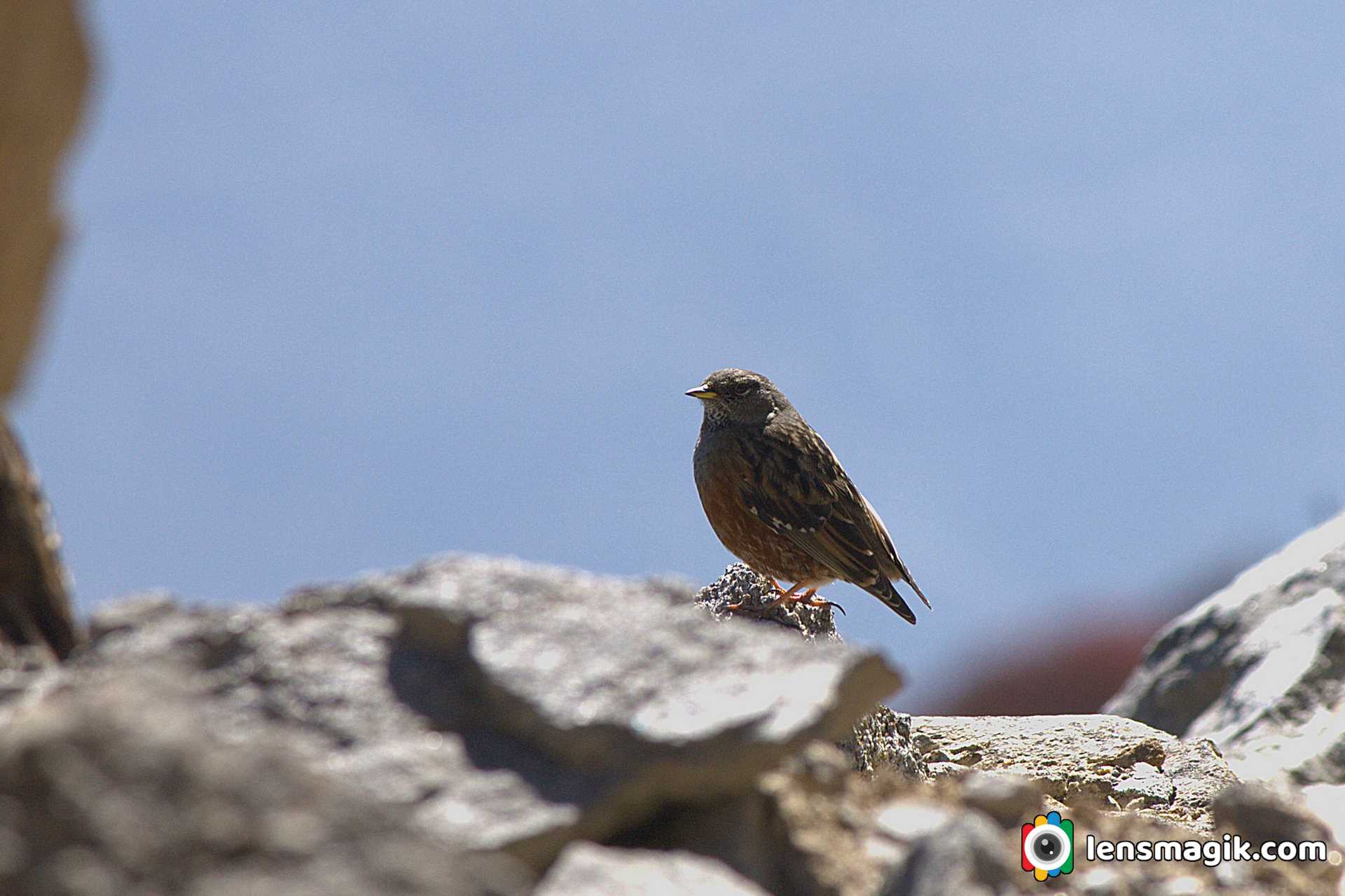
About Alpine Accentor Bird :
- Alpine Accentor bird is robin size bird. Length of bird is around 15 -17 cm.
- Bird just like similar to house sparrow in color with brown back streaked.
- Adult Alpine Accentor have red brown spotting on underparts
- Also adult have grey head too.
- In Asia Accentor found at 2000 m above height. Specially at Himalayas.
- It build nest in bush.
- It laying 3-4 plain (not spotted) eggs of sky blue color.
Singalila National Park :
Singalila national park is located in West Bengal. There are lots of birds in this sanctuary. Also its good for trekking at Sandakphu. From here you can see Mt. Kanchenjunga easily and very closely. Also a beautiful Himalayan Mountain range with snow. Amazing weather very cold in winter and moderate in summer. Summer season is the best for birding at sandakphu.
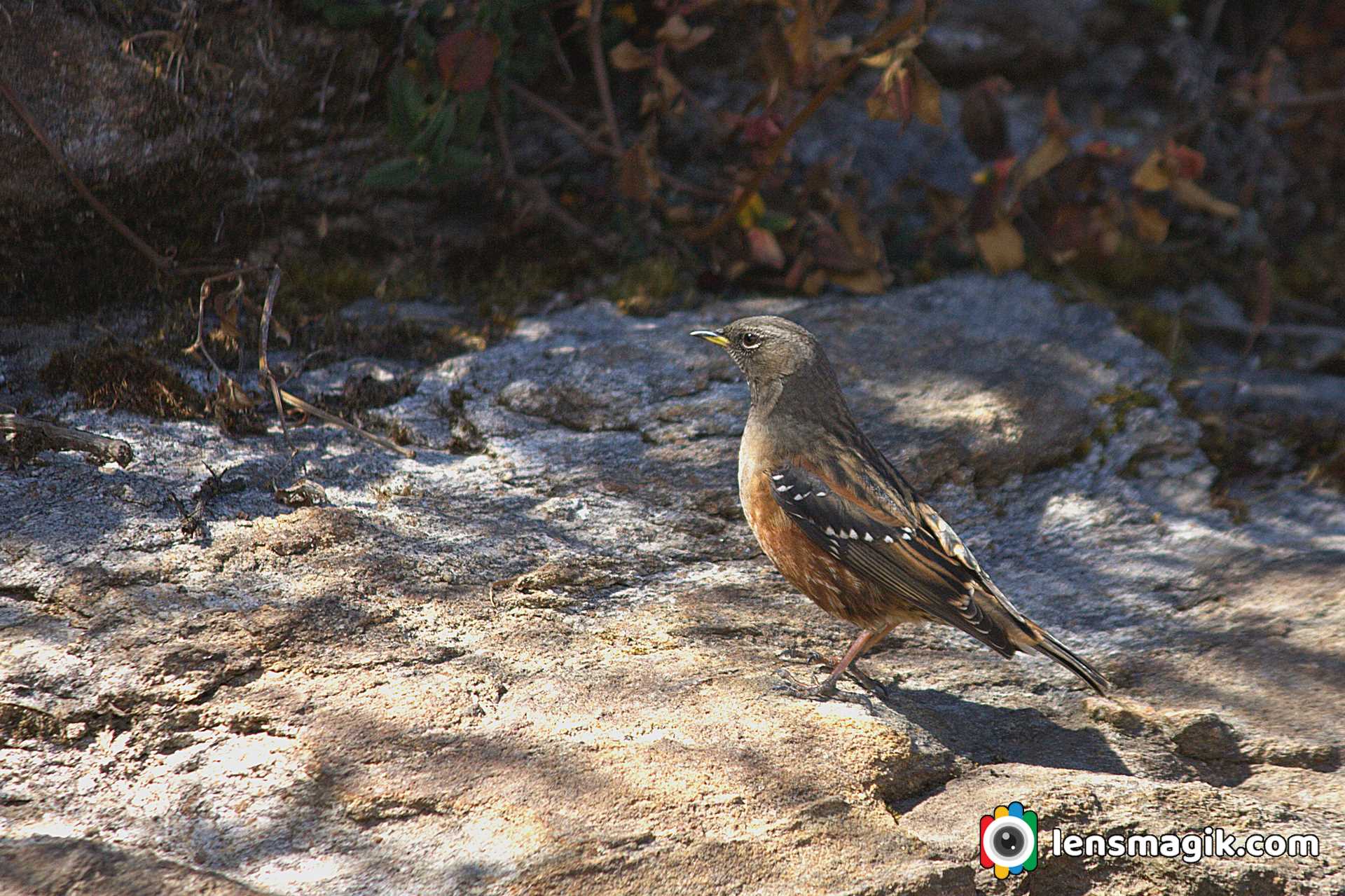
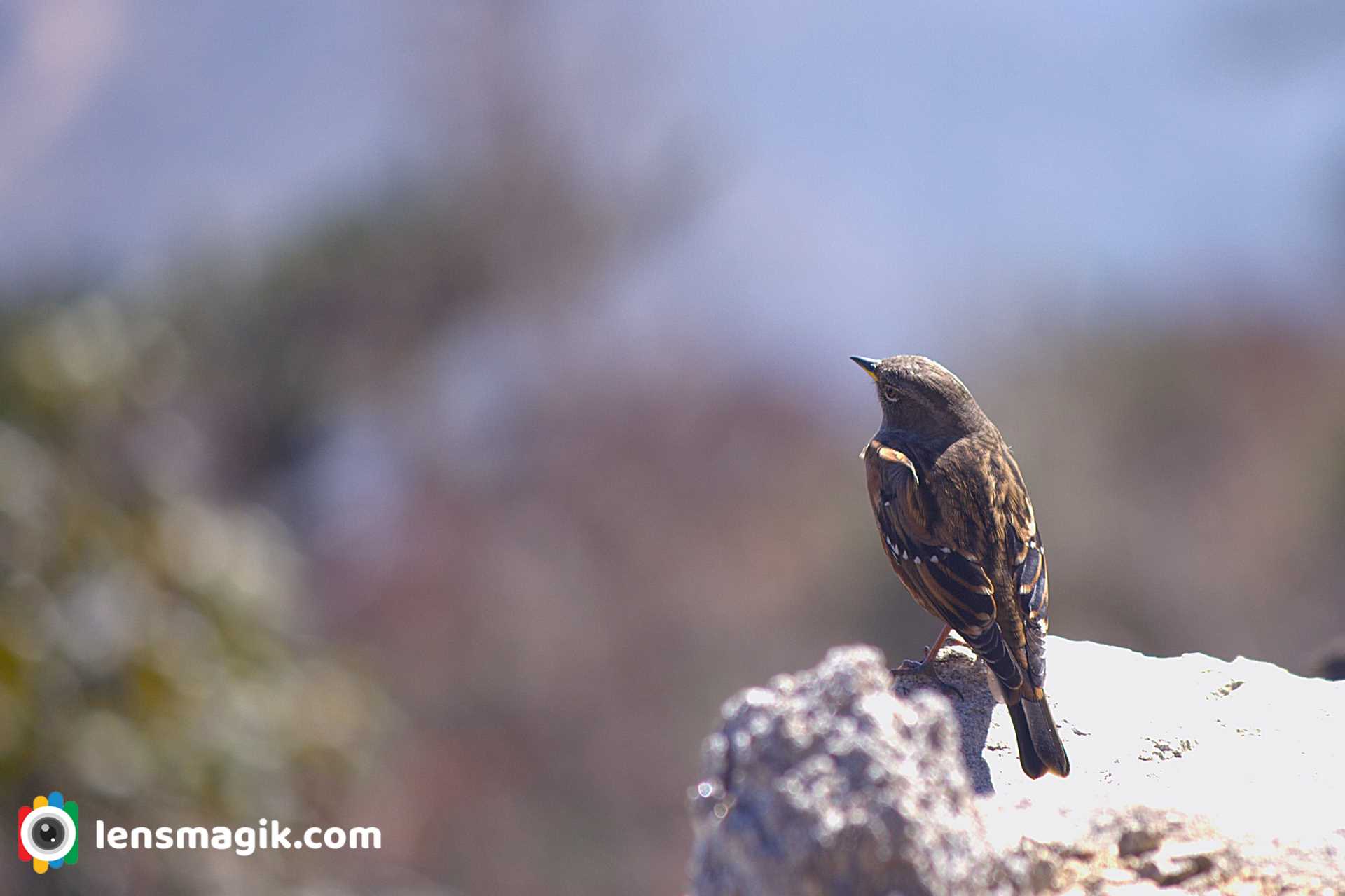
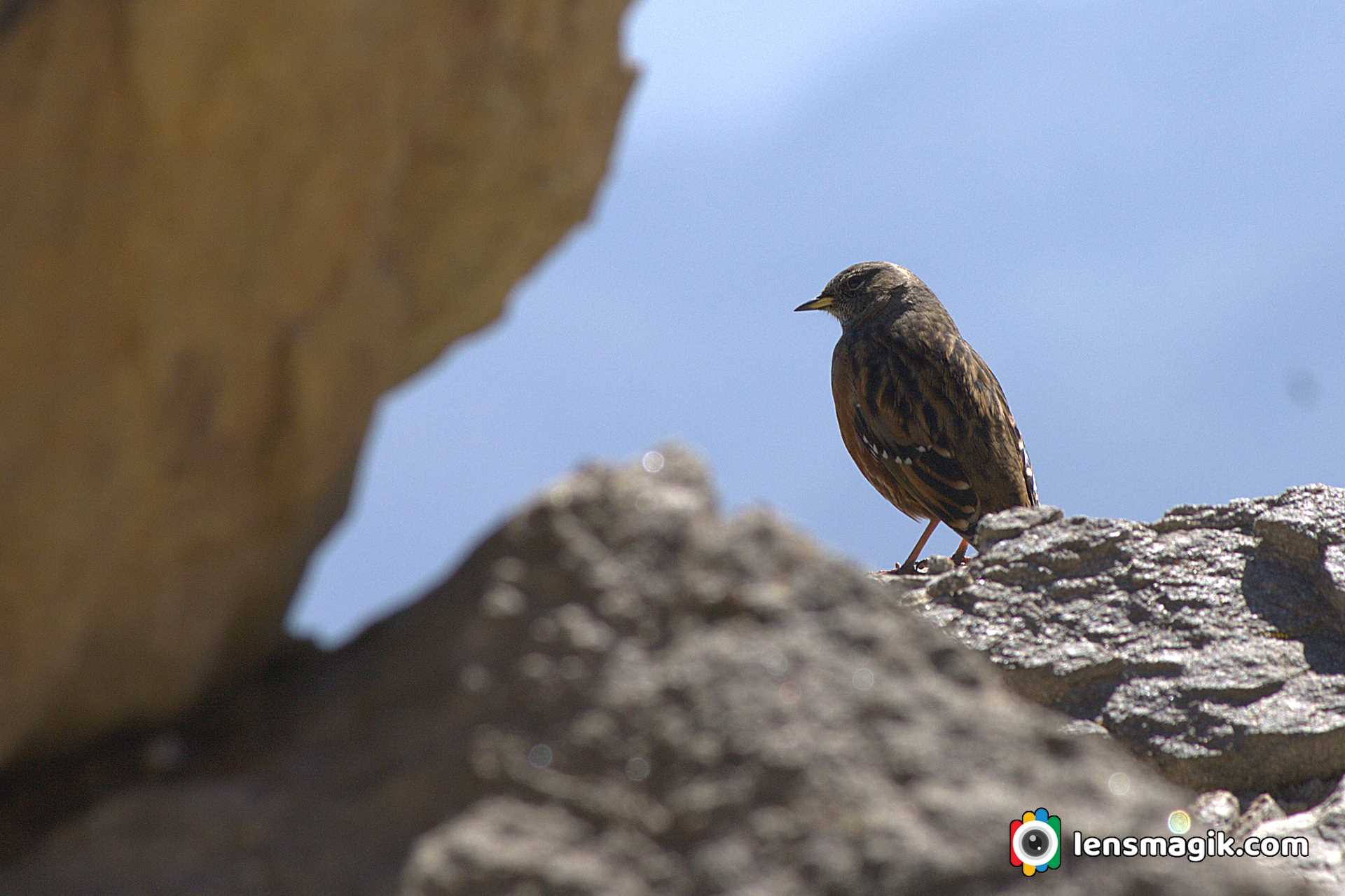
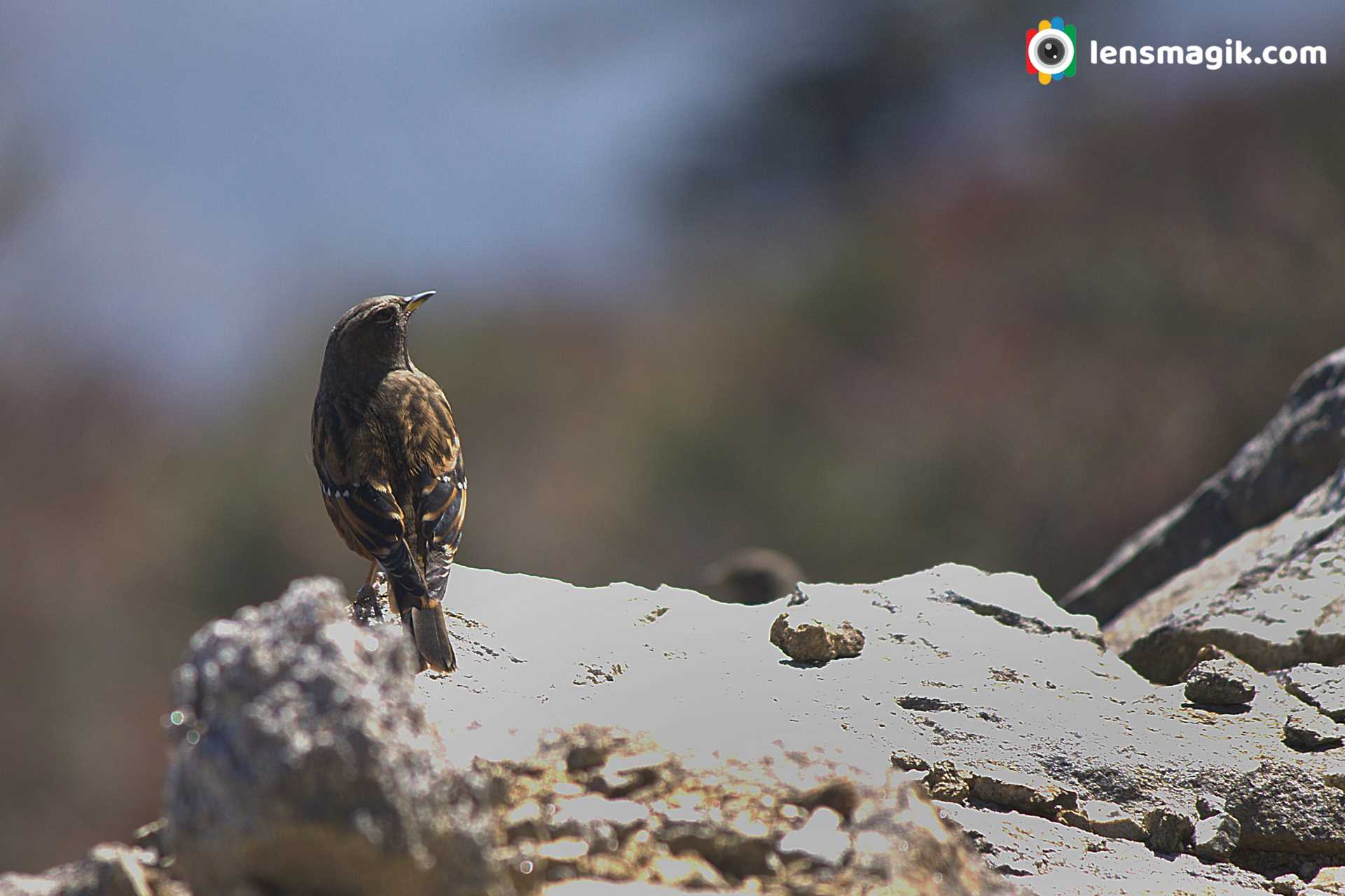
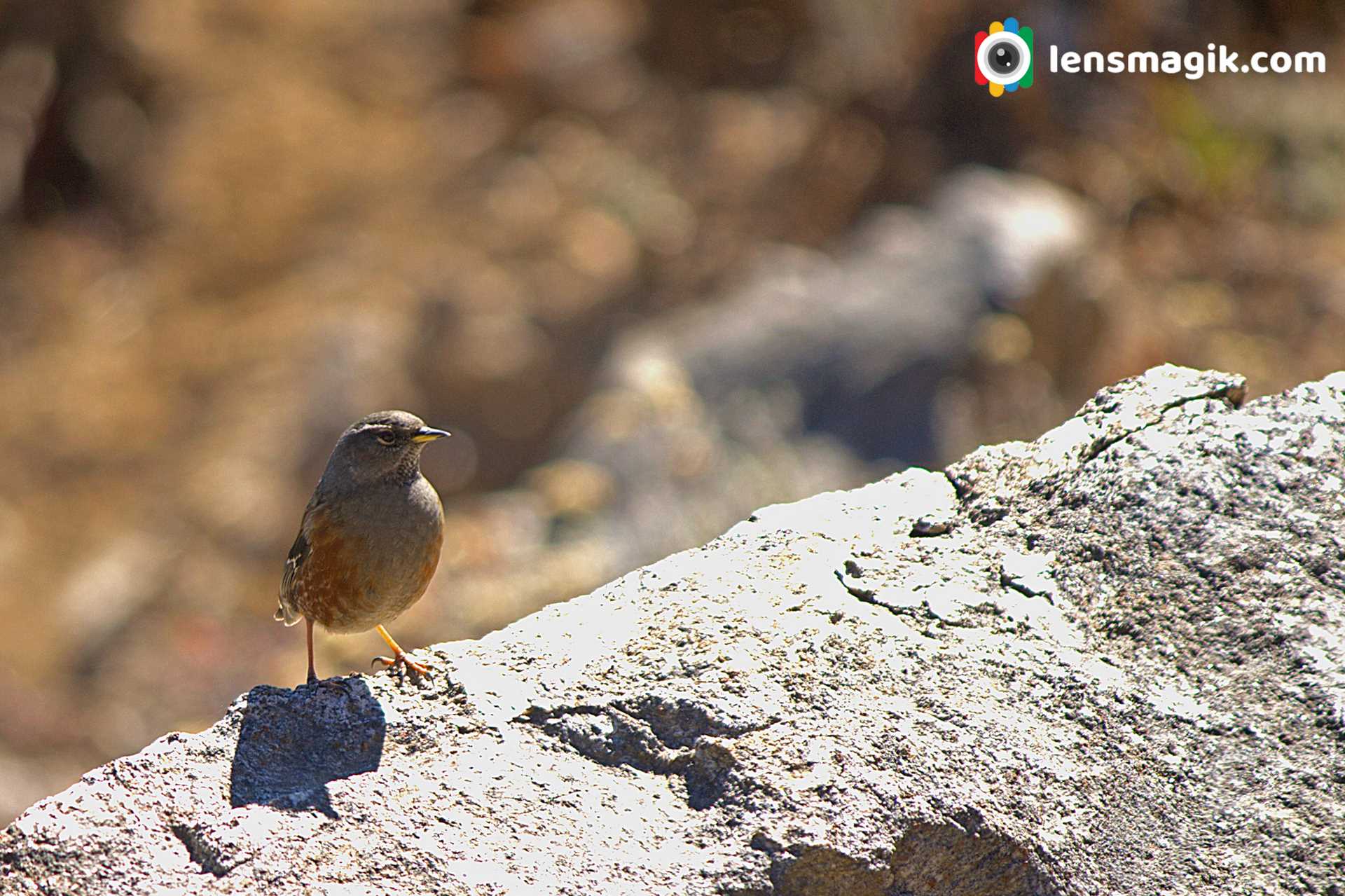
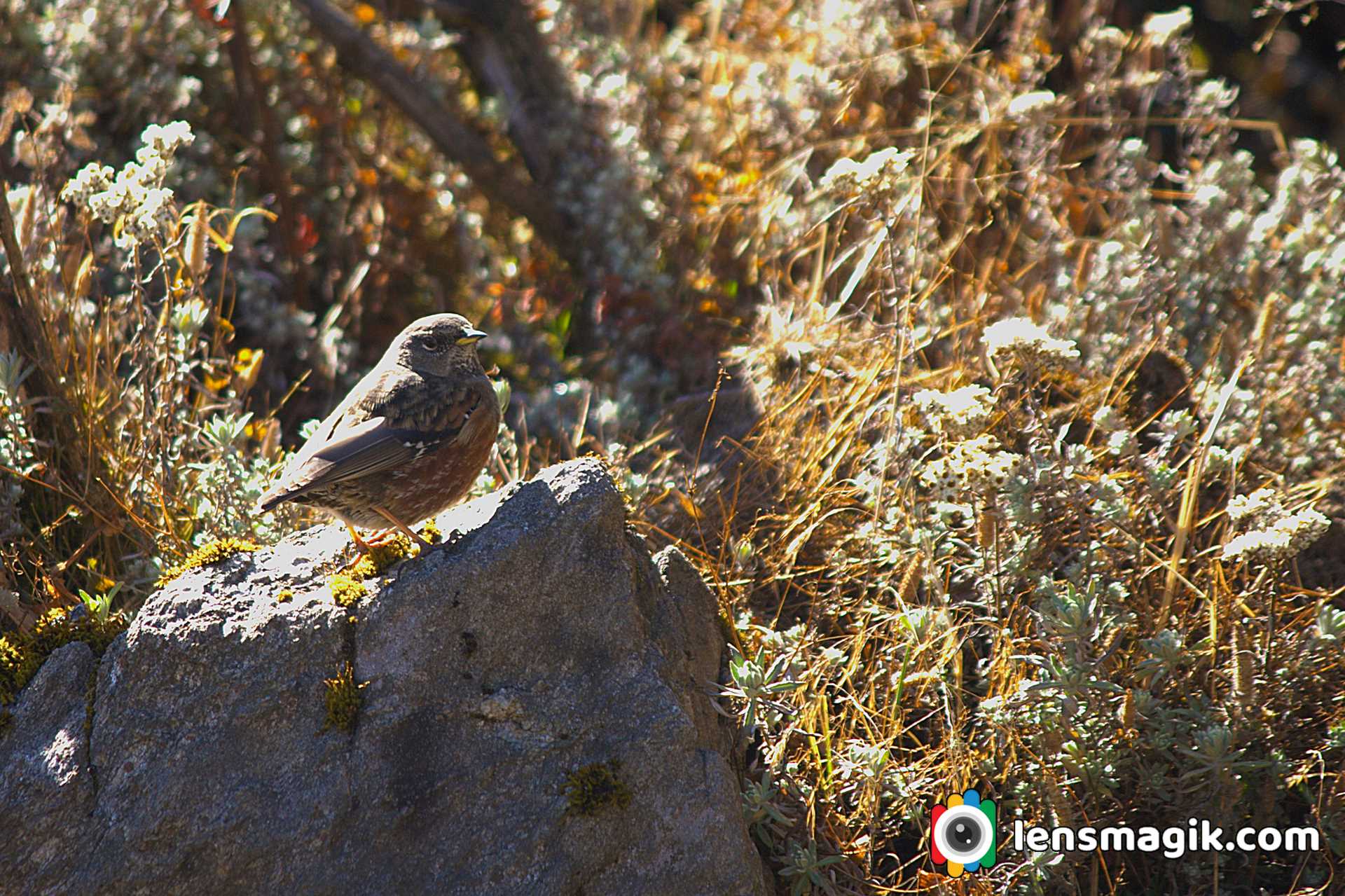
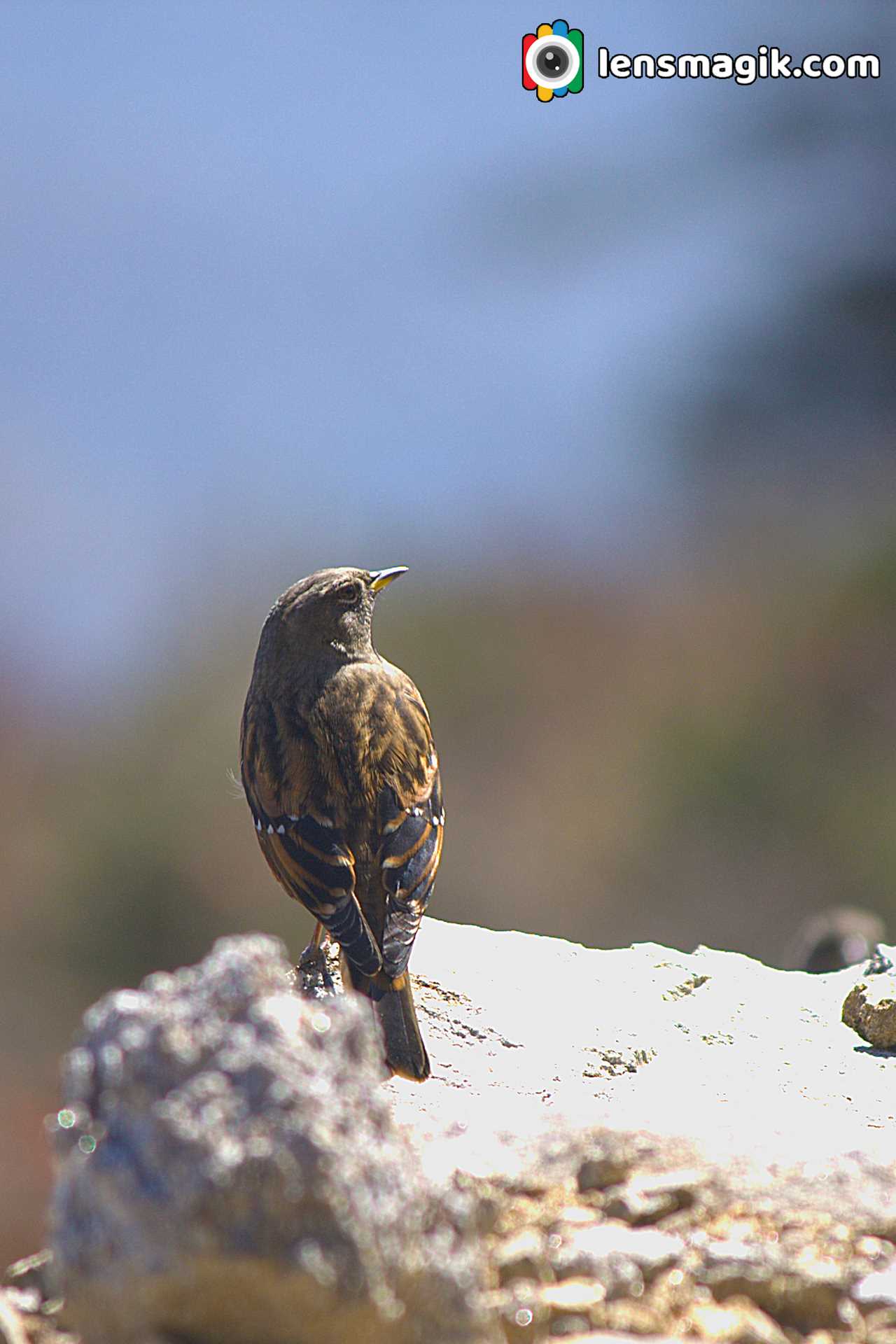
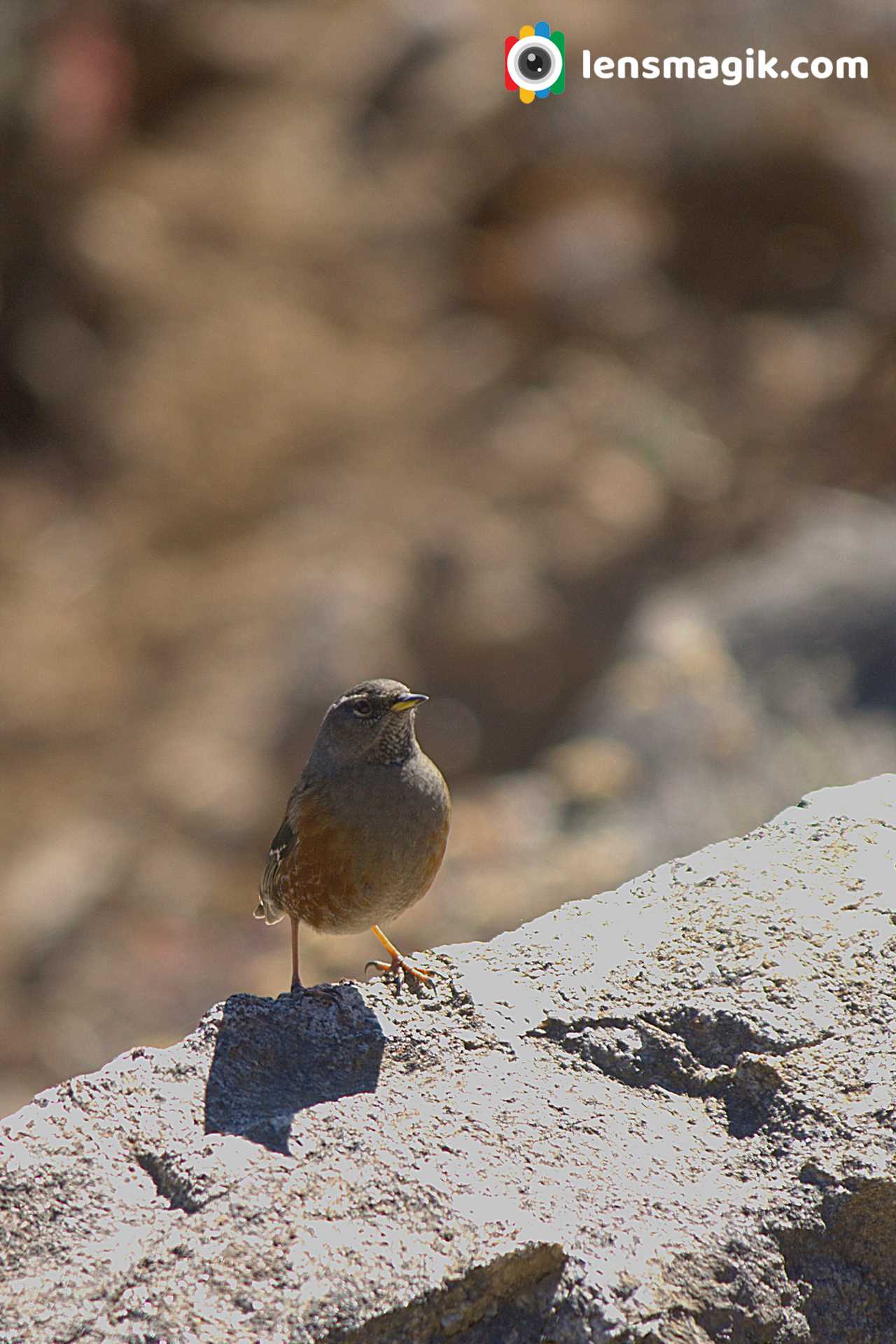
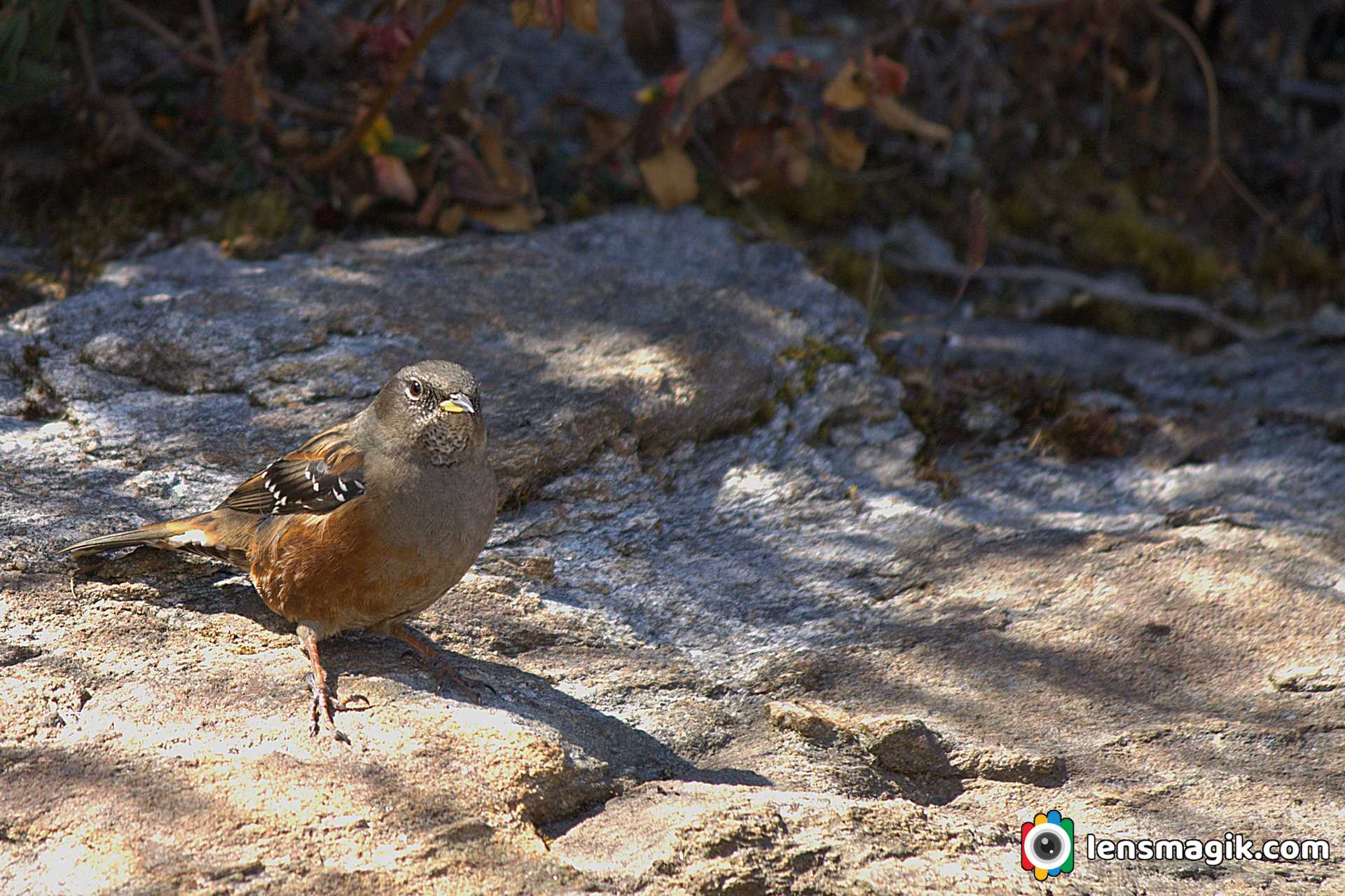
Alpine Accentor bird Binominal Name is Prunella Collaris . Total 9 subspices are recognised of Alpine Accentor bird.
Gear used : Canon 1000 D, Canon 55-250 mm Lens.
Road To Heaven is named to the road from Khavda to Dholavira in Kutch Gujarat. The road is so wonderful and scenery so it known as Road to Heaven . Khavda to Dholavira distance is around 58km but from Khavda there is a single line narrow road passes through small villages around 15-20 km approx. The main road starts after it and it is around 30-35 km approx. strait to Dholavira. Road is under constriction but almost 70-80% work done. The road heading to the city of Harappan Civilization Dholavira which is one of the largest site of Harappan Civilization and Indus valley Civilization.
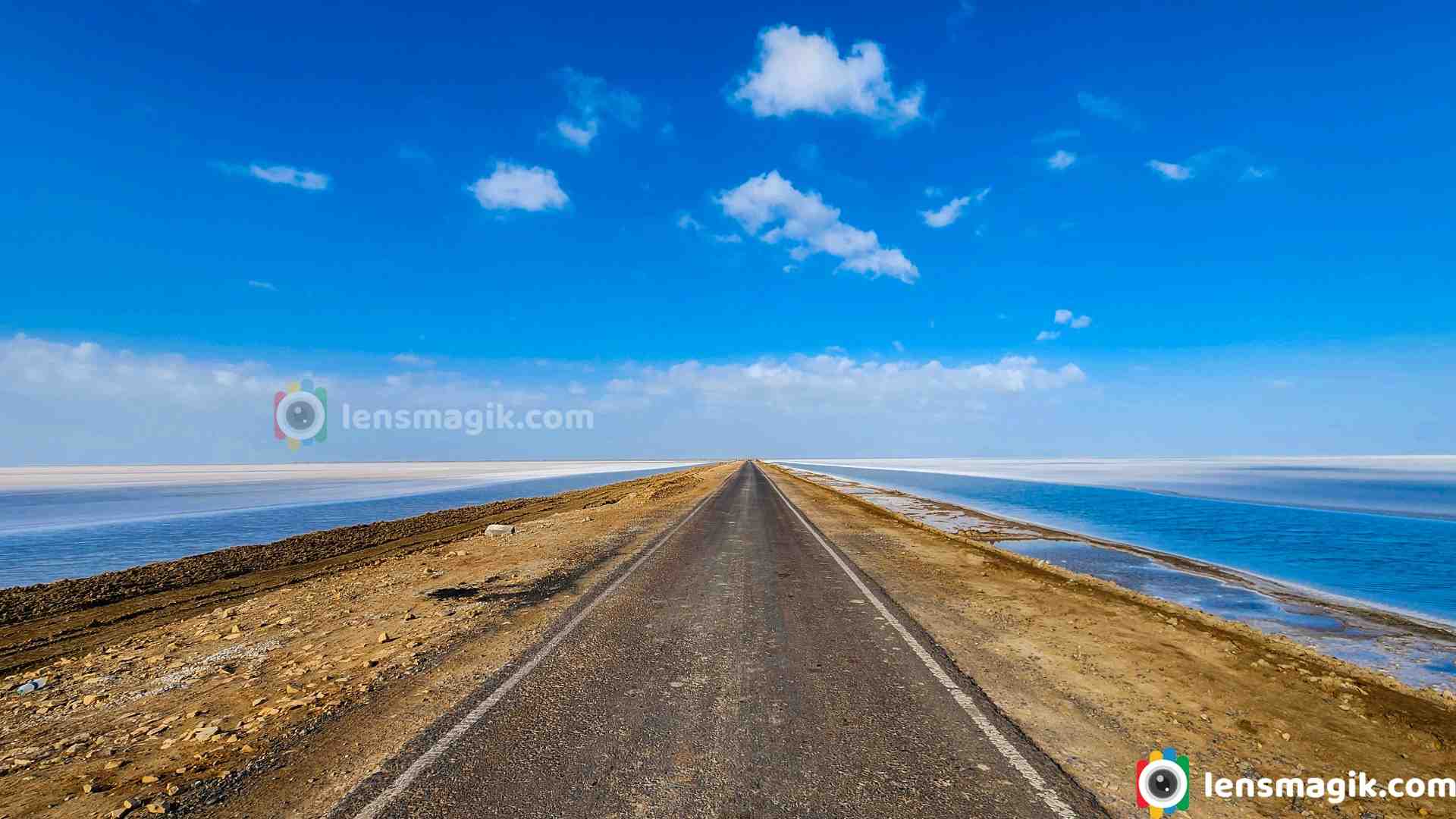
Kutch is a largest district of Gujarat and also of India. Main City or Headquarter of Kutch District is Bhuj. Kutch is famous for White Desert or White Rann. In Every winter season from December to February celebrate “ Rann Utsav “ to attract foreigners and also locals. Tent City made in white desert to stay and also cultural programs arranged in it. The main Rann Utsav held in Dhordo of Kutch.
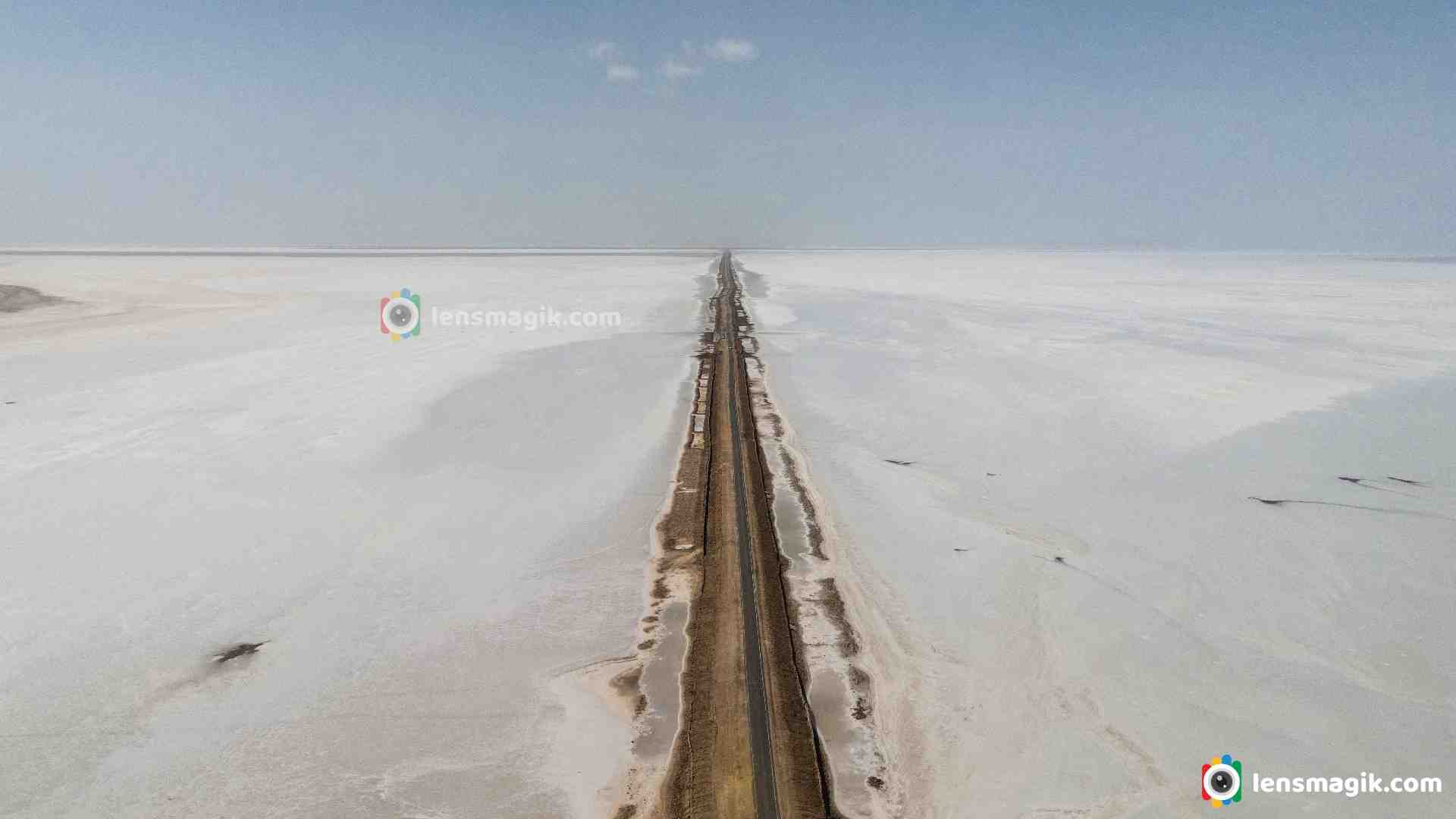
After visit White desert people also visit Dholavira which is nearest destination from Dhordo and also Kalo Dungar in between. From Dhordo you will have to go Khavda first and then from Khavda to Dholavira which is connected through “ Road To Heaven “. Dholavira is located at Khadir Bet. Khadir bet is separated because after monsoon the water filled outer side of bet. So the Road To Heaven is the way to connect Khadir bet to main city Bhuj.
About Road To Heaven Dholavira / Road to Heaven in Kutch :
- · It connected from Khavda to Dholavira.
- · Road to heaven distance around 30-35 km.
- · After monsoon the rain water on the both side of the road. You can see beautiful Greater Flamingo birds in between. Water level is low but muddy.
- · After winter in January –February the water on both side of the road is evaporated and turn into salt. Not all water but some areas during the road.
- · Water on the both side of the road or Salt/ white layer on both side of the road make the beauty of the road and that’s why it name as “ Road To Heaven “
- · When you are on the road there is hardly some traffic you face the open road with both side water or salt at morning or evening make the scenery like a Heaven.
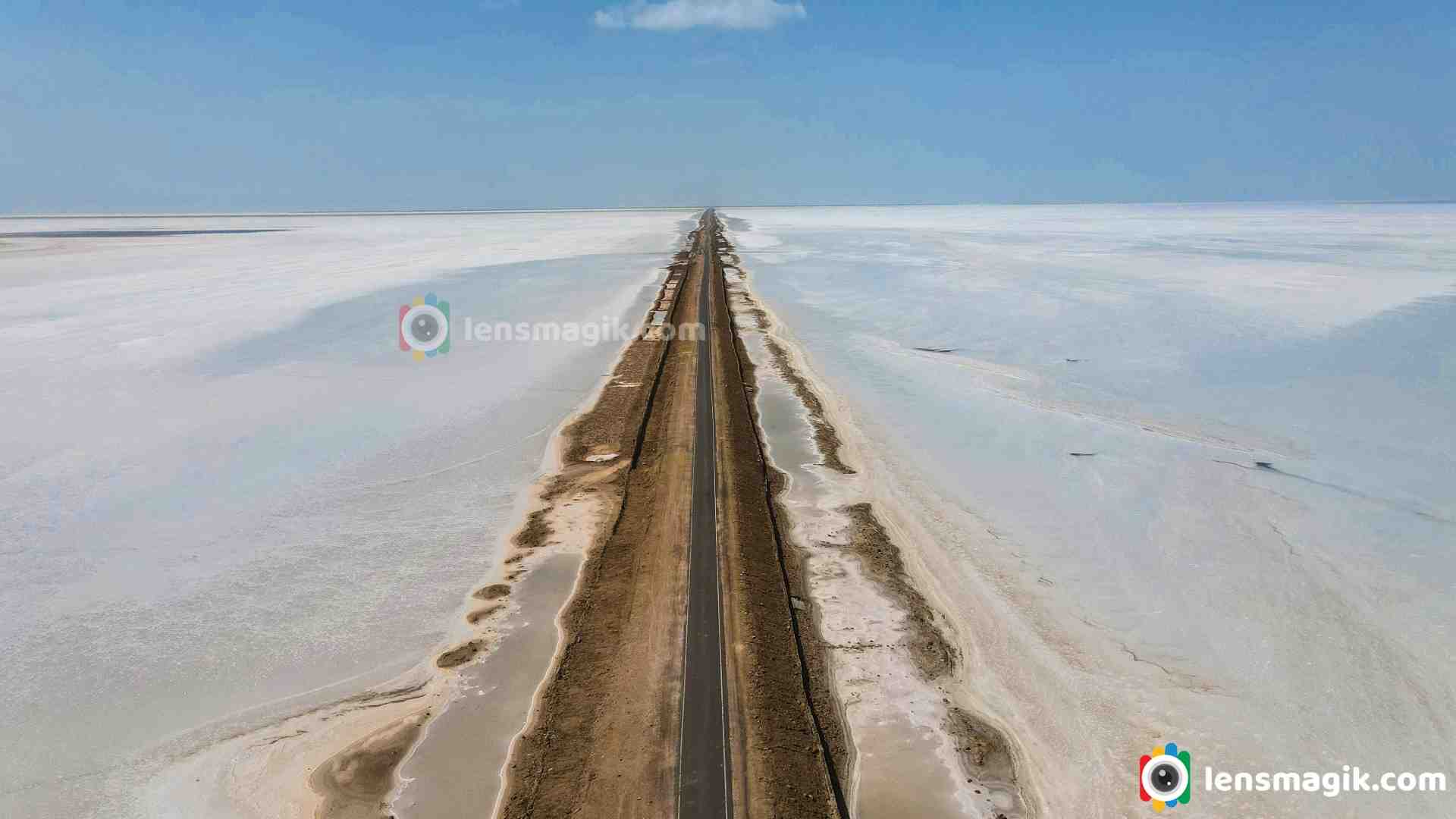
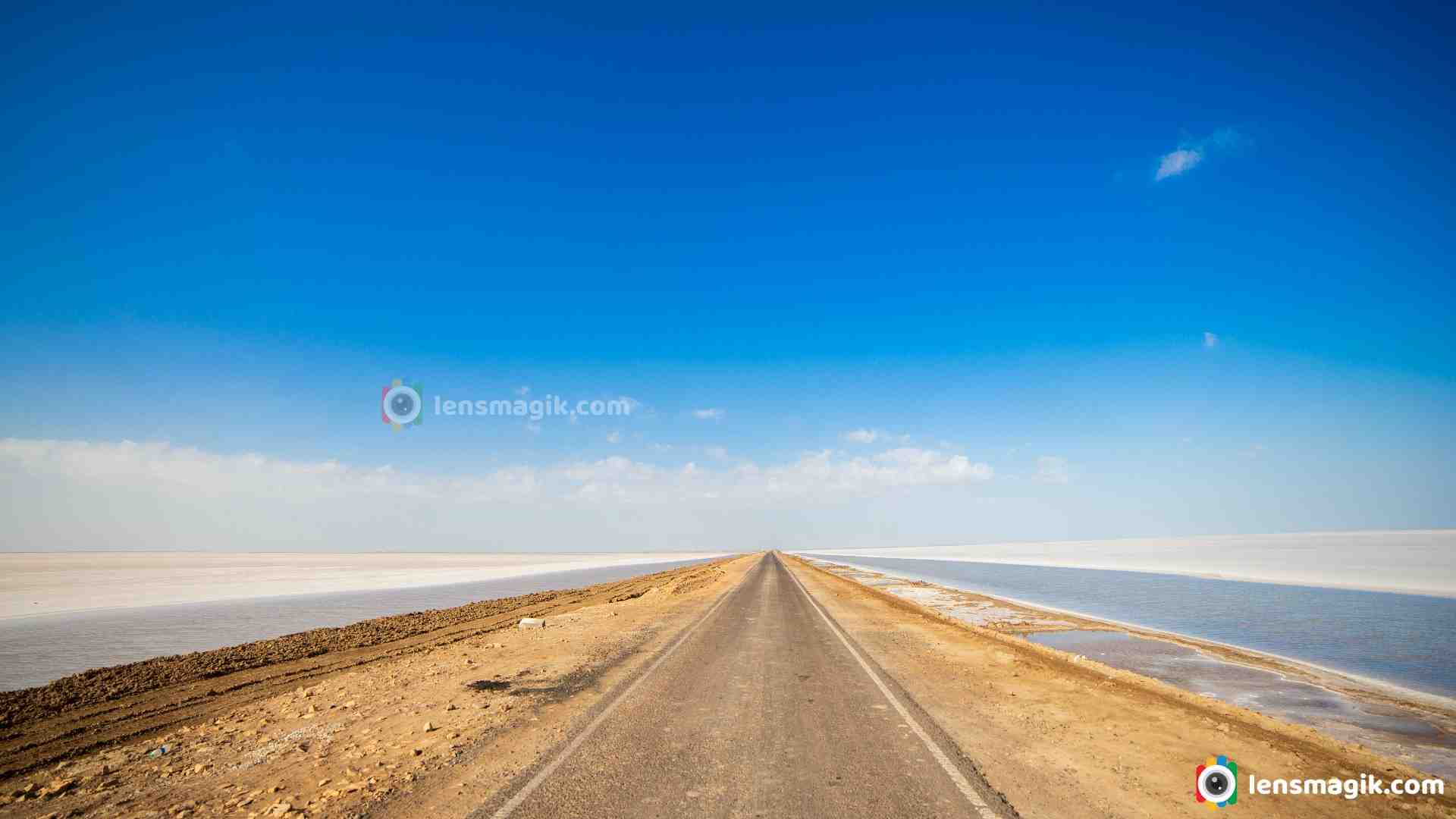
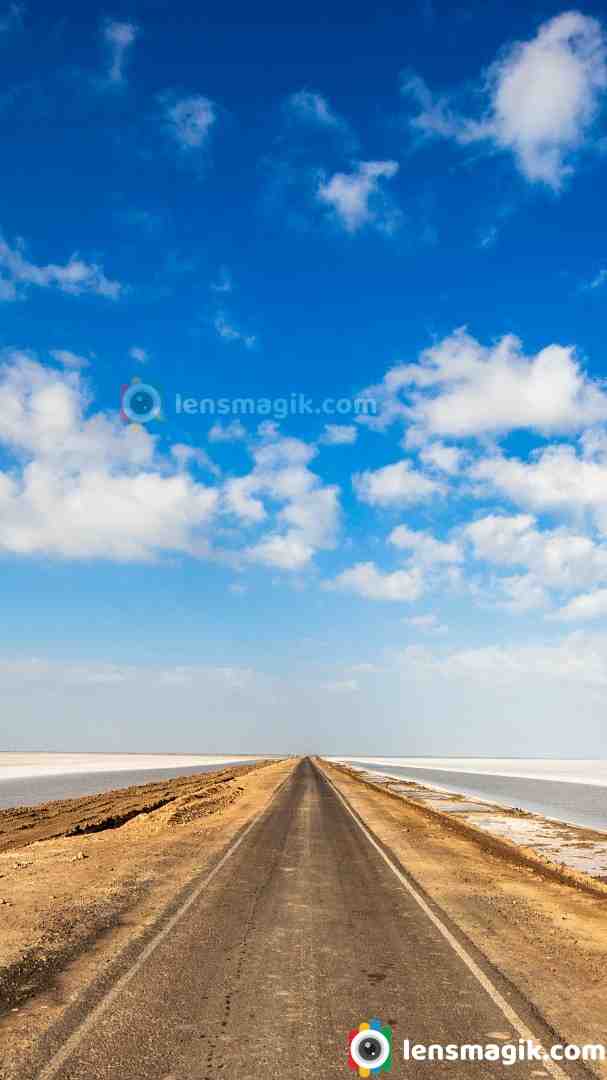
I must suggest to visit Road To Heaven in Kutch while you visit Kutch. Also Visit Dholavira which is one of the largest Harappan Civilization site.
Places to visit near Road To Heaven :
Dholavira, Kalo Dungar, Dhordo, White Desert
Places to Visit near Bhuj : White Desert , Kadiya dhro, Chhatardi, Mandvi beach, Vijay vilas palace, Bhujyo Dungar, Smriti Van, Vande matram memorial
Camera Used : Canon 80D, Canon 6D, DJI Mavic Air2
It is the largest species of Flamingo bird family and also a most widespread species of flamingo family.It is found in India ,south east , middle east and Africa. It is migratory bird. They also breed in India. In Gujarat they breed in Rann Of Kutch , Little Rann of Kutch also found in Thol Bird Sanctuary. I often visit Thol sanctuary so got good shots of them. Best time for shoot them is may-Jun at Thol bird sanctuary bcz of water level is too low . It is been recorded that some flamingo birds are resident in Gujarat at many places like LRK, Khijadia sanctuary, Nalsarovar and Thol Sanctuary. They also breed here and stay for all seasons. So you can find greater flamingo birds in all seasons in Gujarat at many places.
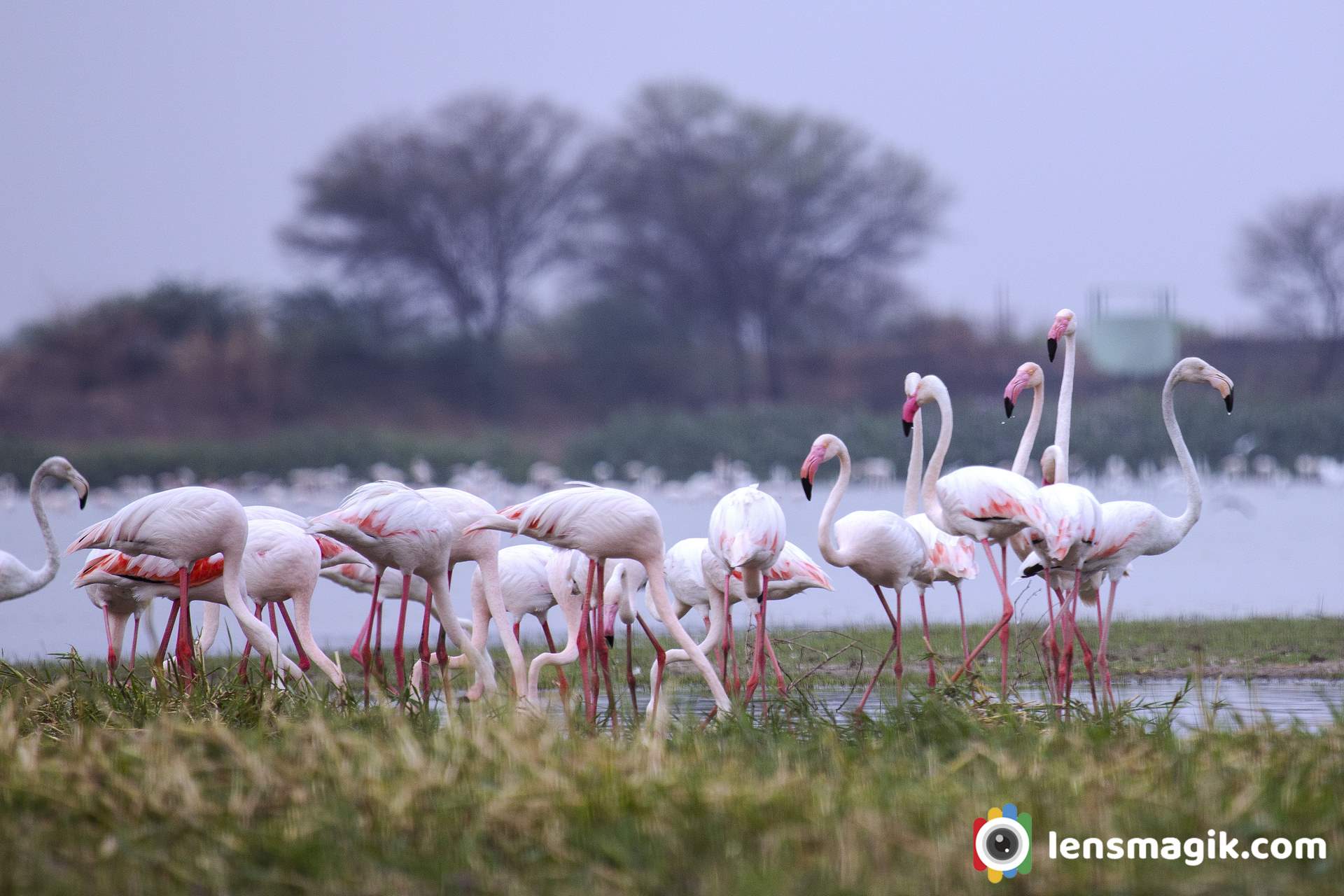
Flamingo bird facts and description :
- Greater flamingo bird is the largest living spices of flamingo.
- Greater flamingo has no subspices.
- Flamingo color most of pinkish white in plumage. Wings are red and feathers are black in end.
- Greater Flamingo bird call is like honking.
- The average lifespan of flamingo bird is 30-40 years.
- Main Difference between Greater flamingo and lesser flamingo is height . Lesser flamingo is shorter than greater flamingo. Also Greater flamingo has pale pink bill and black tip. In other case lesser flamingo has dark crimson bill. Lesser flamingo is also more red in color than greater flamingos.
Greater Flamingo birds In Thol Lake : Thol sanctuary is often i visit. Flamingo birds are stay here all seasons. I got good numbers of Greater flamingo and lesser flamingo bird images in a group when i visit Thol. This is my best time with flamingos. Also i got some beautiful pictures of flamingo birds with group and also in duo with some masti. Flamingos looks very good in frame bcz of their color. Thol lake is good place for birders because more than 150 birds spices found here. Also some mammals like Blue bull and black buck also found here. Lots of water birds and tree birds found here. Also sanctuary is not so big so you can find all birds in around 6 sqkm area. Best time to visit thol lake is November to March. All migratory birds are visit in winter so that is best time. Early morning is best for birders.
Timing And Fees of Thol Sanctuary :
Thol Sanctuary open at 6 AM in morning and close at around 5 PM
Fees of Thol Sanctuary is 50 INR per person and camera fees are 200 INR. Car fees are 500 INR.
Weekend fees may change that actually i don't know about it.
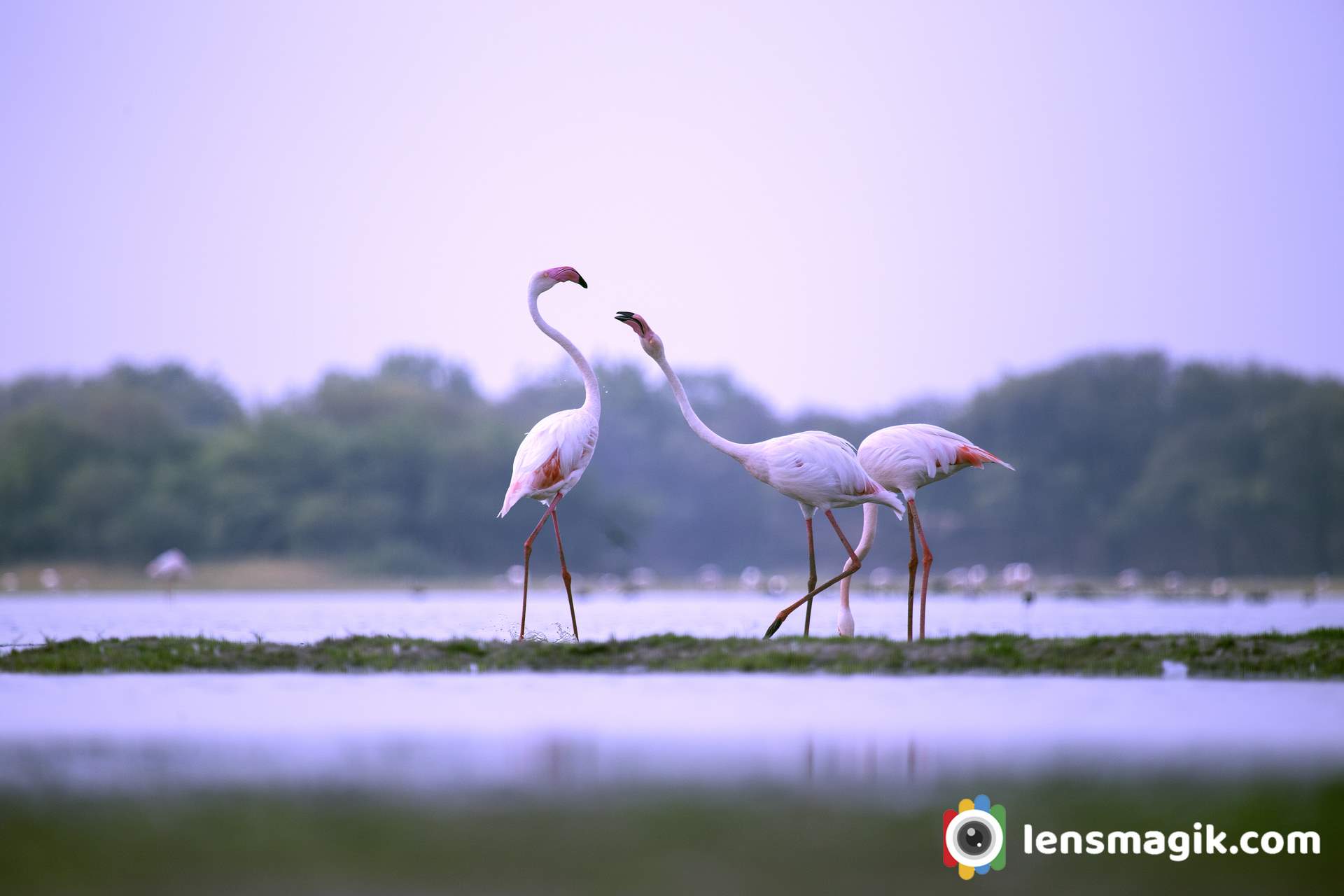
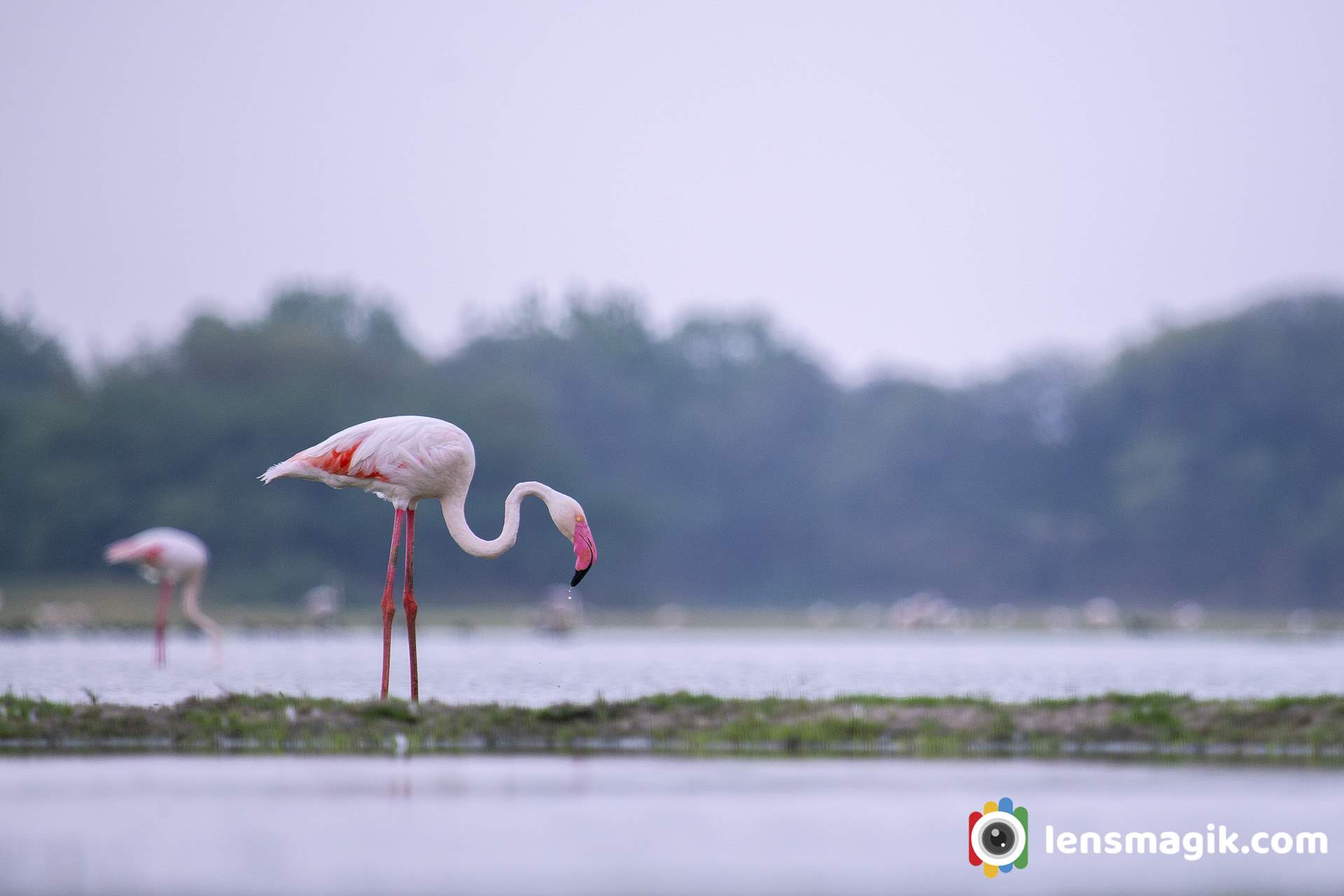
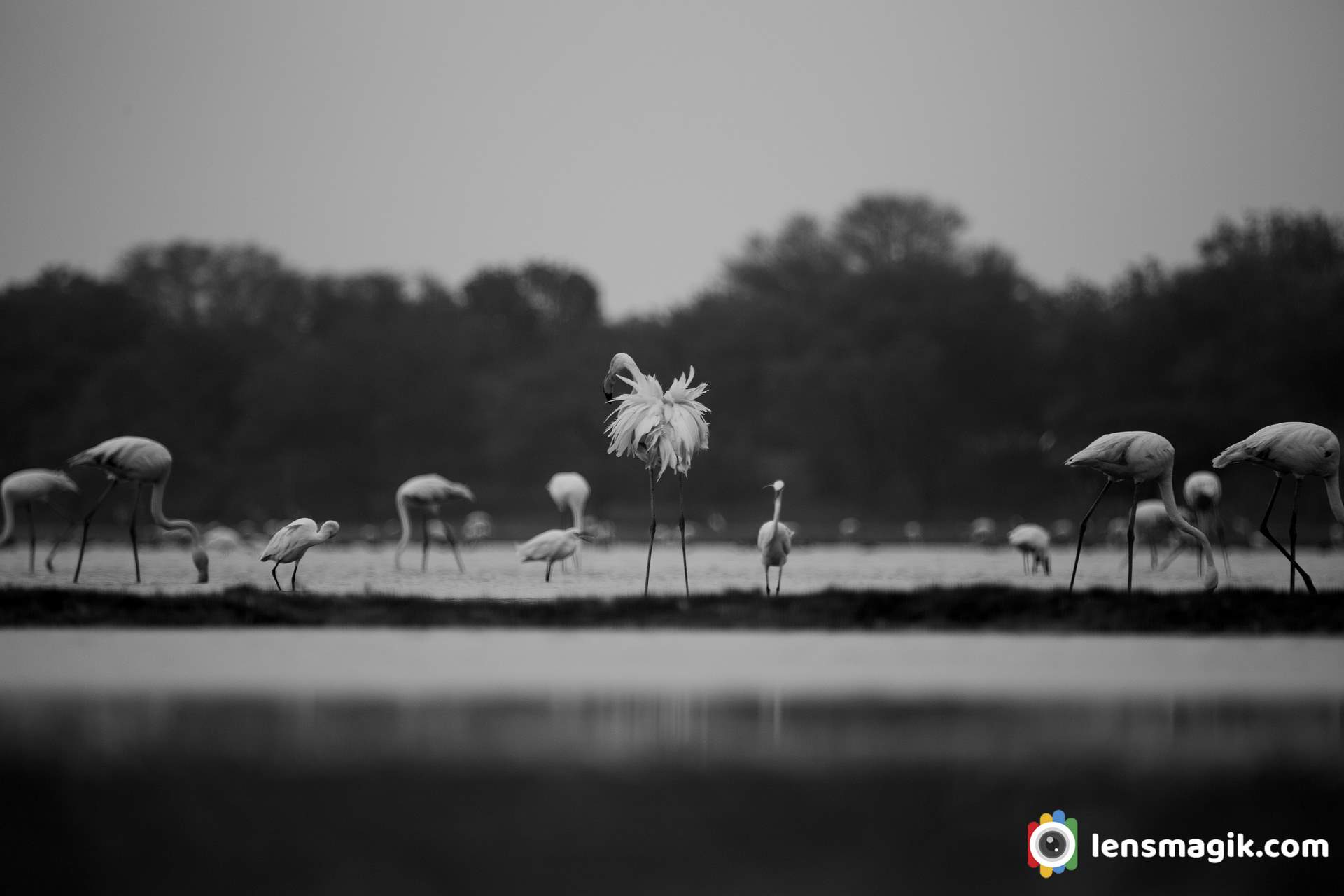
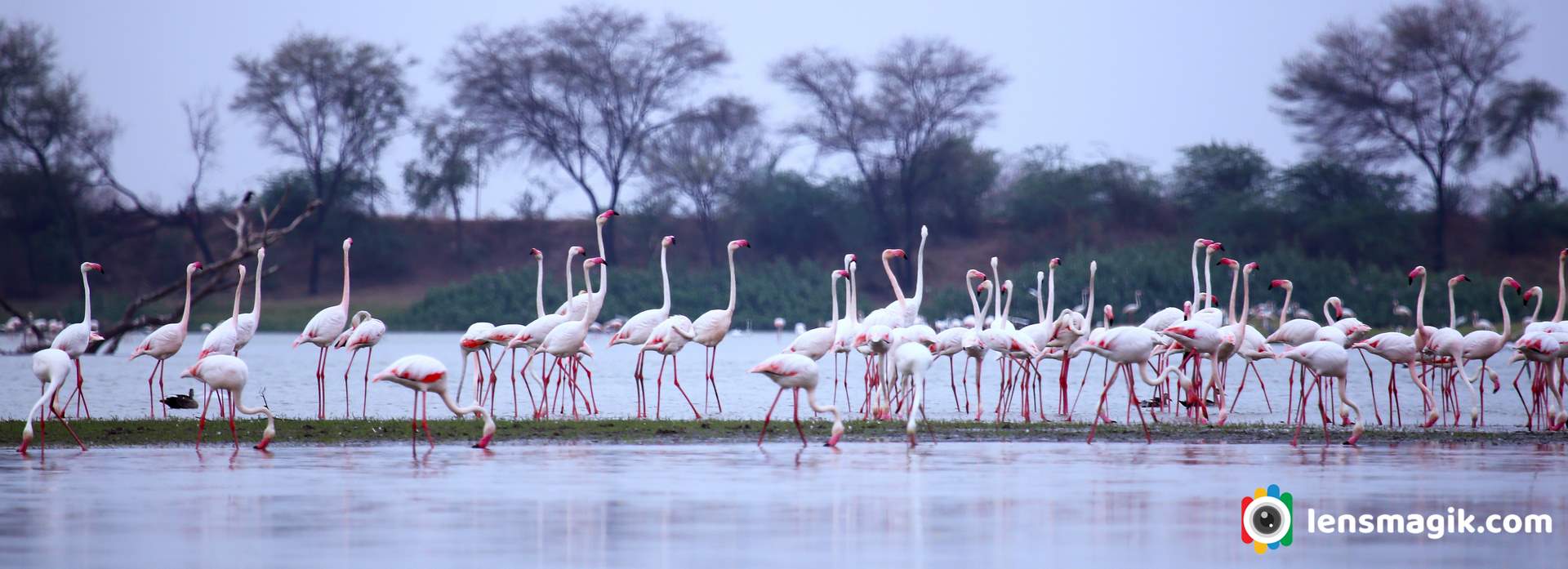
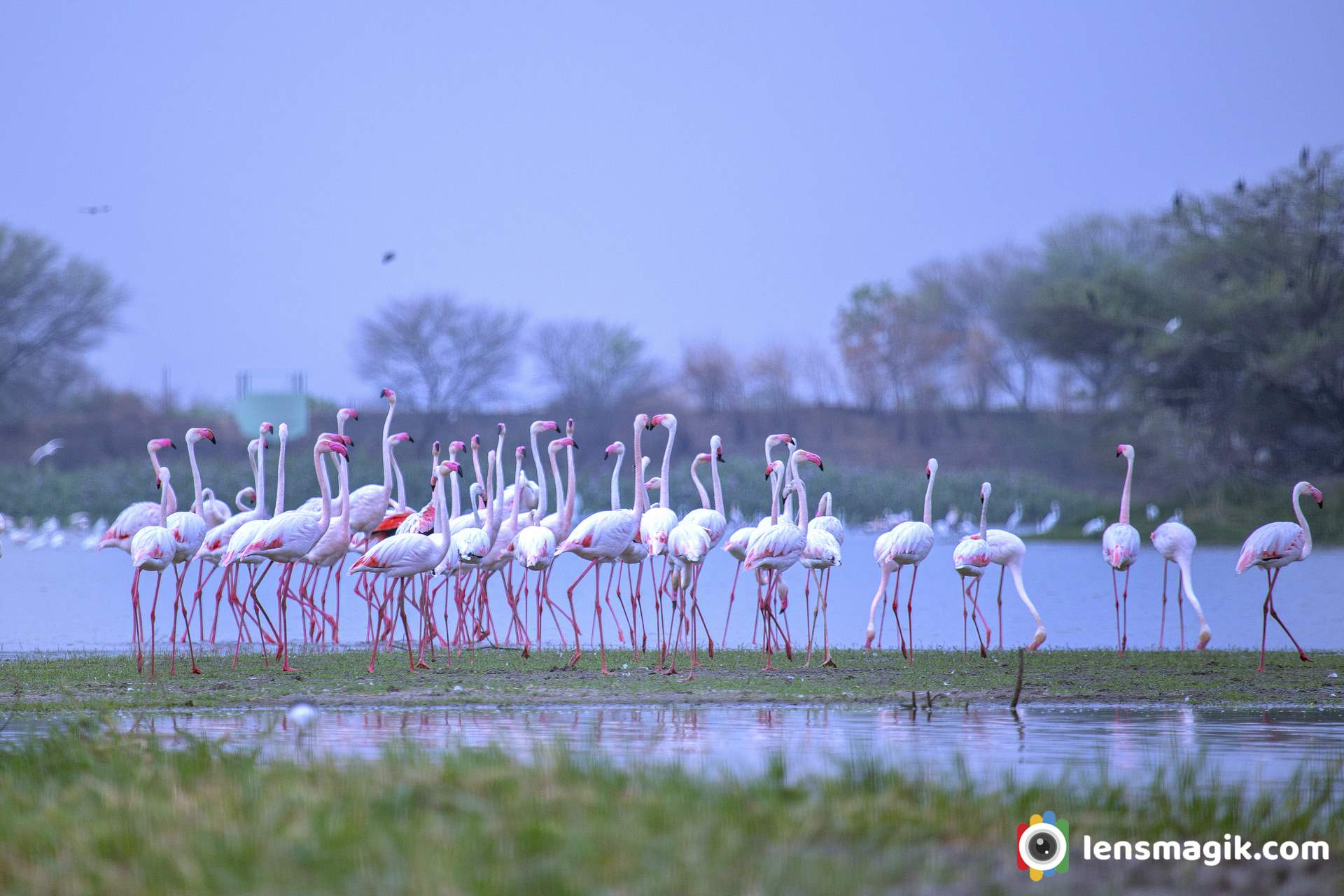
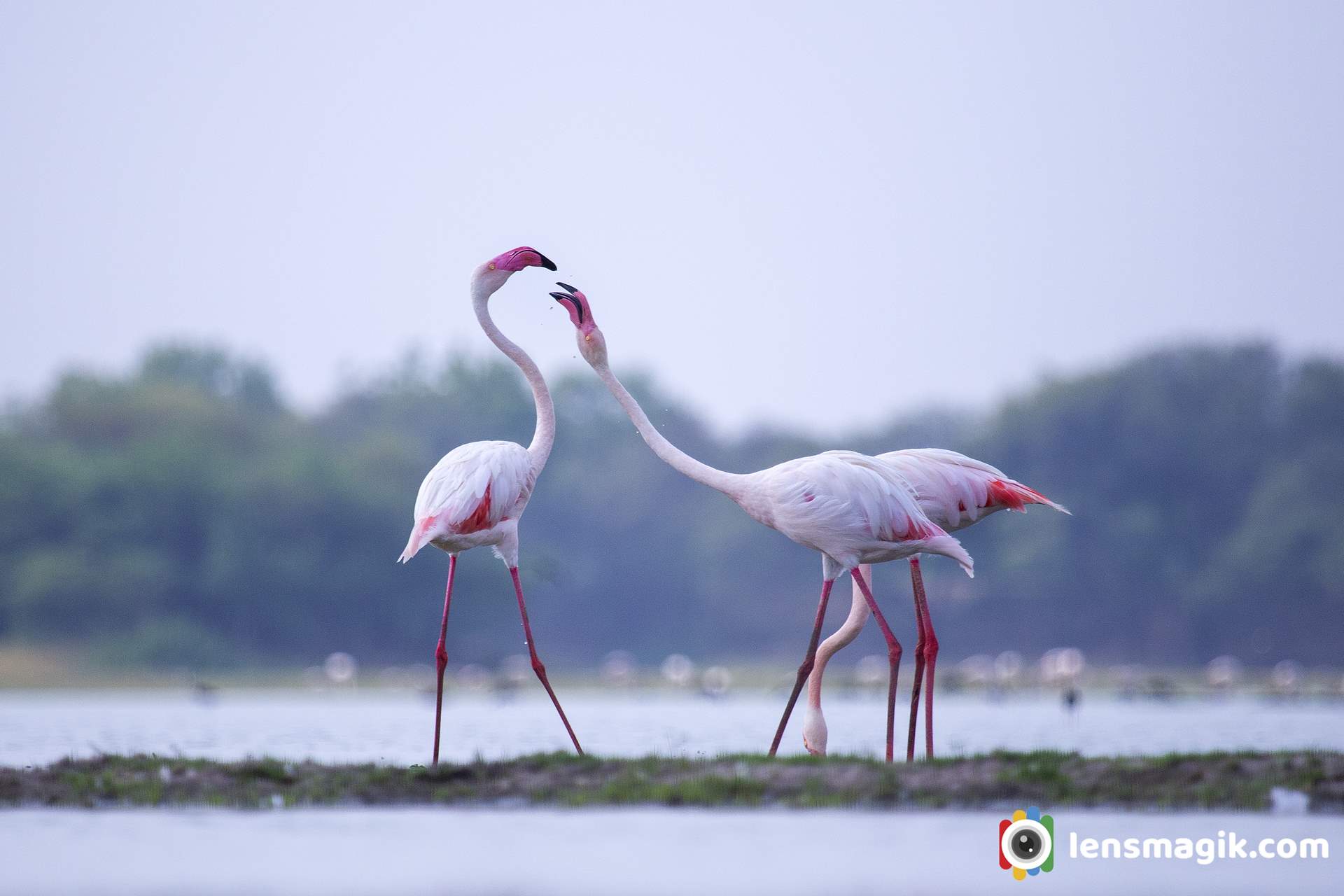
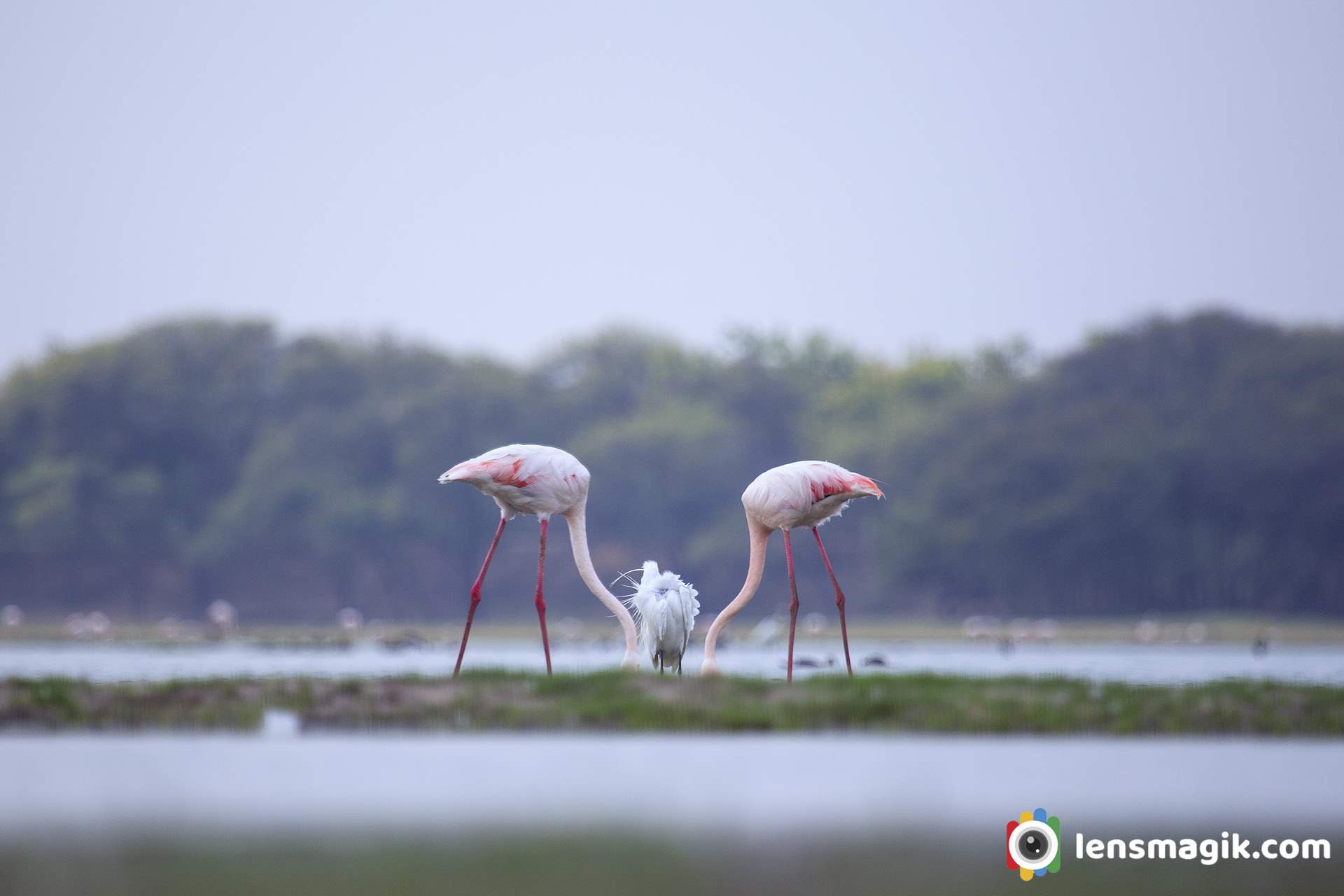
Two flamingos with little egret in between of them with down head all. The images of flamingo bird making a good frame. Because of its color flamingo birds images are very attractive and also their grouping make a perfect frame of flamingo bird picture.
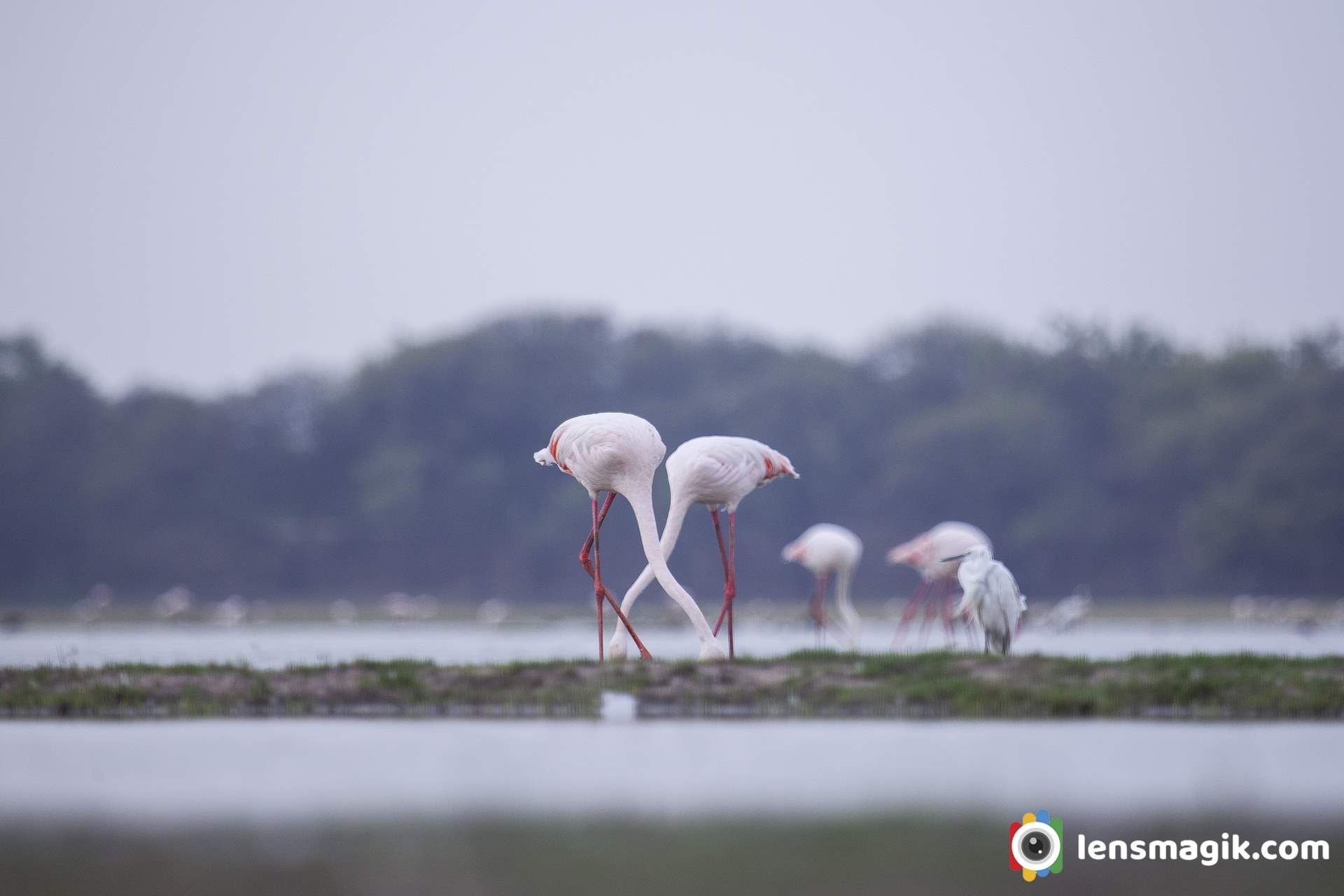
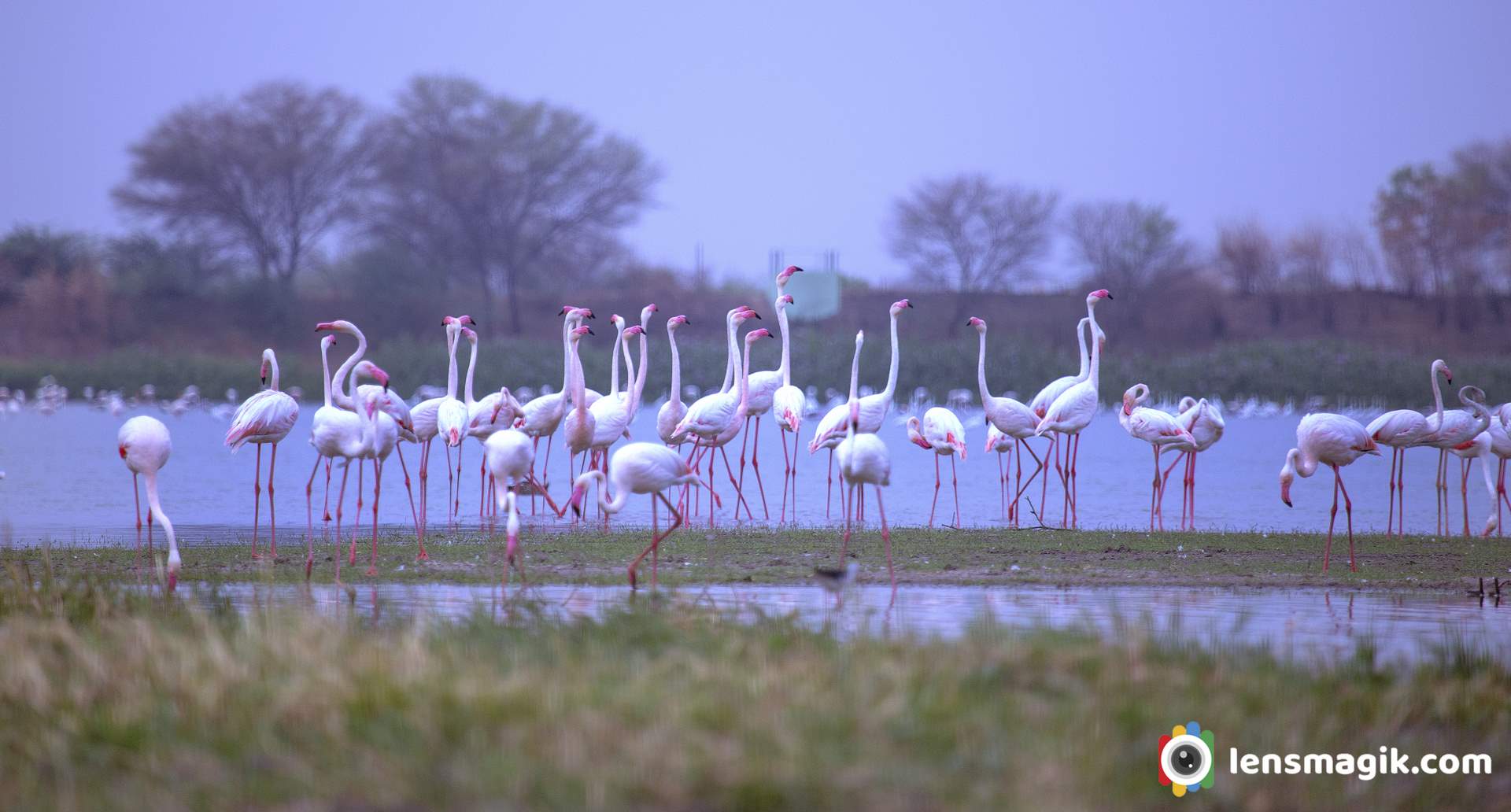
A morning pared time for flamingo birds. A beautiful Greater flamingo birds are in a raw make image nice and show their unity.
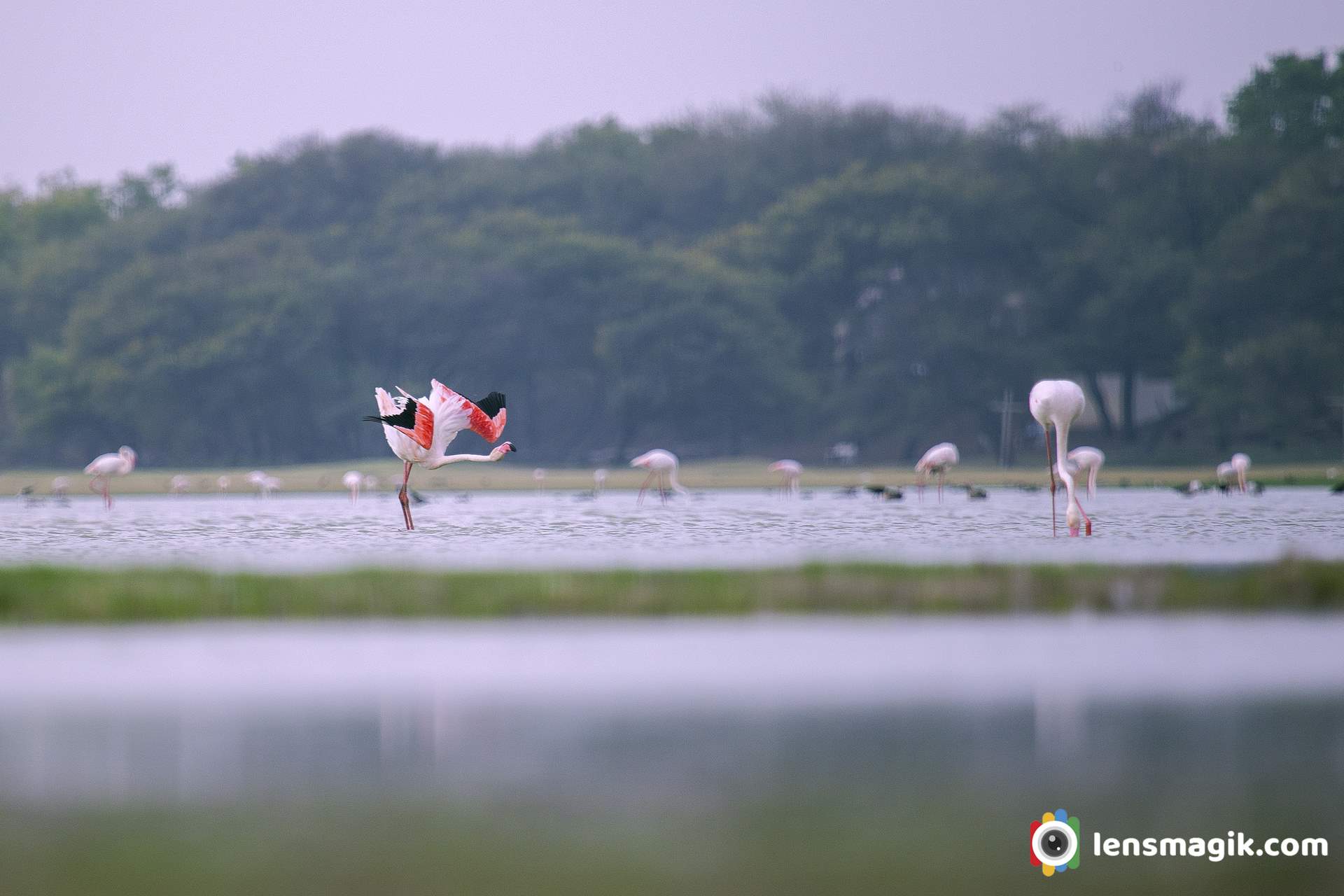
Perfact wingspan of Flamingo bird looks great. Pink Wings make image more attractive.
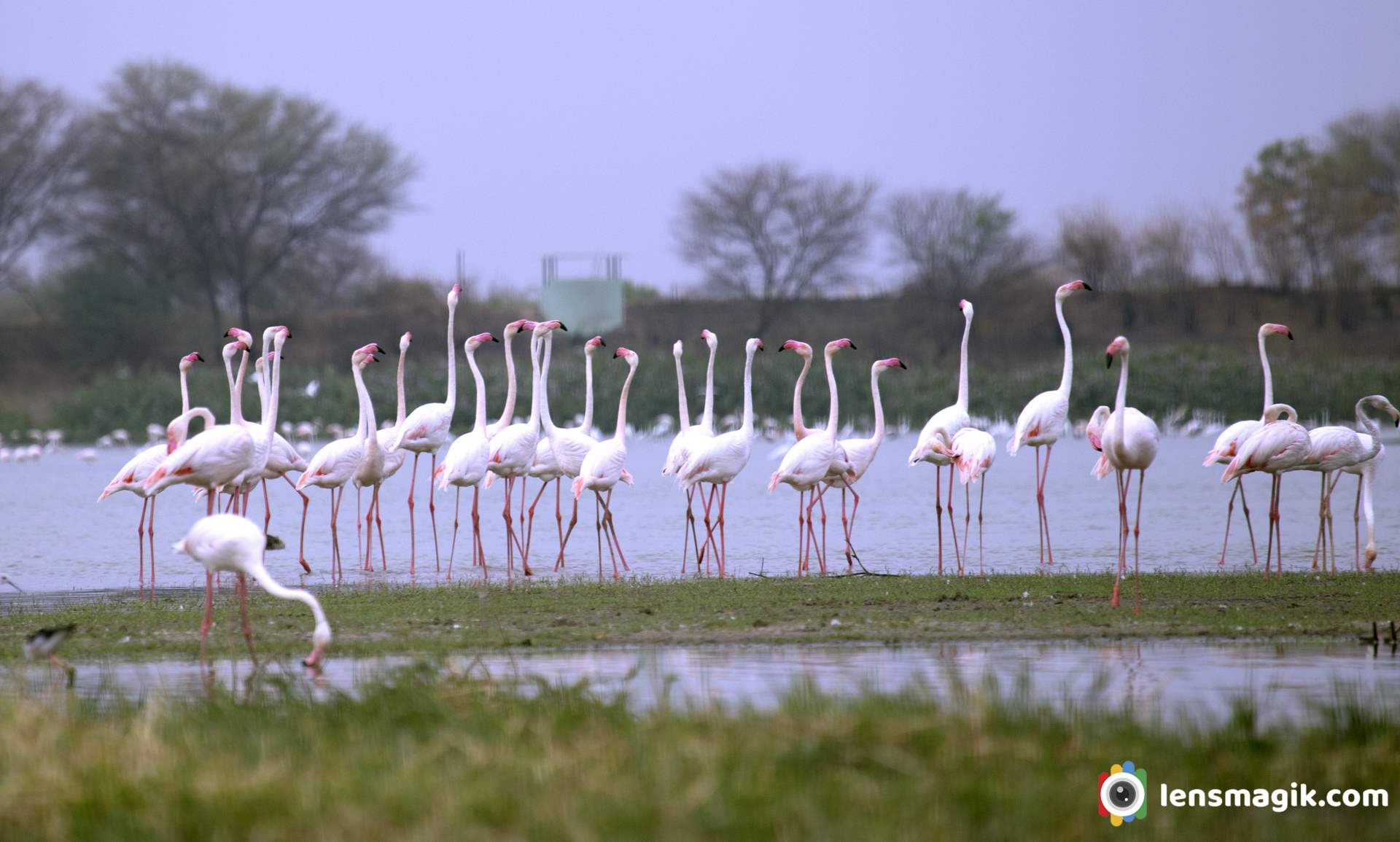
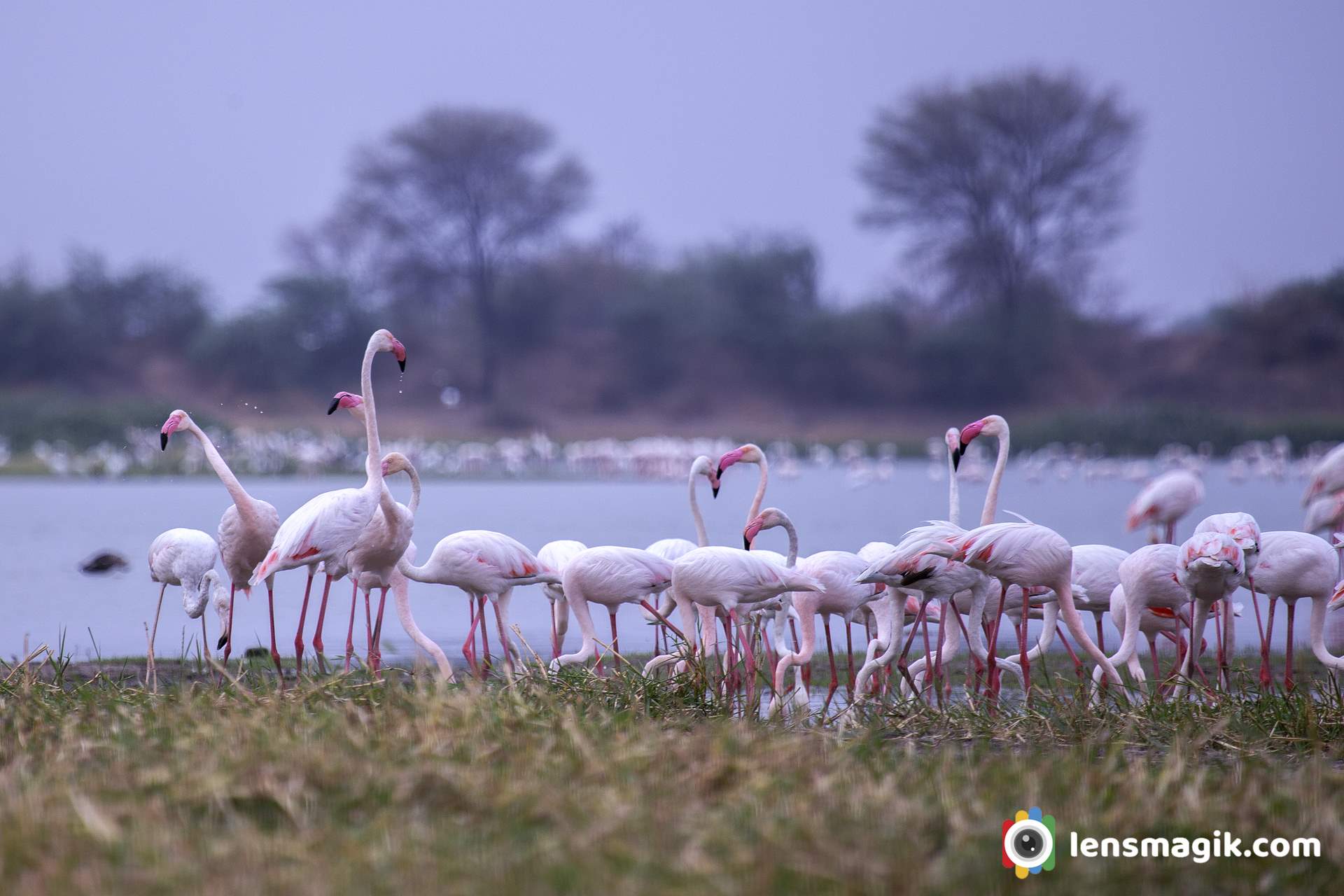
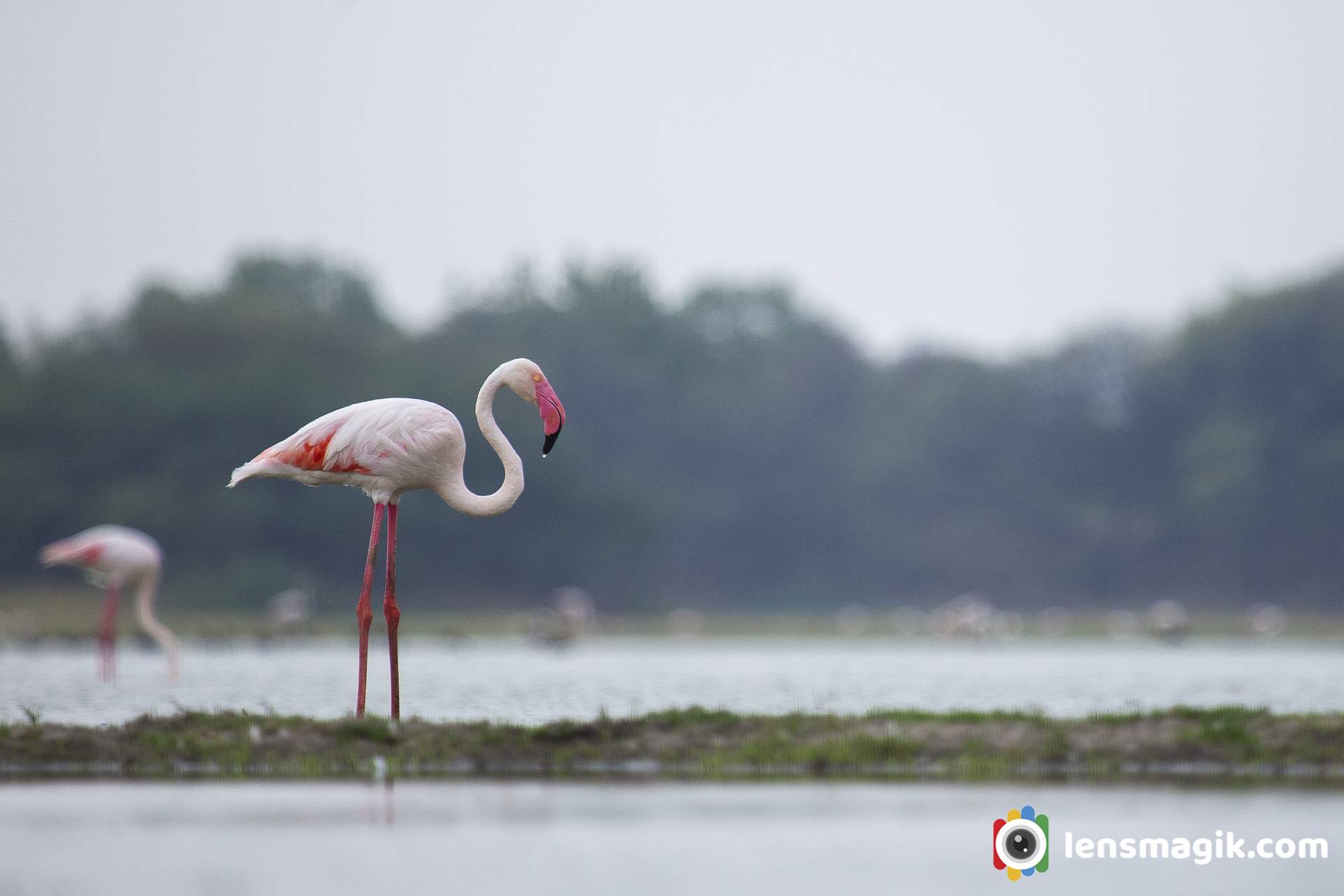
Solo Greater flamingo bird
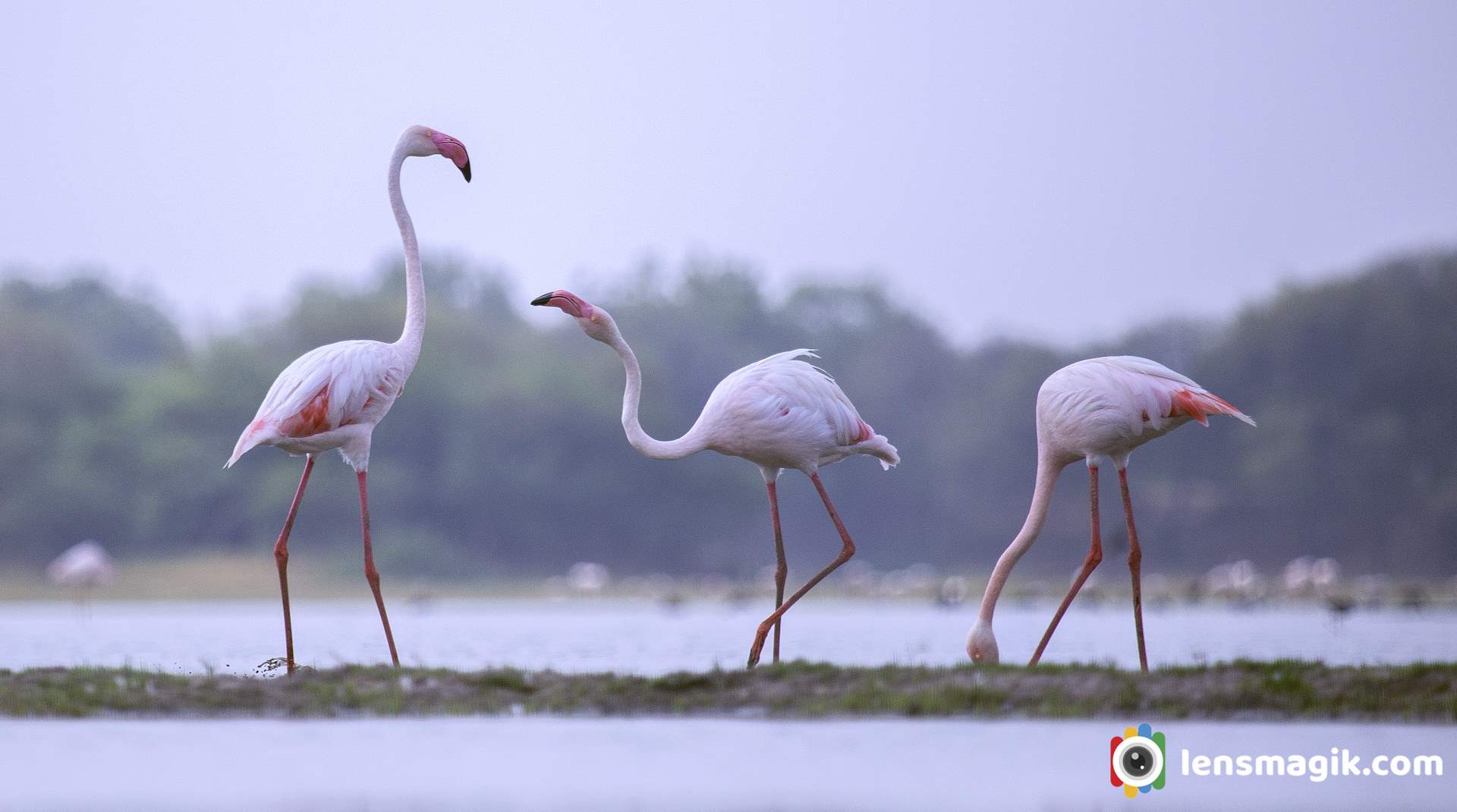
Some masti time for two flamingo birds .
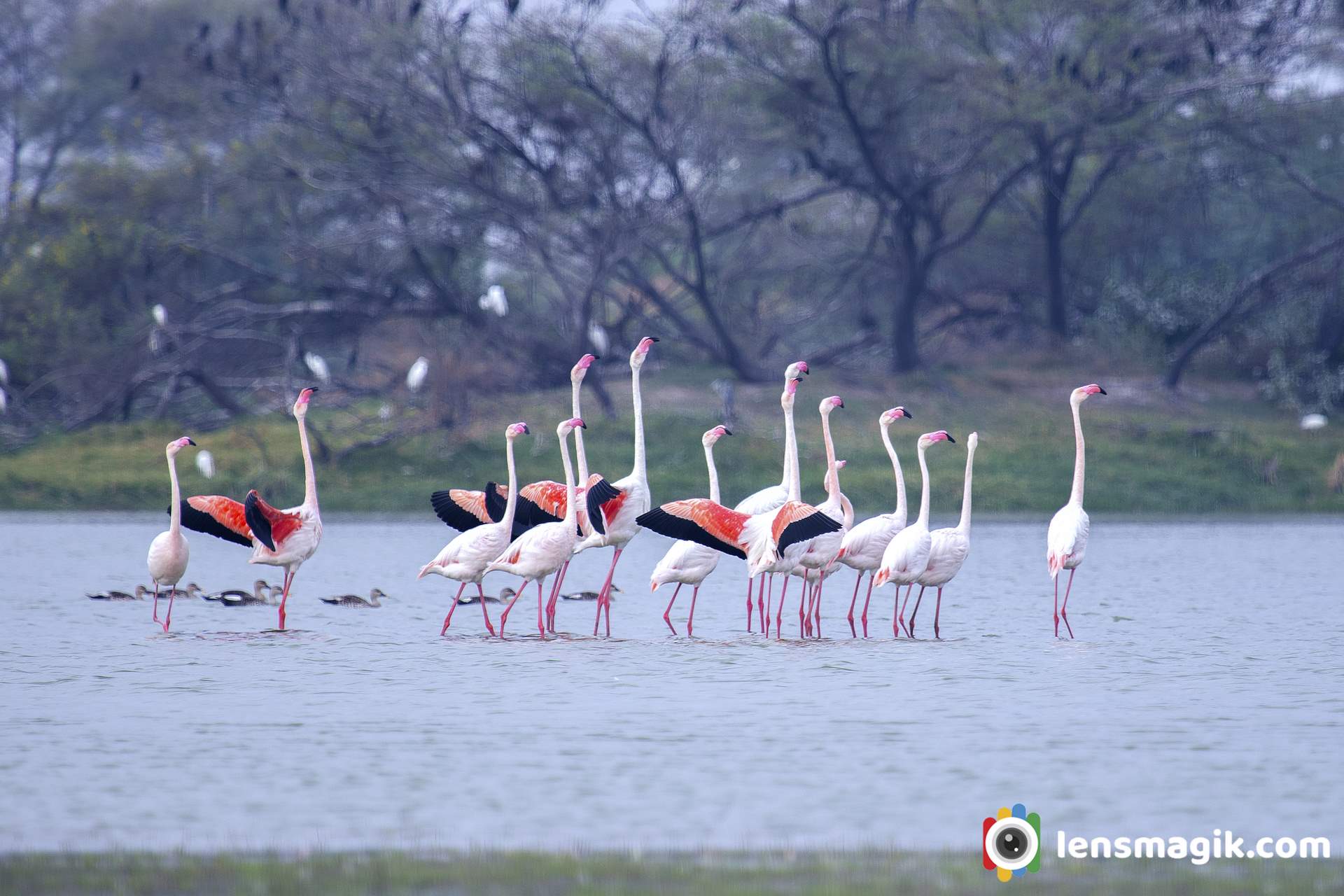
Above image shows the discipline of Flamingo Bird and looks like a morning pared they are doing .
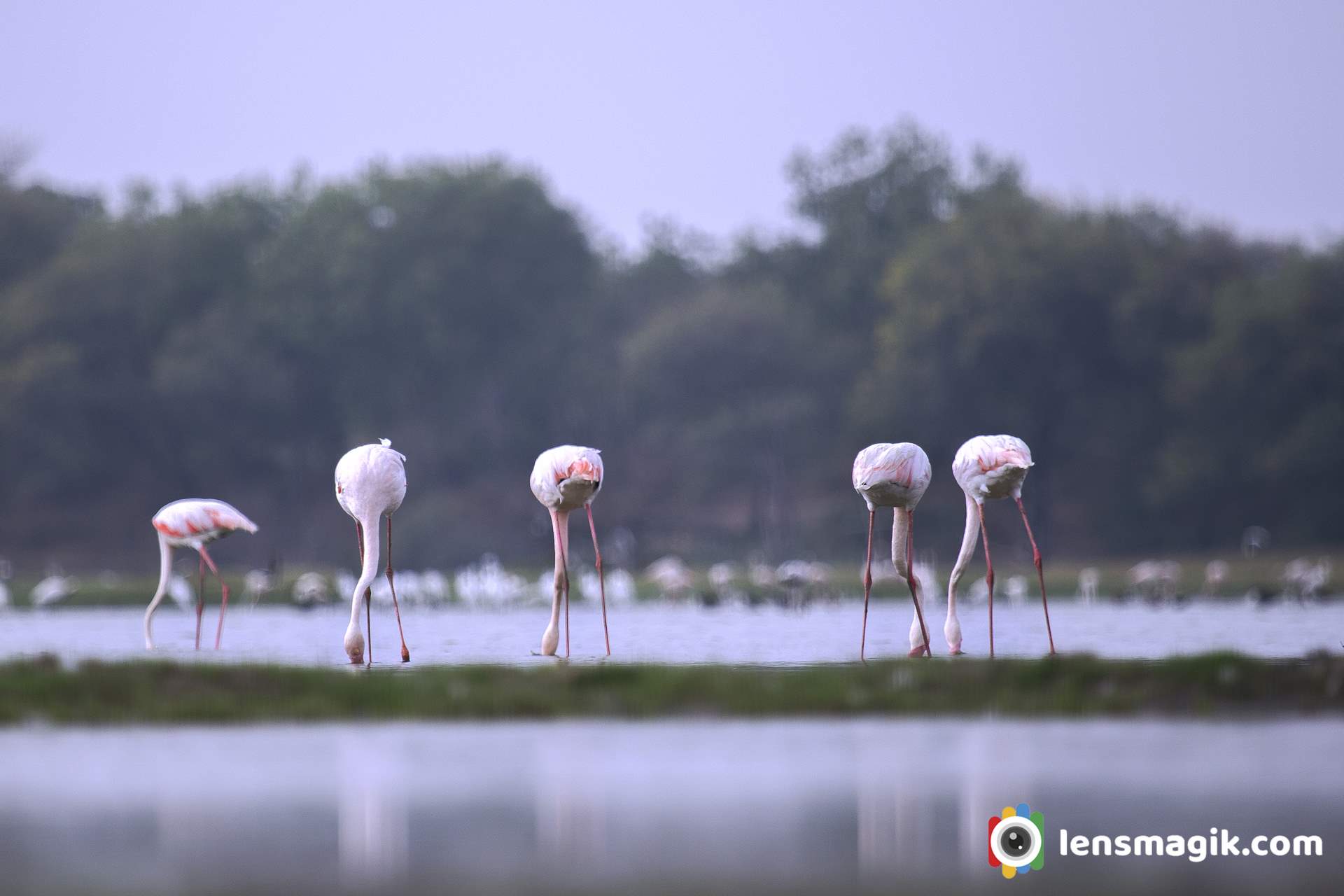
https://youtu.be/9dVBrR9NSOo
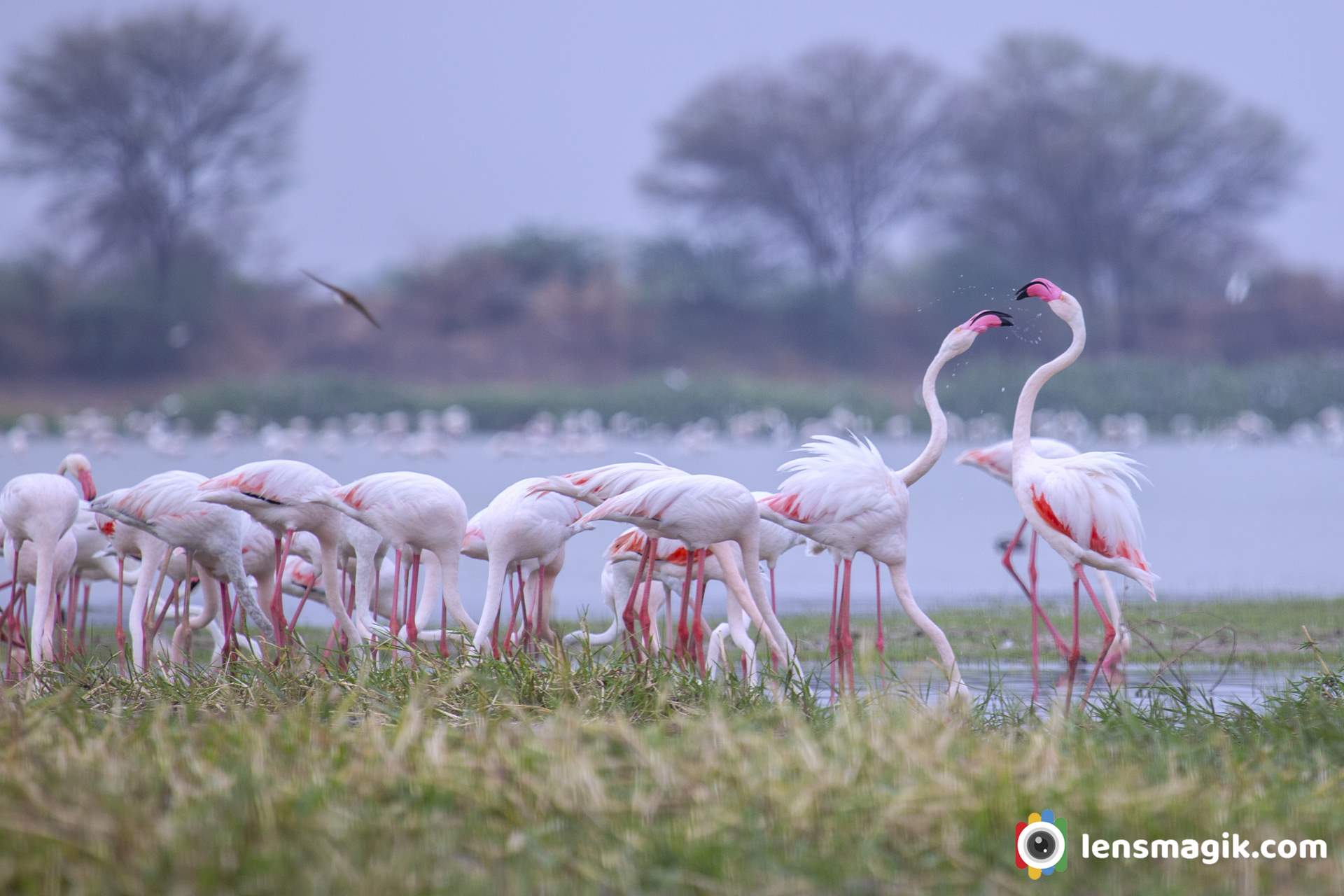
A group of Flamingo Birds at Thol Lake make your frame awesome.
Location : Thol Lake, Gujarat
Thol lake is just 25 km approx. from Ahmedabad. You can visit one day for Thol lake is enough. Also you can find another migratory birds like pelicans , bar headed goose, river tern and many more resident spices.
Ahmedabad to Thol lake distance about 25km
Thol bird sanctuary is located in Kadi Taluka in Mehsana District near sanand Gujarat. It is an artificial lake located near village Thol. In 1912 thol lake was built and it was declared as a Sanctuary in 1988. The main use of lake is use of water for irrigation. The Thol Bird Sanctuary or a Thol lake wildlife Sanctuary India is a habitat of more than 150 spices of birds. Also it is famous for migratory birds Flamingos and Sarus Crane which breeds here.
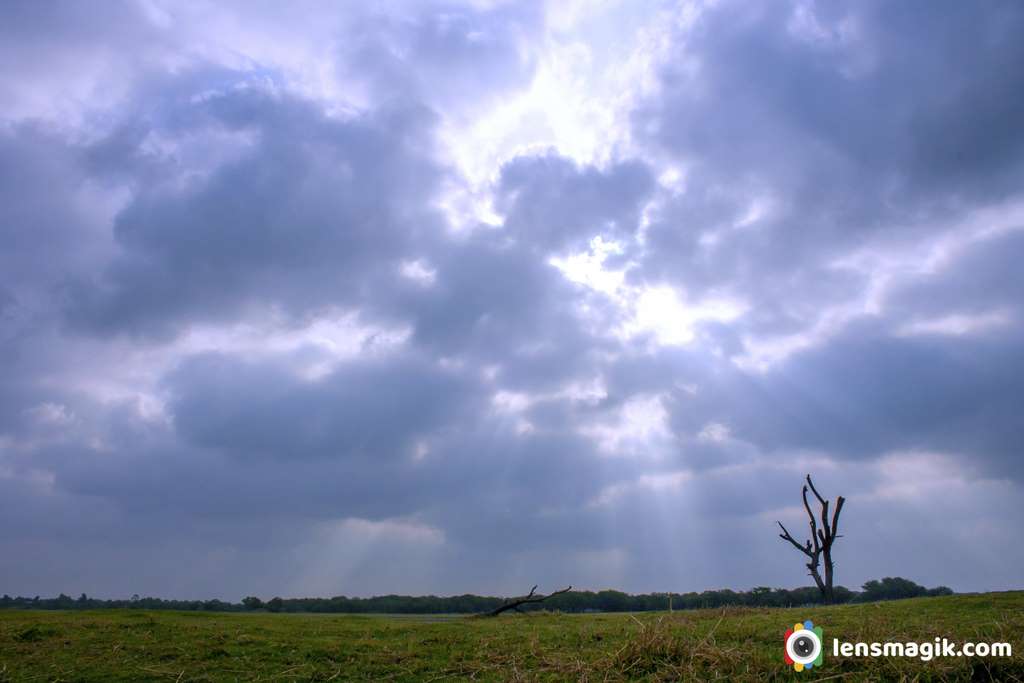
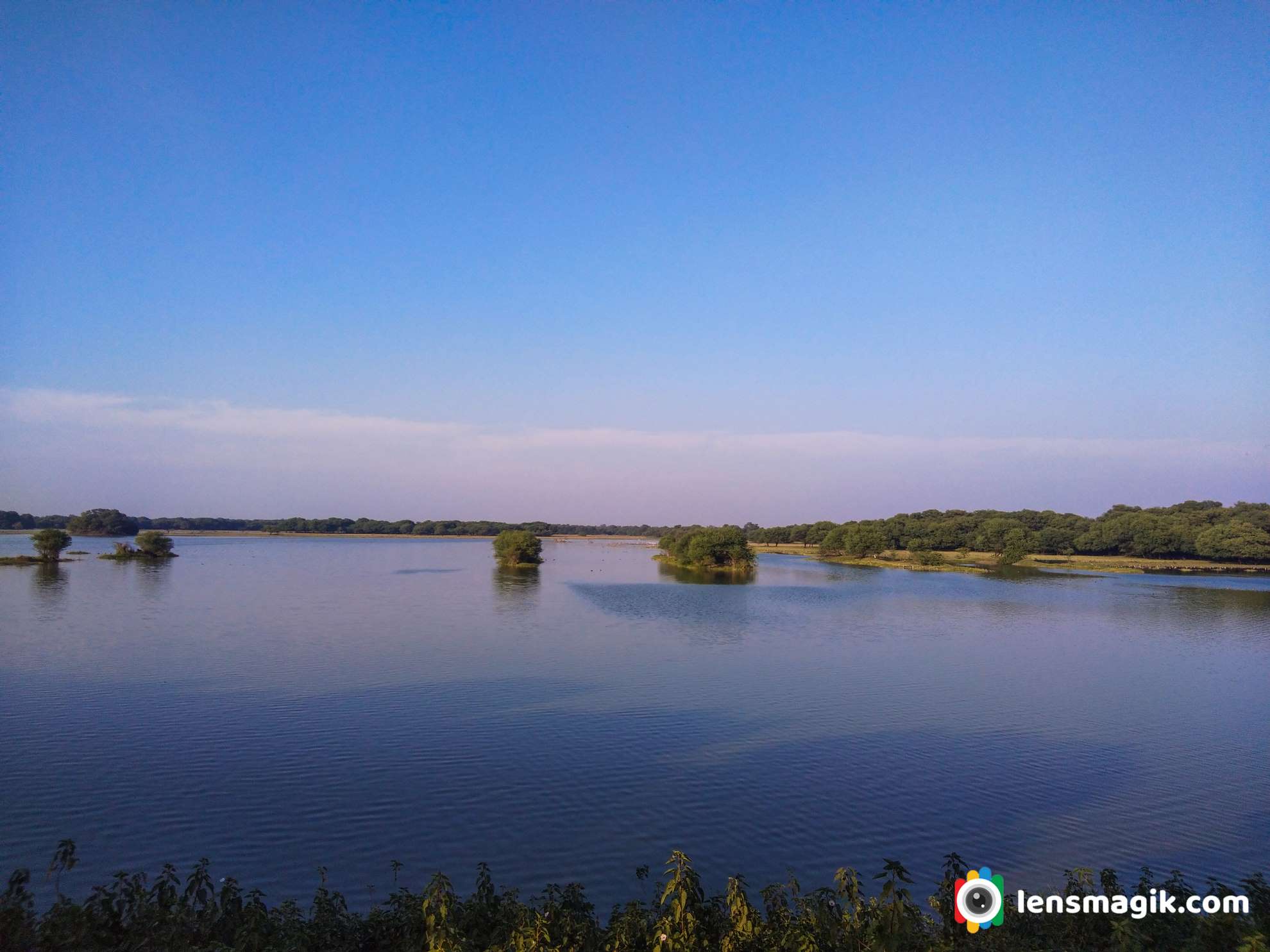
About Thol Lake / Thol Bird Sanctuary
Thol lake is located near Thol village and its area around 38000 acres. Lake faces all season winter , summer and monsoon. During winter temperature goes to 8 degree and in summer temperature goes to 43 degree. Thol lake is under control of Forest and Irrigation department of Gujarat. Thol lake water storage capacity is around 84 million cubic meters. Thol wildlife sanctuary is declared as Eco Sensitive Zone .
Flora and Fauna Thol Sanctuary :
Thol lake has many vegetation plants like Zizyphus, Acacia nilotica, Ficus, Capparis, Azadirachta indica etc. There are also some mix flora of Marshy and Aquatic plants reported in Thol Lake.
Thol lake is protected area and it is very good habitat for water birds. In thol bird sanctuary there are more than 150 spices of birds found . Among these more than 60 % of birds are water birds. Flamingo bird is most prominent bird of Thol Lake. Also Sarus Crane nest in large number here.
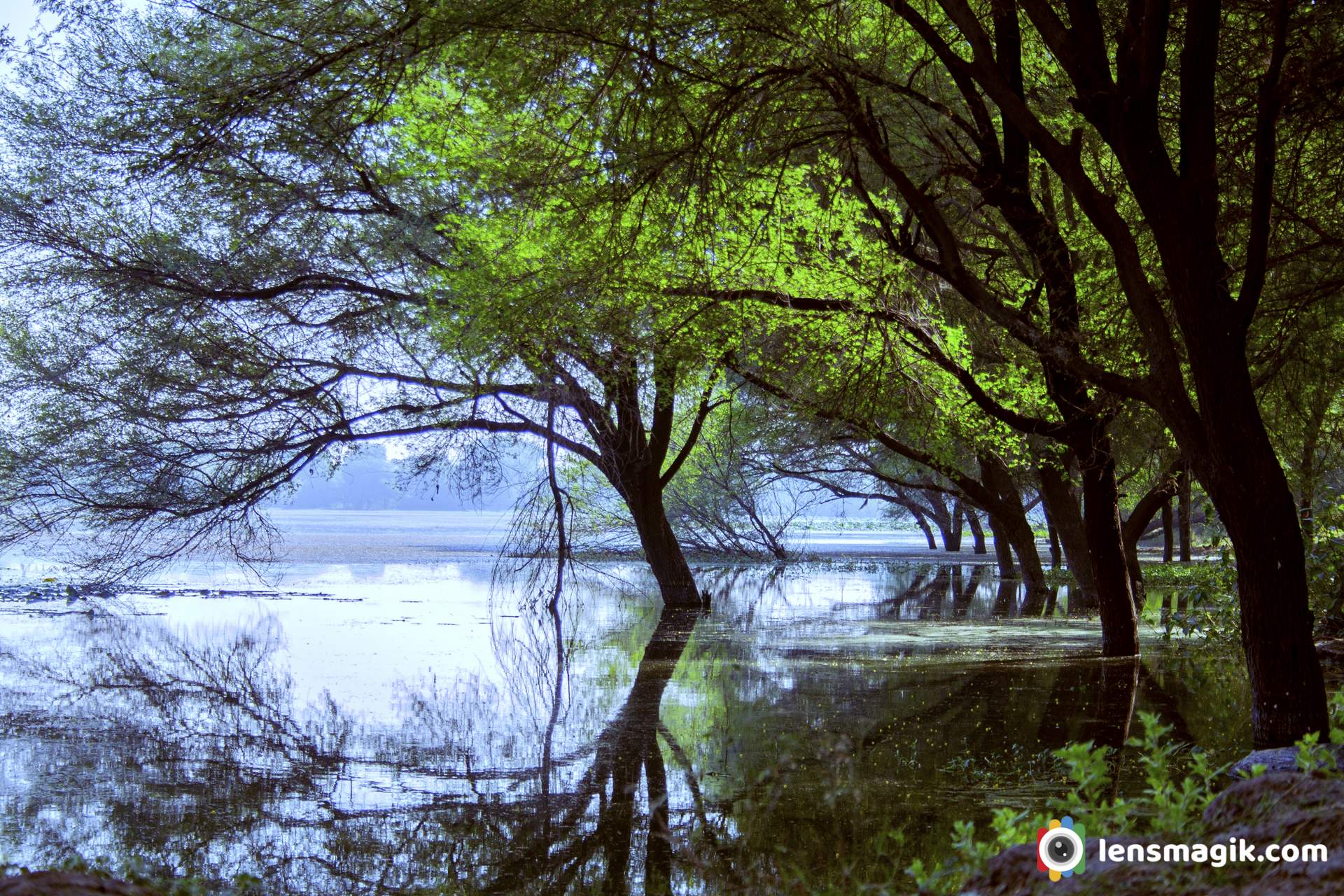
Famous Migratory Birds of Thol Lake
• Flamingos
• Sarus Crane
• Great White Pelican
• Mallards
• Bar Headed Geese , Grey Headed Geese
• Waterfowl
There are also some spices reported here like Dalmatian Pelican, Indian Skimmer, Greater Spotted Eagle, Indian Vulture and white rumped Vulture etc. In Mammals Bluebull, Blackbuck and Golden jackal reported here.
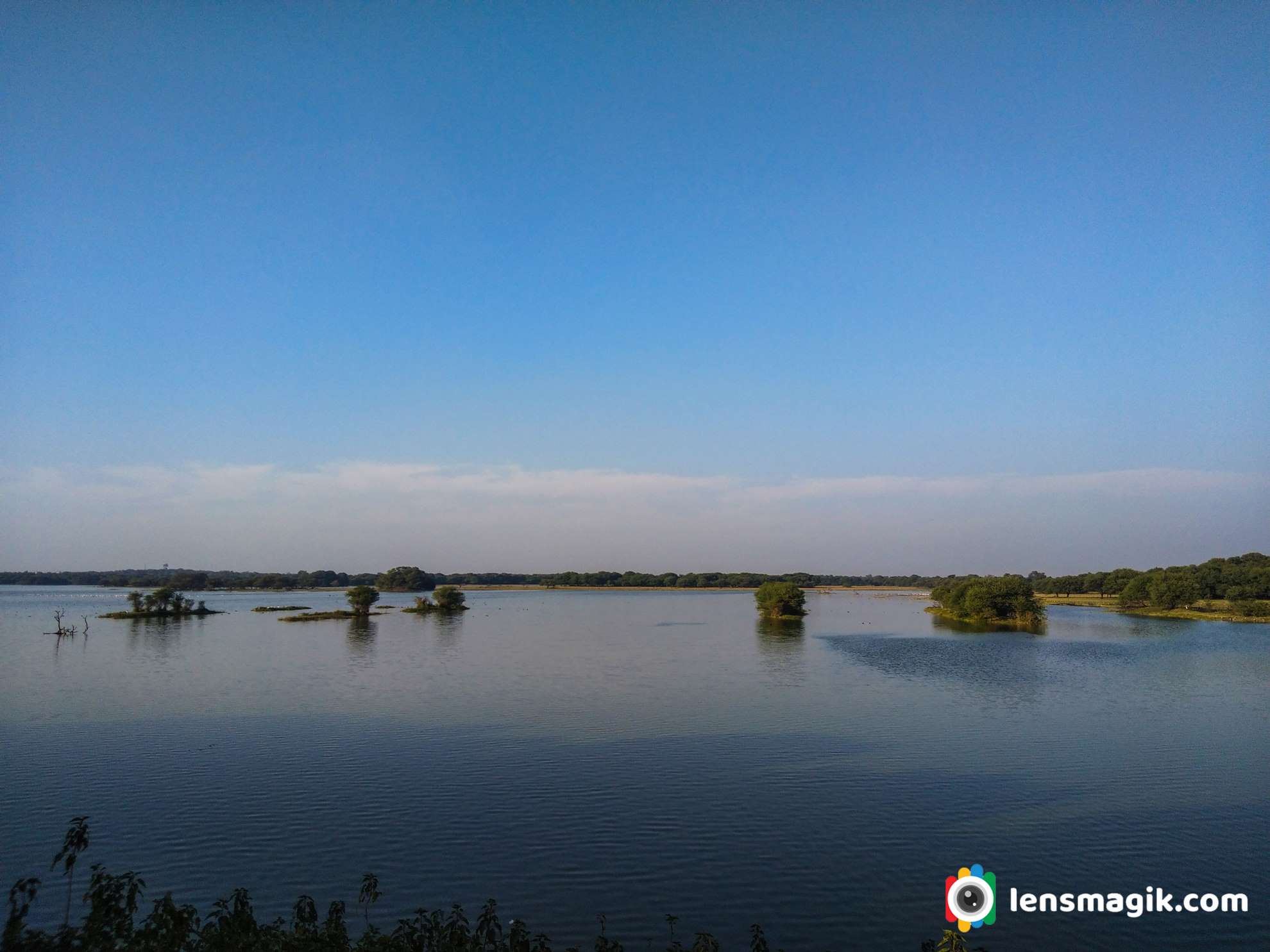
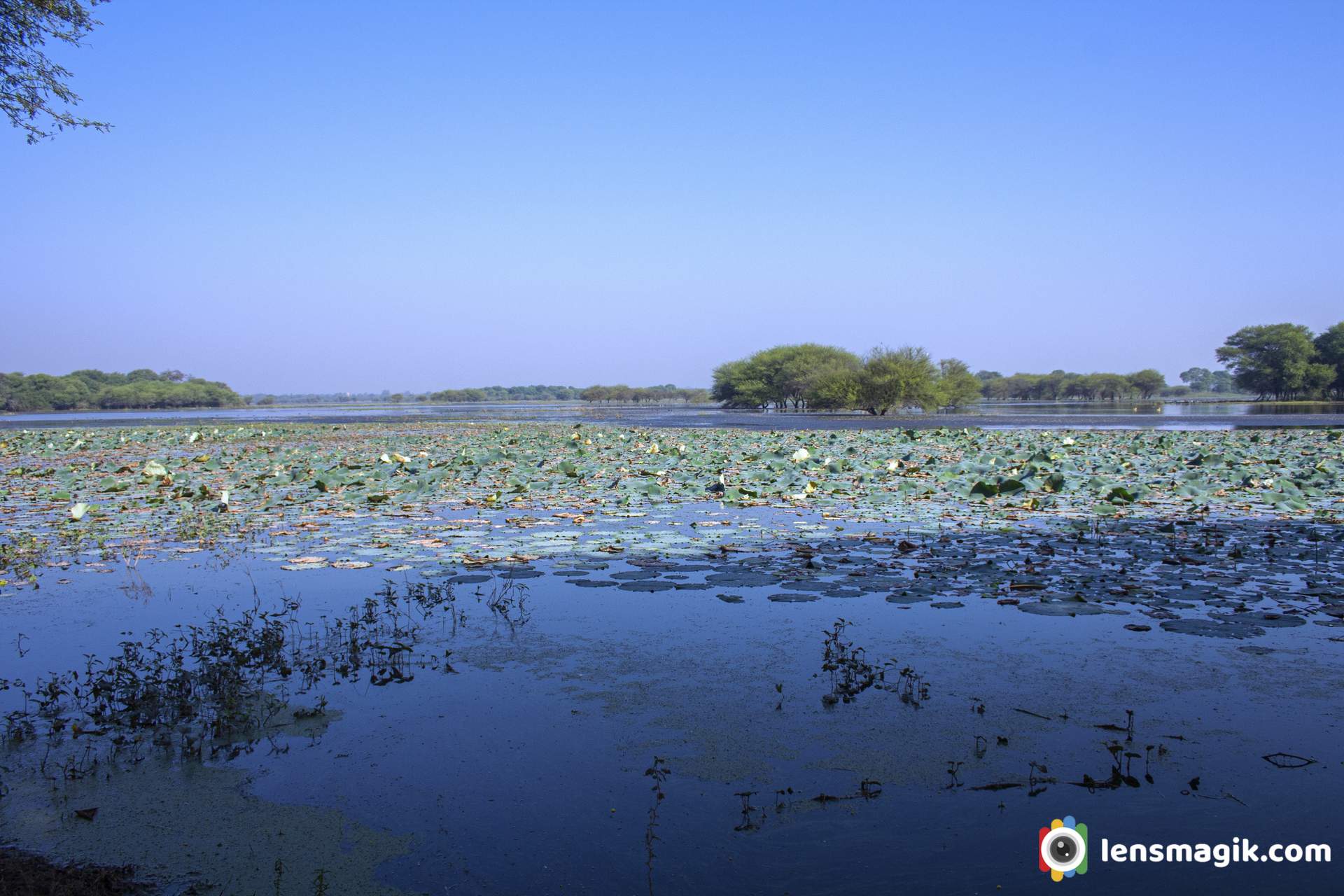
Thol Lake Timing and Fees :
Thol lake open everyday at 6 AM in morning and close at 5.30 PM in evening. Entry fees for Thol Lake or Thol sanctuary is 50 INR for per person. Also Camera fees extra at 200 INR and if you go via car then car fees also 500 INR. Foreigner fees are 10 $ per person.
Best Time to Visit Thol Sanctuary / Thol Lake :
Best time early morning for Thol Lake. In winter if you go before sunrise you can see Twilight sky amazing with lake shore and birds sound .During all season Thol lake has its own beauty. Every season you can visit at Thol Lake. But mostly during winter from November to March season is best for Thol Sanctuary visit. Because during winter lots of Migratory birds came here and stay for long time so for birding winter season is best at Thol Lake. Also during summer some of birds stays here like flamingos and pelicans, geese etc. So you can also see them in summer too. Also during summer water level of lake is low so may be the birds you can get in deep or sometimes closer. During monsoon most people don’t visit but if you like macro photography then you must visit Thol lake in monsoon. You can get some excellent macro subjects like waterdrops , Spiders, Insects etc.
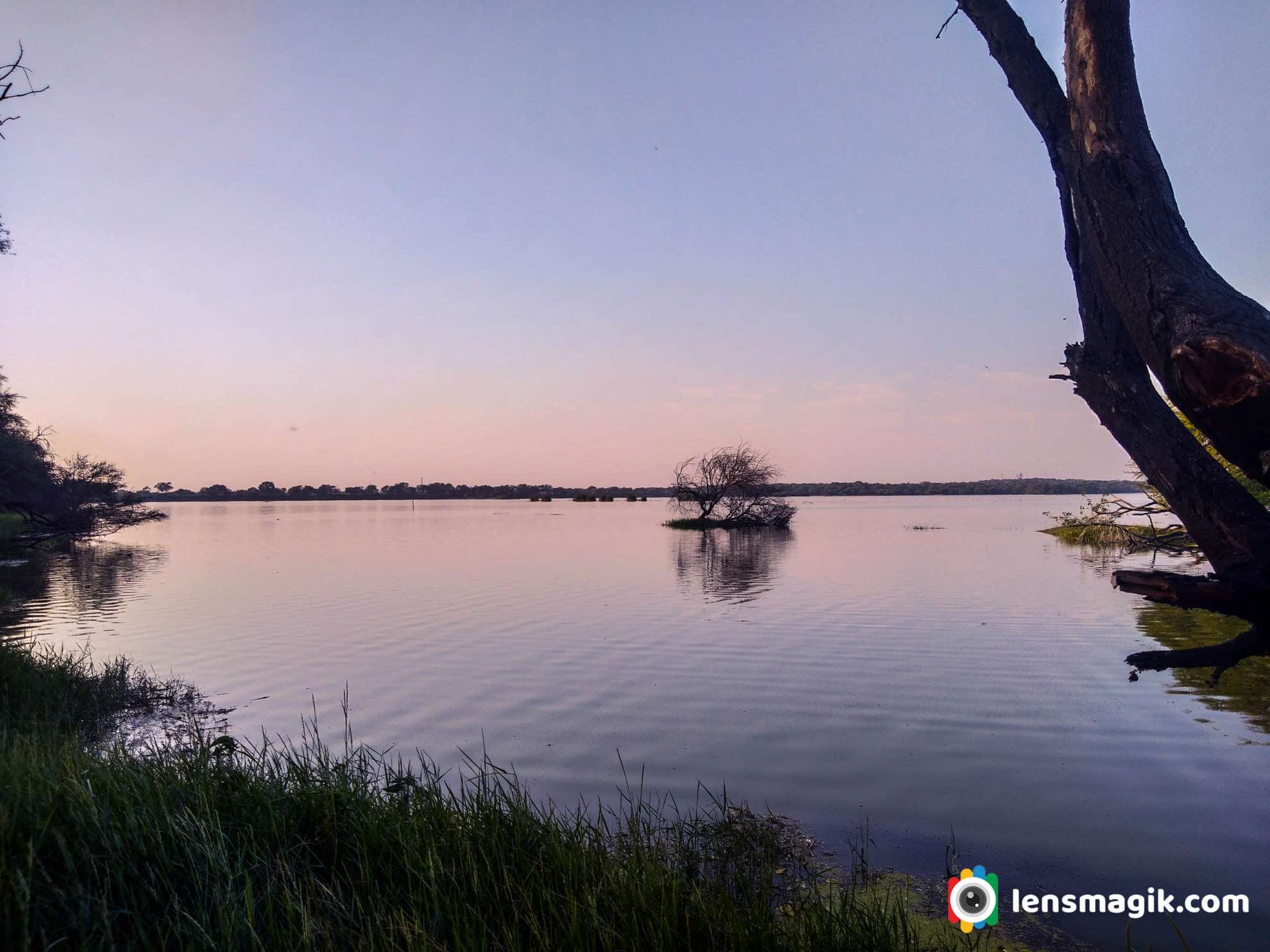
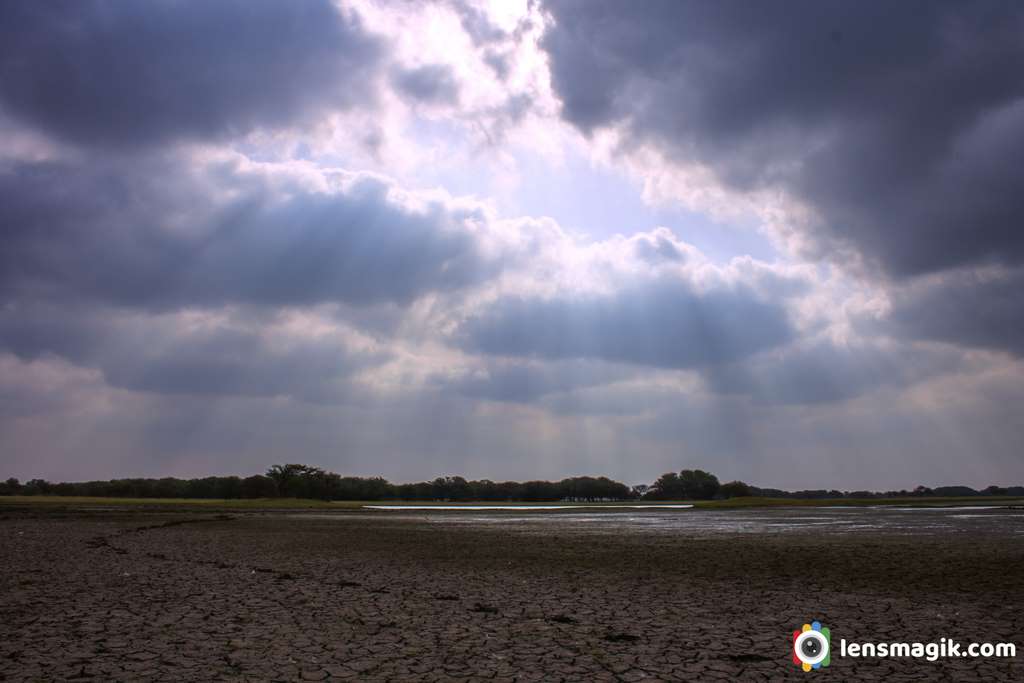
What to do and What not to do in Thol Lake / Keep in mind while visiting sanctuary in India :
• Keep silence in sanctuary
• Maintain discipline
• Keep sanctuary clean
• Do not throw plastic waste anywhere in sanctuary
• Protect wildlife
• Observe birds, mammals etc and protect them and identify them
• Follow rules of wildlife protection act -1972
• Don’t disturb birds and animals
• Don’t enter in sanctuary with liquor and inflammable objects
• Don’t make loud noice.
• Enter in sanctuary with permit only and keep receipt till you leave sanctuary
• Don’t feed birds and animals
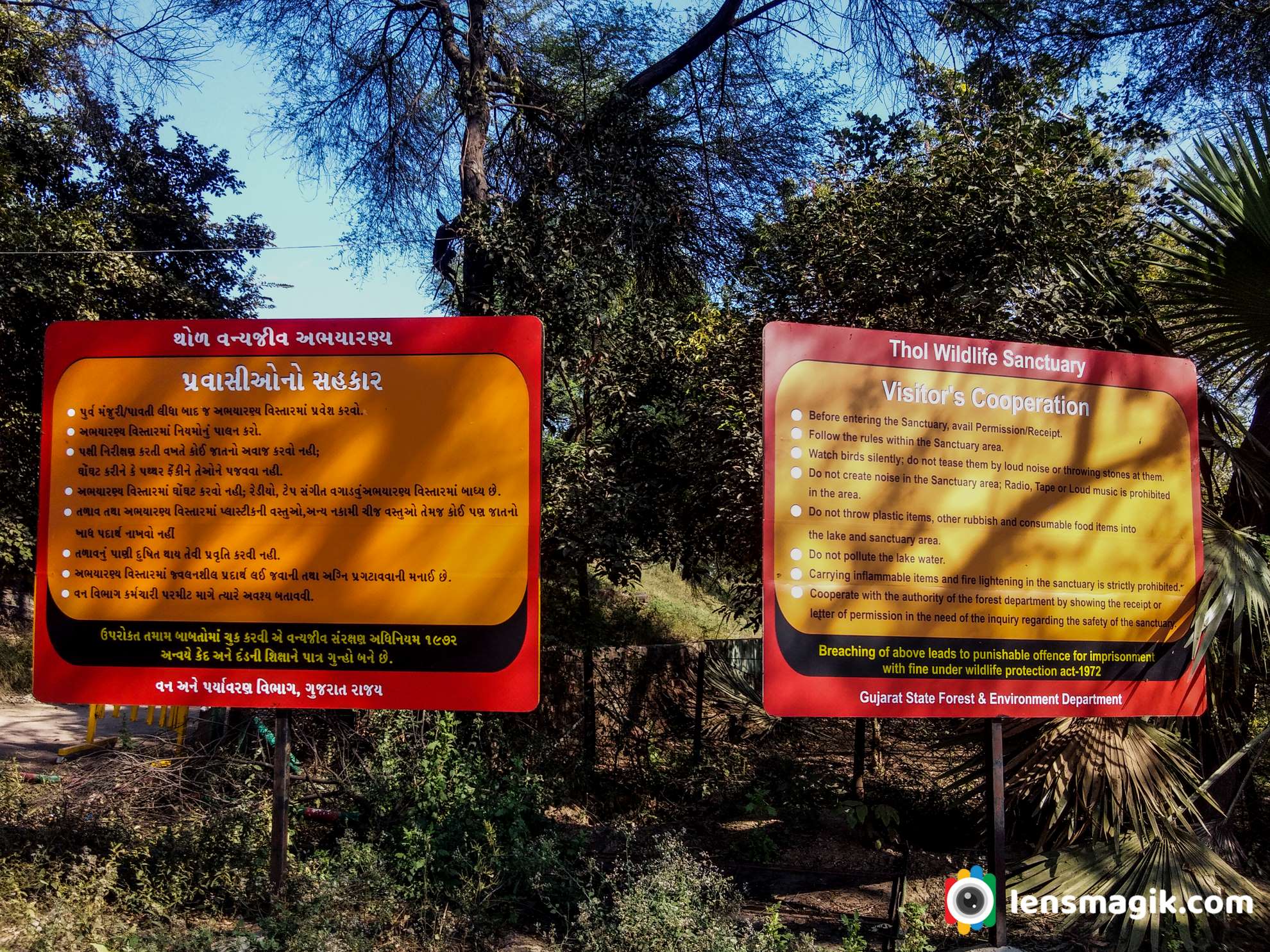
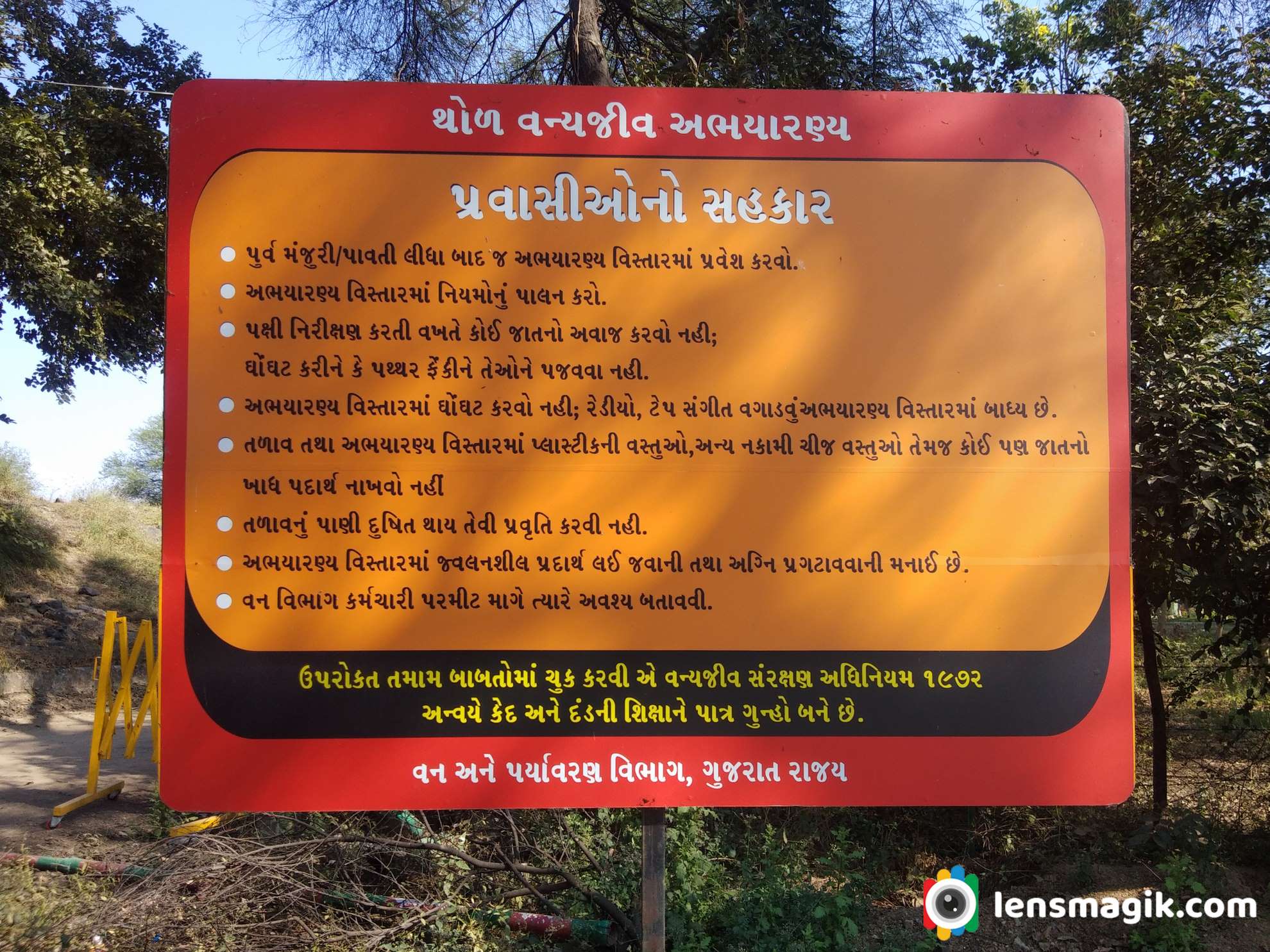
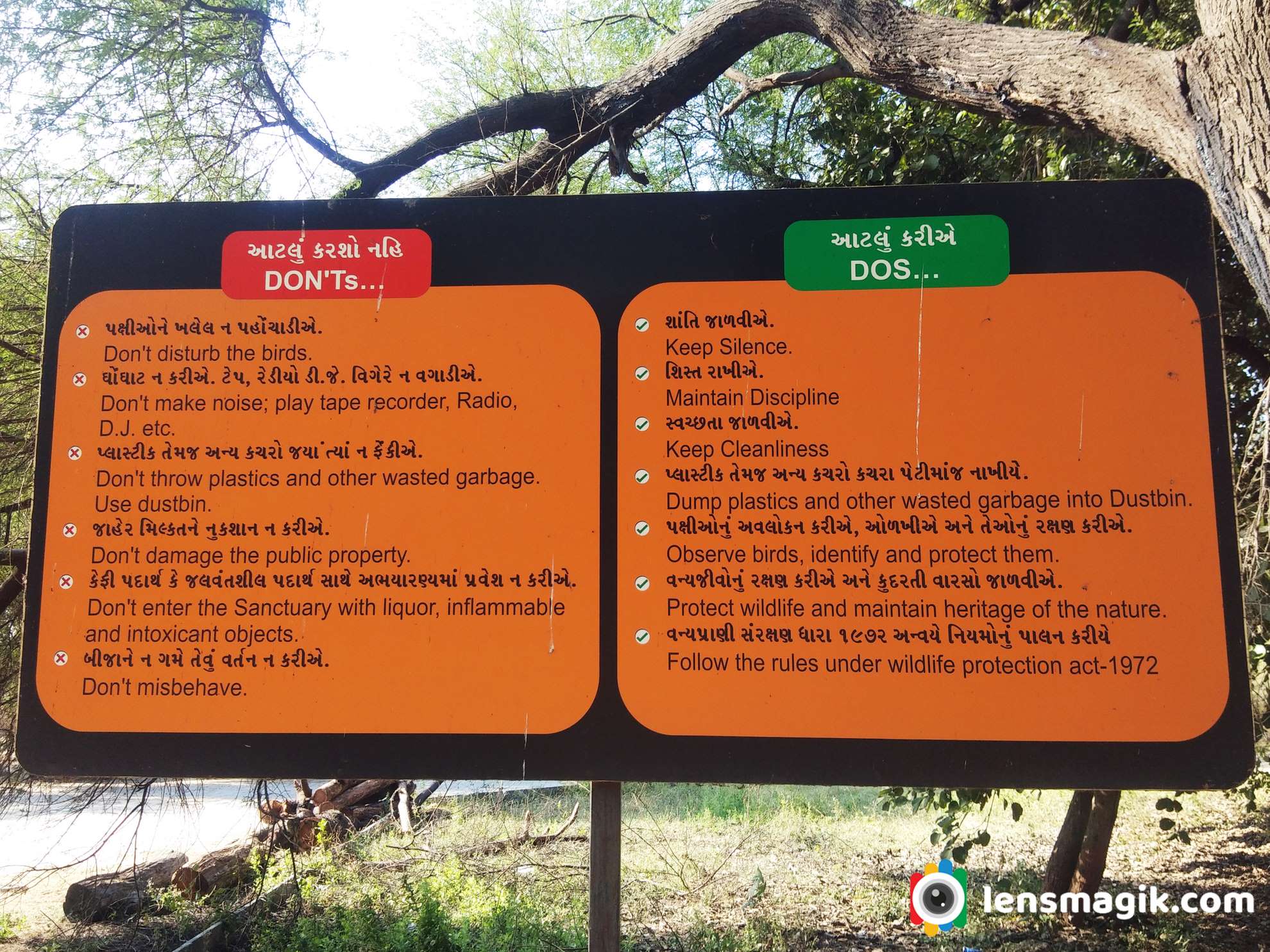
Where to Stay near Thol Lake :
Well near to Thol Lake there are not good places to stay at night but you can go near to destinations like Kadi, Kalol or Gandhinagar , Ahmedabad where you can get good places to stay at night. Nearest I suggest Kalol around 15-18 km or you can go Ahmedabad around 25 km.
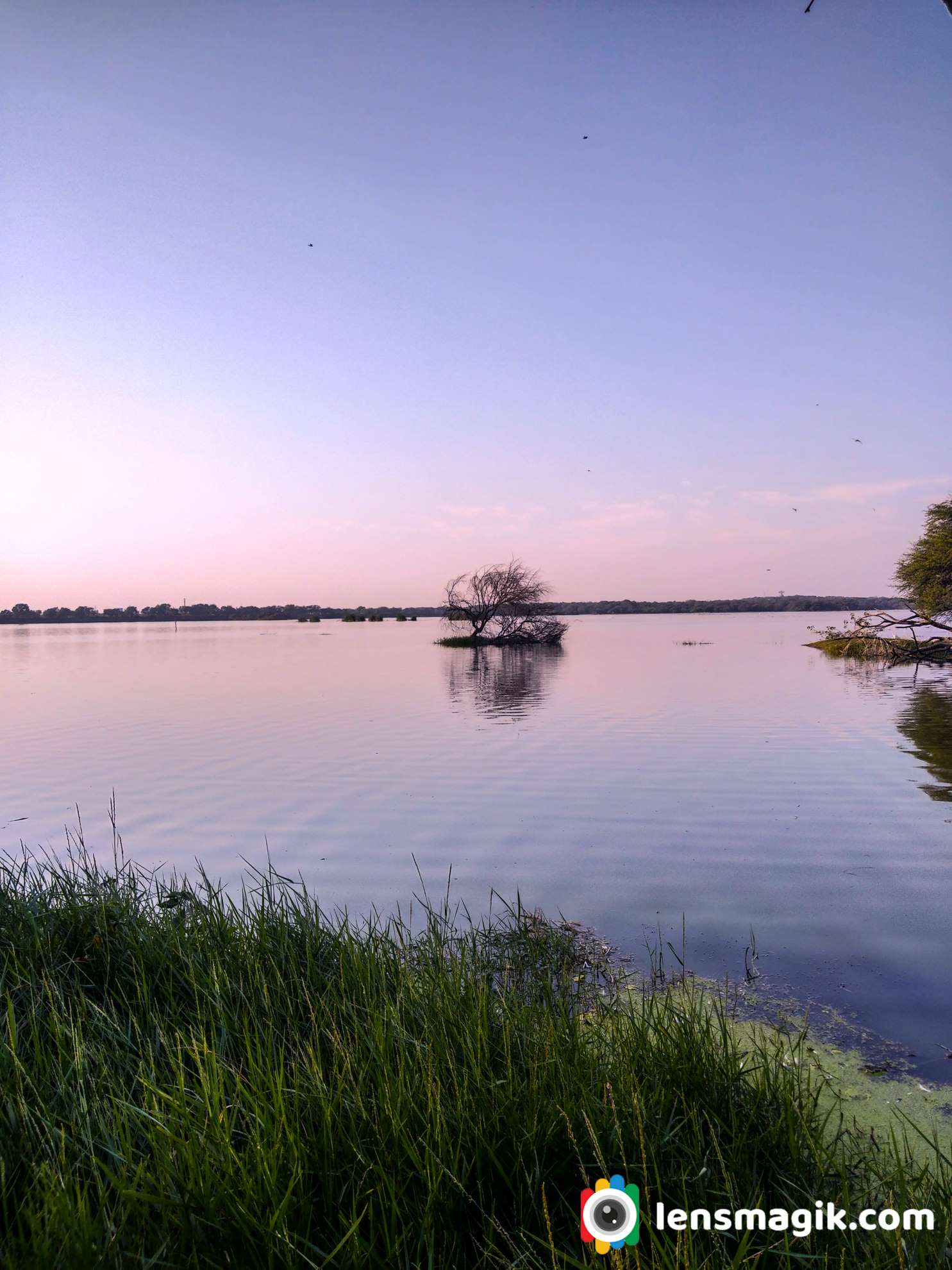

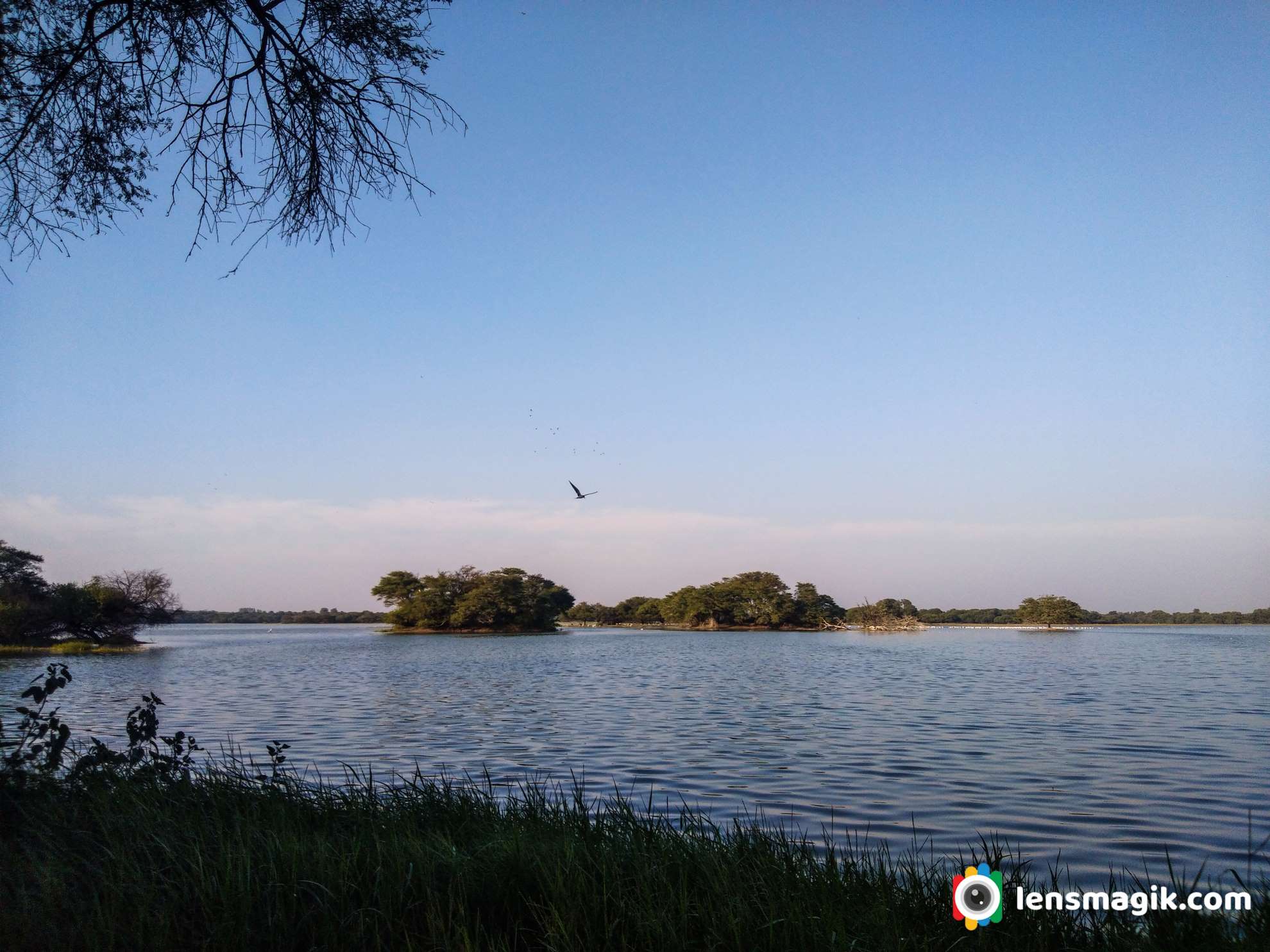


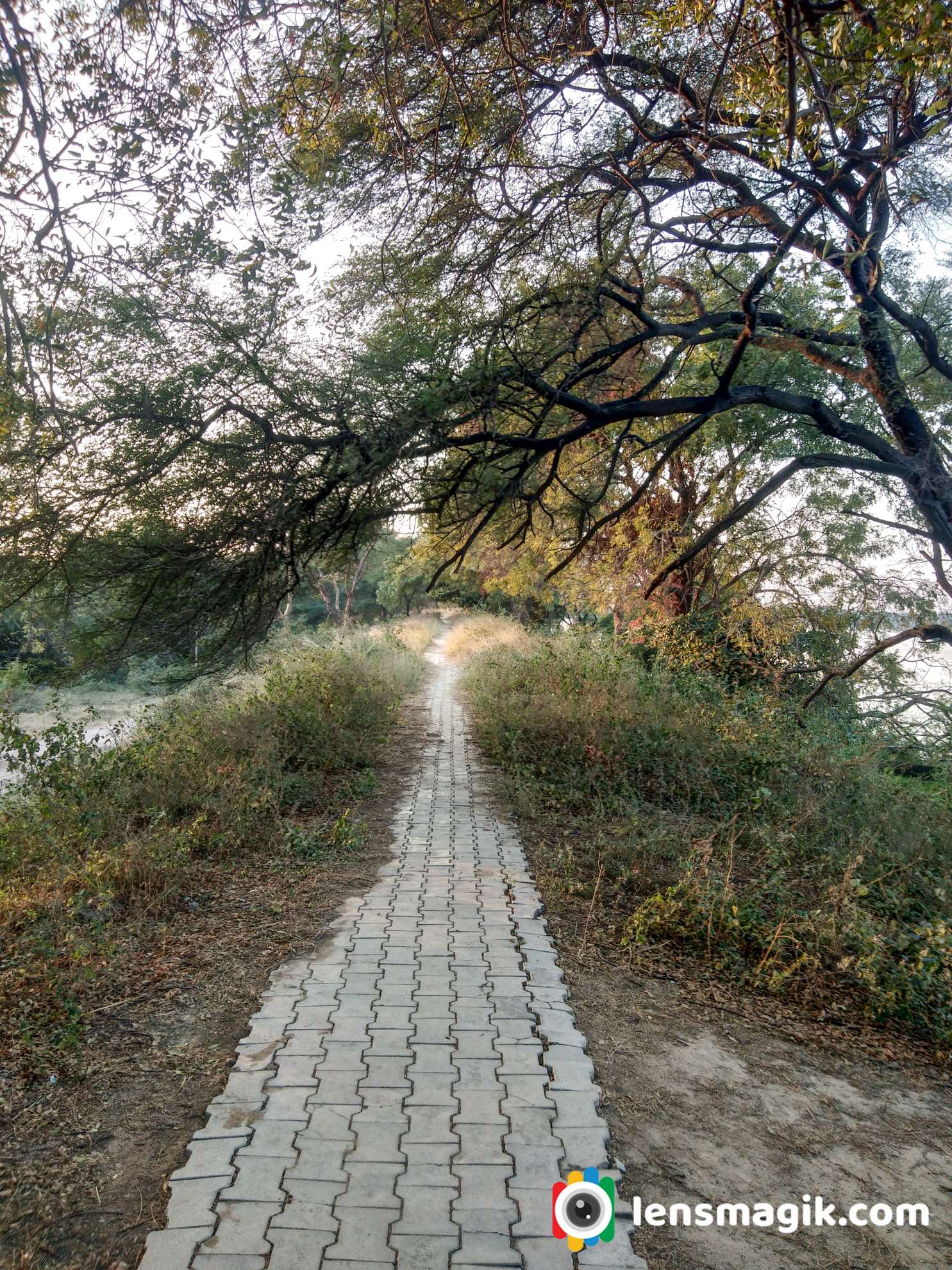
Places to Visit near Thol Lake :
If you are staying at Ahmedabad then go for Ahmedabad Darshan , Pol area of Ahmedabad and Adalaj Ni Vav ( Heritage places ) etc. Also go for fast food test at night at Manek Chauk and SindhuBhavan road there are lots of option for food lovers like Urban Chauk, Freezbee etc.
If you stay at Gandhinagar then visit Mahatma Mandir at Gandhinagar, Sarita udyan , Akshardham Temple etc.
I would suggest Modhera Sun Temple if you had some more time which is around 100km from Ahmedabad. For bird lovers and bird photographer I would suggest visit Little ran of Kutch (LRK) during Winter season, Pariej Lake, Indroda park Gandhinagar, Jessore Sanctuary Banaskantha etc.
How to Reach Thol Sanctuary :
Nearest airport is Ahmedabad and from Ahmedabad thol lake distance is around 30-40 km
Also for Railway station is Ahmedabad because you can get all frequency and destinations from Ahmedabad railway station.
Bahucharaji or Becharaji is located in Mehsana district Gujarat. It is a Hindu Temple of Hindu Goddess Bahuchara Mata.Bahucharaji Temple is in Bahucharaji town near shankhalpur village Mehsana. Bahucharaji Temple is in center of town. Bahucharaji temple managed by State Government. Ma Devi Bahucharaji is worshipped here as Goddess Bala Tripura Sundari.
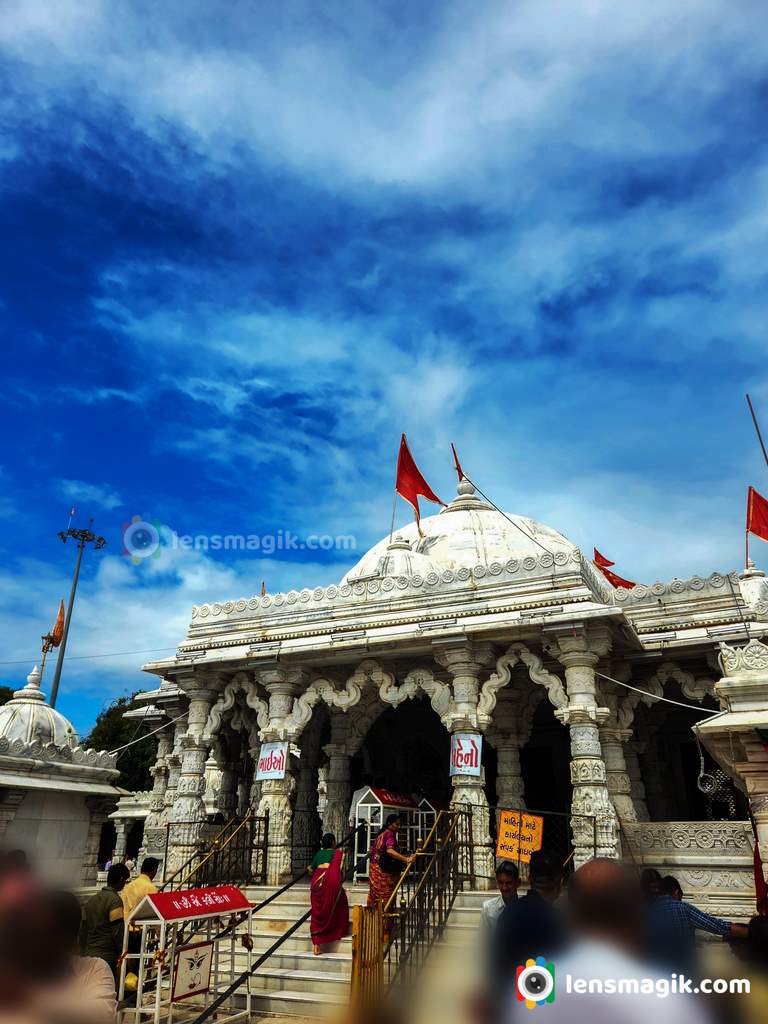
Story of Bahucharaji temple
As per old people says Dandasur demon was stayed near Becharaji and won Patallok, Mrutyulok and Devloka all three lokas. The Devil has boon from Lord Shiva that a godeess appeared against him in small girl form. All 3 lokas Devas went to Goddess Parambaa to save them from demon. The Bahuchar mata appeared in form of small girl for fist time at Varakhadi tree . So bahuchar mata known as Bala Bahuchara Mata. Goddess killed demon with Trishul and bought peace for people of earth.
- Main vehicle of Bahuchar Mata is cock.
- Bala Yantra of Crystle and encased In gold is worshipped at temple.
- Bahuchar Mata carries sward on top right hand, Abhay mudra on bottom right, a text of scriptures on top left and trident on bottom left.
- In my family we believed that new born male child first time hair removed ( Mundan ) after 1 year in temple.
- It is also believed that any new child don’t speak properly then bought here and on his behalf cock donated to Mata and in few days child can speak properly.
- All over from India devotee came here and pray for blessing of Goddess. On purnima ( full moon ) day is special for devotees. On Chaitri Poonam 5 days fair arranged near the Temple and in city.
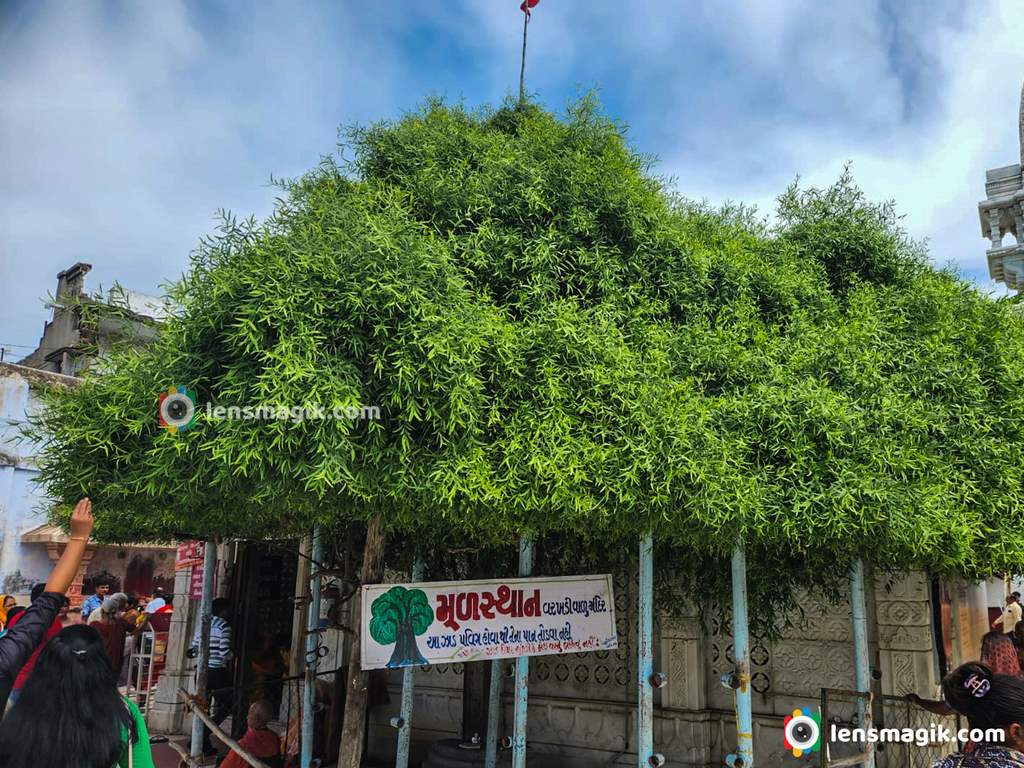
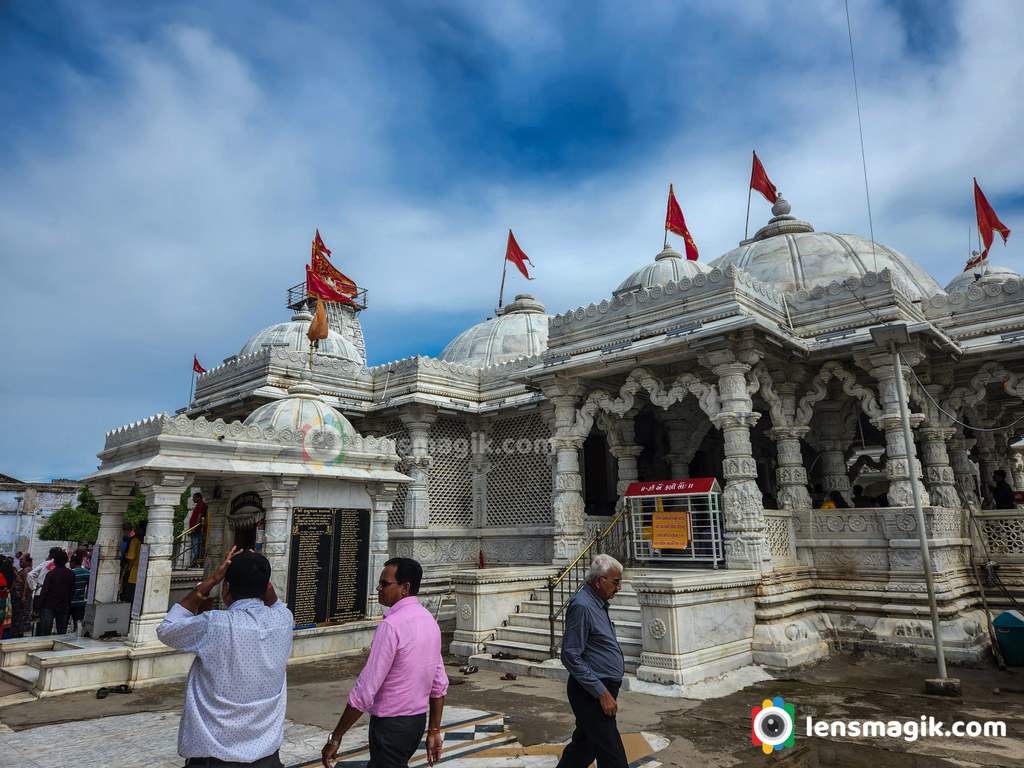
Where to Stay in Bahucharaji or Bechraji :
There are lots of Dharamshala , Hotels, Guest Houses in Bahucharaji. All places are in good rate available. People can also go to Mehsana , Shankhalpur for stay . Also people can go to Modhera Sun Temple for visit.
Bahucharaji Mata Temple Darshan Timing :
Bahucharaji Mata temple darshan timing is from 5.30 AM to 10 PM .
Nearest Airport : Ahmedabad
District : Mehsana
Pincode of Bechraji : 384213